new posts in all blogs
Viewing: Blog Posts Tagged with: authors and illustrators, Most Recent at Top [Help]
Results 26 - 50 of 460
How to use this Page
You are viewing the most recent posts tagged with the words: authors and illustrators in the JacketFlap blog reader. What is a tag? Think of a tag as a keyword or category label. Tags can both help you find posts on JacketFlap.com as well as provide an easy way for you to "remember" and classify posts for later recall. Try adding a tag yourself by clicking "Add a tag" below a post's header. Scroll down through the list of Recent Posts in the left column and click on a post title that sounds interesting. You can view all posts from a specific blog by clicking the Blog name in the right column, or you can click a 'More Posts from this Blog' link in any individual post.

By: Kathy Temean,
on 11/7/2014
Blog:
Writing and Illustrating
(
Login to Add to MyJacketFlap)
JacketFlap tags:
inspiration,
Advice,
Process,
England,
illustrating,
authors and illustrators,
Illustrator's Saturday,
Cheltenham College of Art in Cheltenham,
Ilustrationweb.com,
Sholta Walker,
Interview,
Tips,
picture books,
Add a tag
 Sholta Walker was trained and graduated as a painter in 1988 and since 1995 he has worked professionally as a full-time artist and illustrator.
Sholta Walker was trained and graduated as a painter in 1988 and since 1995 he has worked professionally as a full-time artist and illustrator.
The great majority of his work has been for children, with clients across the World, including Harper Collins, Random House, Egmont, Annick Press, The BBC, Macmillan and Oxford University Press.
Most of the illustrations you see here combine digital techniques with more traditional skills and media. He uses vigourous ink line work, which is usually digitally coloured and enhanced. This has given him an opportunity to produce illustrations for my clients which give great scope for expressing ideas.
Some of the work shown here is also available as limited edition
prints.
His published books include Long Grey Norris, King Arthur, Bug Wars and The Beastly Beast.., a compendium of short stories by author Garth Nix. I have recently completed work for a book by Michal Kozlowski called Louis, the Tiger Who Came From the Sea.
Here is Sholta discussing his process:
Creating ‘Bug!’ and Brer Fox
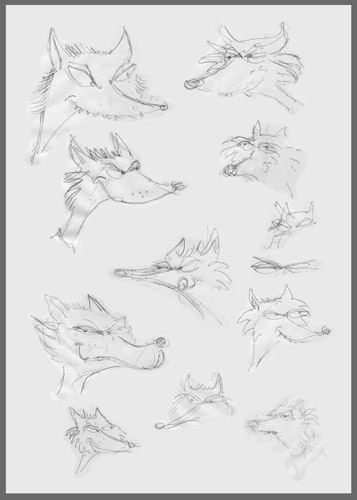
I made these drawings a few years ago. Both at the time were fairly experimental, but borrowed heavily from methods I was already regularly using. Brer Fox was a character I was asked to develop along with his nemesis Brer Rabbit, for a UK publisher. Bug! I made when I worked briefly with an animator-friend while he was working on his Masters Degree in animation.
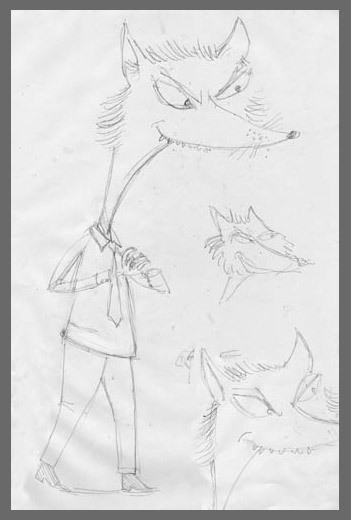
The picture always begins with a drawing on paper. If I’m working on a character I always rough him or her out in pencil. It usually takes several attempts to create the character I’m after. It’s important to get this stage right. Any decisions made now will set the tone for the whole image and are likely to remain with you to the end of the project. The drawing process helps inform the image you have in your head, which then feeds back to your drawing. At its best this busy two-way street of drawing and imagining is a marvelously efficient creative process.

When I have the character I want, I either trace it through a lightbox or work directly over the top in Indian ink with a dip-pen. The type of commission will dictate how free and expressive I am with the pen. In the case of Brer Fox particularly, I was trying to work very freely. One way I do this is to create all the initial pencil sketches as quickly as I can. When I find the drawing I like I then reproduce it by drawing over the top with my pen at a similar speed. This gives the drawing energy and enables me to exploit the naturally temperamental nature of a traditional drawing nib when it’s loaded with ink.
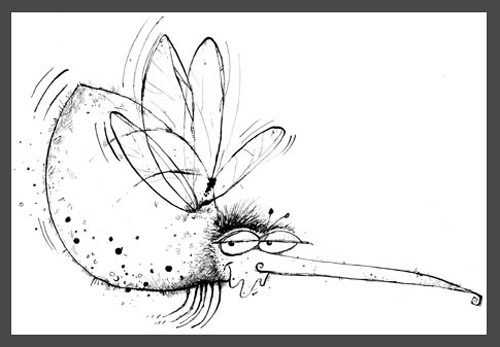
While still fairly loose, Bug! was a little more considered. Also, I created the bug character and his background as two separate drawings and combined them in Photoshop later.
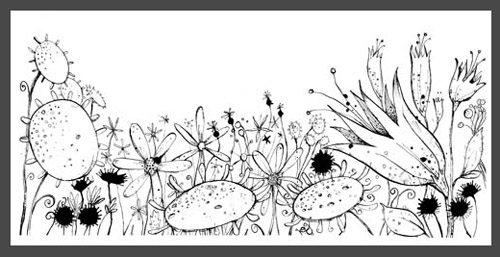
Once the ink is completely dry, any pencil marks are erased and the drawing is scanned and opened in Photoshop. The ink line now has to be separated from the the paper surface. To help improve definition I usually increase the contrast before selecting out the black lines in one piece. The drawing part of the scan is then pasted into a new document, creating a new layer over a white background layer. The original scan is now discarded. At this stage I take the opportunity to have a good look at the image and to erase any dust specks and unwanted ink spots that were picked up in the selection. I may also make any adjustments or small additions to the drawing using Photoshop’s pencil and brush tools. Finally I ‘multiply’ the layer to prevent any whitening of the pixels in the final artwork. Because I like the honesty of a hand made ink drawing I make no further digital enhancements to it.


In the case of Bug!, the character’s colour was created in Illustrator. I imported the line drawing (without the garden) into Illustrator, then, on a new layer, between the white background and the drawing layer, I put in the colour in a series of simple, fairly roughly drawn shapes. In more complex images I may create the colours on several layers, but on a simple image like this, one colour layer is sufficient. Brer Fox was slightly different. He stayed in Photoshop because in this case I didn’t want the flatter look that Illustrator tends to give my drawings. The layering technique however is identical, with the basic under-painting on the figure created using the lasso tool to make a shape into which I drop the colour. Further painting, shading and colour were then added with various brush tools. A basic background layer is also quickly rendered at this stage.
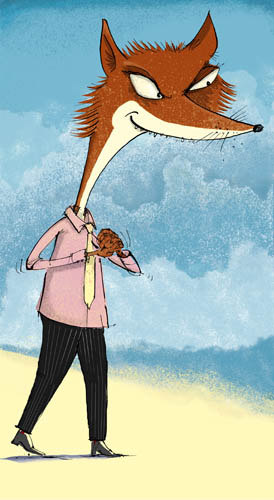

To create the textures in Brer Fox I went back to paper and ink. All the effects in this image are made using either ink applied through a mouth diffuser, (a simple breath-powered spraying device) or from an old toothbrush. The results are then scanned and separated out as in the original drawings. They are then collaged into the artwork, each on a separate layer. For Brer Fox I also experimented with some scans of torn paper. With Bug!, only the garden received this treatment. Once colouring of the insect character was complete in Illustrator, I returned him to Photoshop and combined him with the garden scene that I had drawn and coloured separately in Photoshop using the textures I made in a similar way to those previously described.

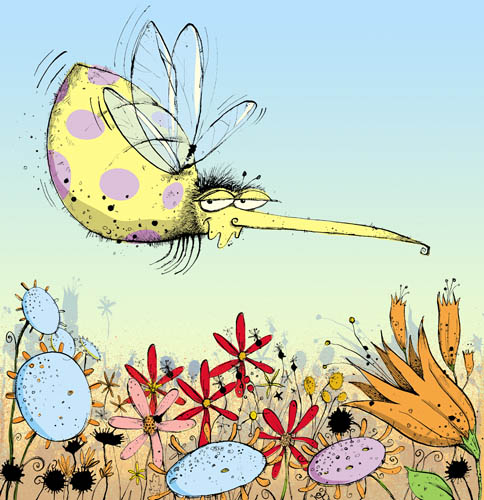
Finally, I added any extra bits and spent some time continuing to tweak the drawing. Some layers are switched off or discarded and occasionally some basic effects are added as in Brer Fox’s drop shadow. I’ll often go back at this stage and draw some new elements (extra flowers maybe) that I think might further improve the image. These will then be scanned and added to the drawing, colouring them up as necessary. A key feature of much of my work is that the process remains very fluid right up to its completion.
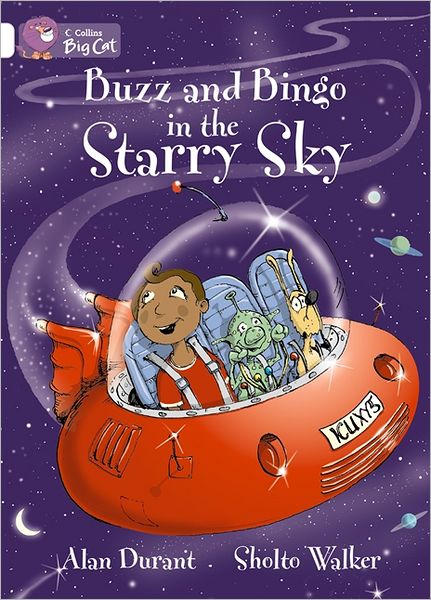
How long have you been illustrating?
Full-time, around twenty years. I spent a few years before that working part time on occasional commissions that came my way.

What made you choose to you study art at Cheltenham College of Art in London?
That’s Cheltenham College of Art in Cheltenham, England. Cheltenham is a large town about one hundred miles West of London. I had a bit of a shaky start in fact. In England, most visual arts degrees begin with a year-long Foundation Course, which most students are expected to complete, usually at a different college, before beginning their three-year degree proper. My foundation year was very enjoyable and successful, but I left still unsure in which direction I was going to take my art. Eventually I chose Fine Art with a painting specialism, but I think my lack of certainty was picked up during the several interviews I attended at various art colleges and found to the surprise of most people that knew me that I wasn’t offered a place at any of them on the first round. So I got a job and tried again a few months later. I was finally accepted at Cheltenham. I’d like to say this was the college I had my sights on all along; that I had studied the work of the tutors and lecturers there; that I was drawn to the verdant Cotswold Hills that rise majestically above the town, but none of that would be true. Nope. It turned out they were the only college that would have me.
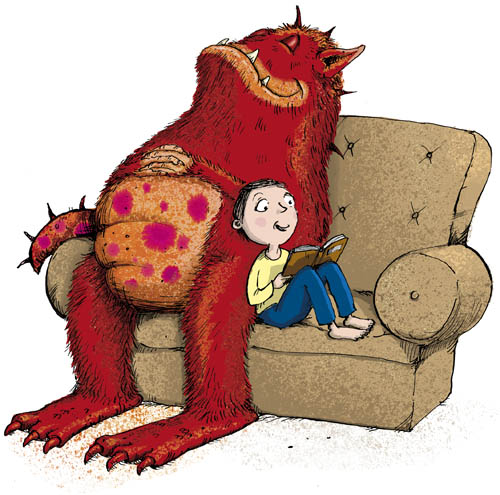
What was the first painting or illustration that you did where someone paid you for your artwork?
I’m not too sure, but I think it was probably a tiny drawing for one of those classified small ads you see in the back of newspapers. It was around 1986.
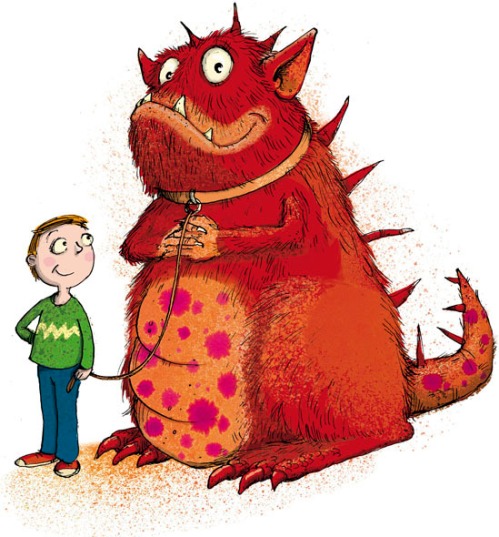
What type of job did you do right after you graduated?
When I graduated I had no idea what to do. Looking back I think plenty of ex-students, particularly with art degrees find themselves in a similar situation. I’m not sure how it is now, but there was absolutely zero consideration given by the colleges as to what their students would do when they left. I don’t think this is necessarily a bad thing because fine art courses should not be job-training courses. So when I left I discovered two things pretty quickly: first, I needed to earn some money and second, degrees in Painting do not make you very employable. I was no longer comfortable at home, so I moved to London where most British students seem to pitch up after graduating. I worked briefly at the famous Cornelissen and Son art shop near the British Museum. The shop’s been trading since 1855 and has and still does supply materials to some of the greatest names in British Art. Then I bought a bike and spent a year as a bicycle courier, risking life and limb on the London streets.
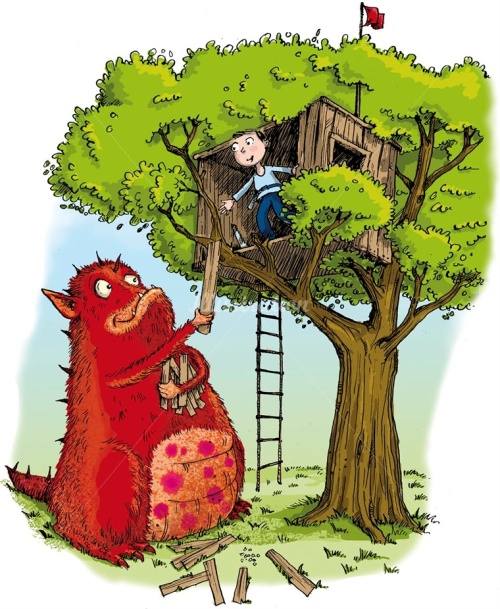
How did you decide you wanted to go into the freelance art business?
After a year or two of struggling to pay my way in London, I thought I needed to make a decision. As a child, making pictures was always something I enjoyed doing and was good at. My degree had pointed me towards traditional oil painting but at that time I could see no way that I was going to be making oil paintings for a living. It was a very slow start. My dad was publishing a music magazine at the time and he managed to convince the editor (thanks Paul!) to ask me to try illustrating a few things. The jobs were very occasional and fairly straightforward, but it was these simple commissions that really got the ball rolling for me. I continued working in various low-paid jobs, but it was those occasional illustration commissions that gave me a sense of purpose. Doing something I enjoyed while being paid to do it. I decided fairly quickly that this was what I needed to pursue.
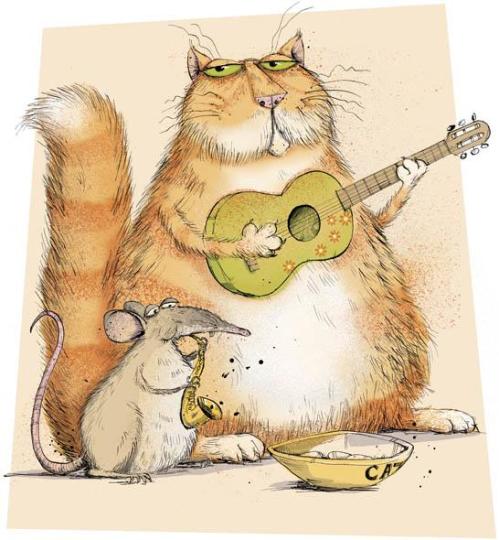
When did you decide you wanted to illustrate for children?
I never decided, my work seems to lend itself to that. When I began as an illustrator I just drew stuff. I had no idea what the illustration business was like and never gave a thought to the idea that illustration could be classified into ‘types’. After my degree, my first portfolio consisted mainly of miniature versions of what I had been producing at art college. Many were very dark and introspective, typical art student stuff really. The colours were full of dark reds and blues. Lots of angst. I was still somewhere between a painter and an illustrator. All my techniques were from three years’ training as a painter working in oils on canvas, so as an illustrator I really had to start from scratch. That meant finding new materials and methods that suited my approach and were practical. As my work developed, much of it became brighter and I found I could express and develop in my work a kind of knowing humour and a sense of the absurd that I have always enjoyed and has always been a part of my character I think. Adults seem to like this at least as much as their children and it appears in most of my best work. I think that this has always been there in my work even during my student days, but as I’ve evolved as a working illustrator I’ve learned to refine it and make it more accessible.
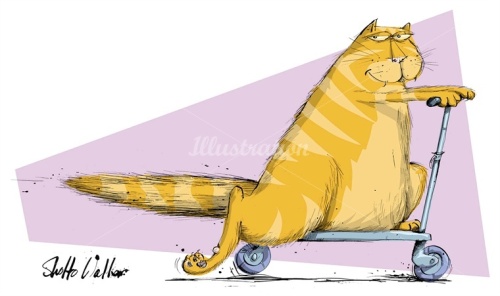
How did you get the job to illustrate Buzz and Bingo in the Starry Sky with HarperCollins?
Wow, that one was quite a while ago. It came through my agent. In fact, now I think of it, it was probably the first full book commission I had with Harper Collins. I think it was also the first book I illustrated digitally. It was actually part of a series for young readers and as far as I’m aware has been very popular in British schools. I have met several parents over the years that know me by name and then realize their son and daughter is learning to read with one of my books. It’s always nice when that happens. My sister lives in Spain and she called me one day to say that her daughter was reading a book I had illustrated as part of her reading program. That was perfect because I had included a dedication to her and her brothers on the title page. I think my sister cried.

Have you done any other books with HarperCollins?
Yes several. At least four or five.
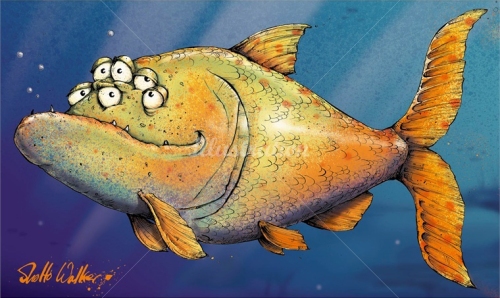
What was the first picture book that you illustrated? And how did that contract come your way?
My first picture book was probably one of the Buzz and Bingo series. I had illustrated a few books before that, but they were more for slightly older readers, so they weren’t strictly speaking ‘picture books’. I had worked on other commissions for Harper Collins prior to Buzz and Bingo so I had built up a bit of a track record. I often think that is, at least in part, how it works. Once a client is happy you can make a deadline, you are professional and reliable and assuming they like what you do of course, you are likely to be asked to take on bigger projects.
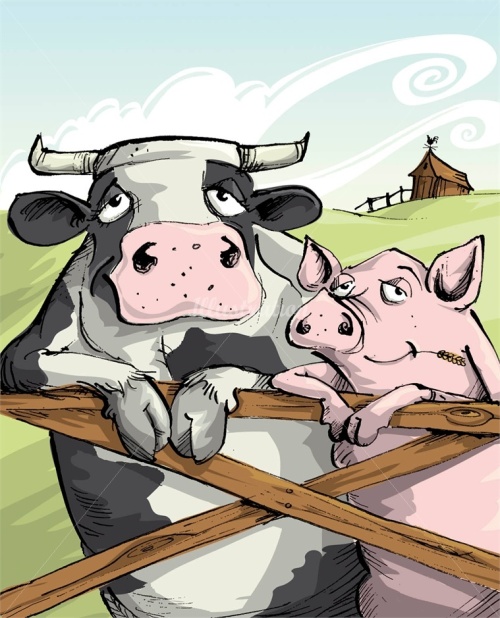
How many books have you illustrated?
Well, if you mean both part books and as full cover-to-cover commissions, then the answer’s probably hundreds. If you mean whole books, then probably around thirty.
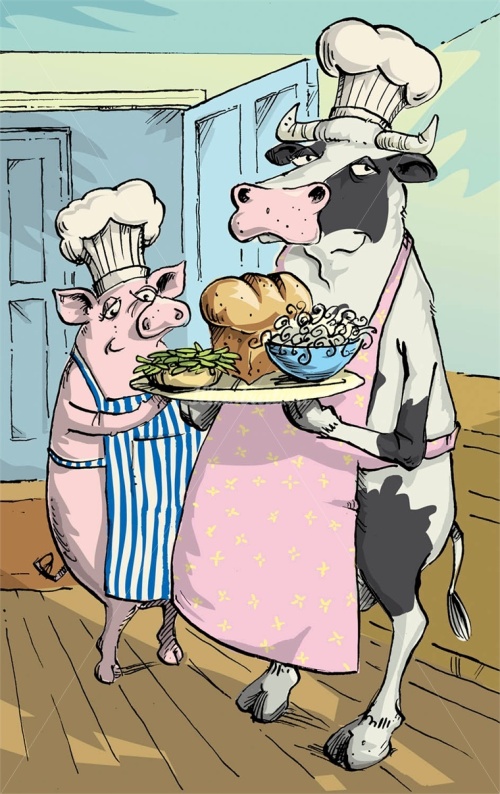
Before you had an Art Rep., what did you do to help connect with art directors and editors and find illustration work?
It was a long and painful process. Once I had set my mind to being a professional illustrator I knew I needed to start building a portfolio to show round. I put together about fifteen drawings that included several of the commissions I had been picking up as well as some of my own work. One idea I had was to buy a few magazines and find articles in them that I felt I could illustrate. If they were successful I would then include them in the portfolio. The next step was to travel to London from Bath where I was by then living and show my work around. In those days, before the internet and online portfolios, this was the only way to do it. I must have spent a fortune on fares, not to mention postage for all the mail shots I made. I picked up very little direct work from all this effort and expense, but I don’t regret it at all because I really got to see what it was I needed to do while showing me what the publishing, design and advertising world outside my studio really looked like. I also still remember to this day some of the dozens of busy art directors and designers I saw who, almost to a person, patiently leafed through my portfolio and usually sent me away with some valuable words of advice. Anyway, I did that for a year or so until I decided it was time to reassess the situation. It was then I turned my mind to getting an agent. I thought if I found the right one, they would do all that work for me.

How did you connect to your artist agency, Illustrationsweb.com? How long have they been representing you?
Yet another trip to London in around 1995 with a list of illustrator’s agents in my pocket finally brought me together with Illustration, which is Illustration USA Inc’s parent company. At that time they lurked up a flight of stairs in a dusty old office in the heart of Soho, West London. They were called Garden Studio then and had been since 1929 when they were first established. It was there I met the excellent Harry Lyon-Smith who took my portfolio away and told me to come back after lunch. When I returned he offered to represent me and that was that.
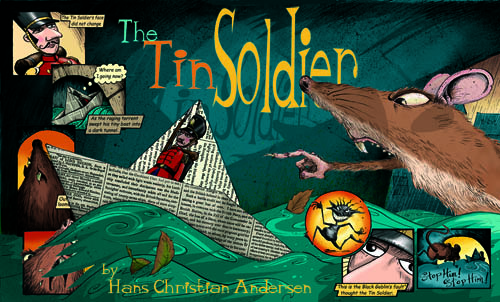
Tell us a little bit about the 200-year-old building in your backyard and the studio you have in there.
I think it was once just a simple stone outbuilding. It was converted to something reasonably habitable about twenty-five years ago and given an electricity and water supply. I’m in Somerset, England, so everything older than about a century is built from stone. The walls are two feet thick, which is normal in old buildings here, but it makes mobile (cell)-phone use next to impossible. If anyone needs to call me at work it’s landline only I’m afraid. Oh, and the roof leaks a bit. I sit beside a window that looks out onto our garden and an apple tree that produces a rare local apple called Ashmead’s Kernal. If you can ignore their gnarled and crusty appearance and take a bite you’ll find they’re incredibly juicy and sweet.
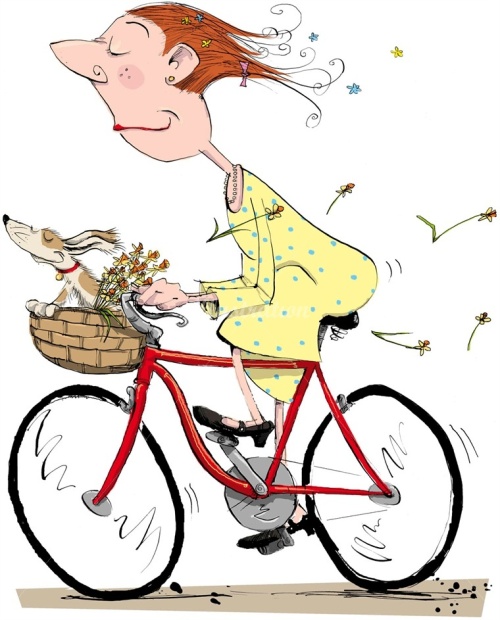
Have you done any illustrating for children’s magazines?
No, not so far.
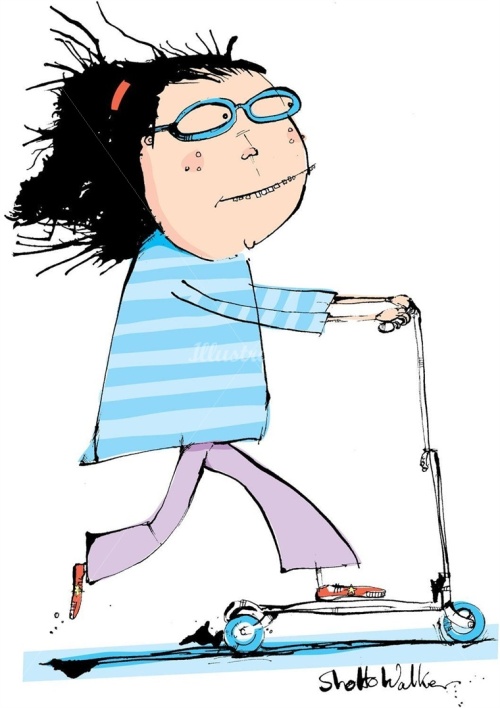
What is your favorite medium to use to do your illustrations?
Dip pen and Indian ink. Then Photoshop and Illustrator.
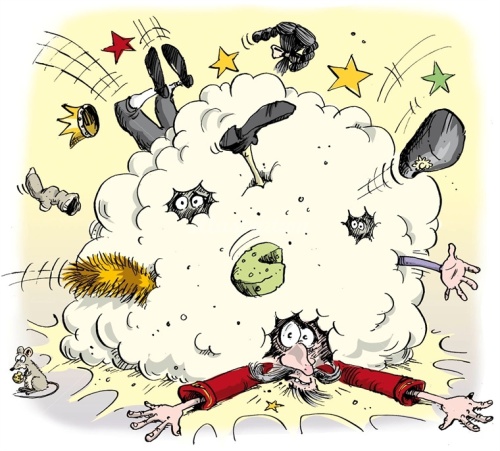
Has that changed over time?
Yes. When I began as an illustrator I developed a way of working that had its beginnings in my pre-art college mid-teens. I would create a pencil drawing that I would render in water-colour and gouache. I would then work over the whole thing in coloured pencil, before putting an ink line drawing on top. This made for beautifully vibrant illustrations, but was hugely labour-intensive. It meant I would often be up all night for even the simplest commissions. I realized this wasn’t sustainable, so in around 2000 I bit the bullet and bought an Apple Mac. Over the next year I figured out a way of working that still retained plenty of me, but was just far more efficient.
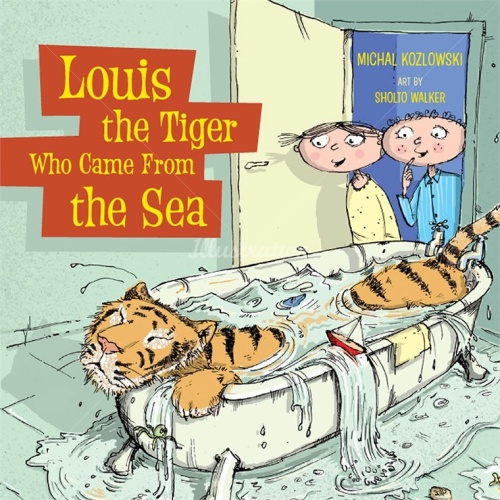
What do you consider is your first big success?
Probably Louis, the Tiger Who Came From the Sea. It’s a difficult question really because I’m very self-critical and I’m usually reluctant to pore over past work too long. I’m always thinking about the next opportunity to get it ‘right.’

How did that come about?
Apparently out of the blue. It’s how all the best work comes. You’re sitting around one day trying to remember how you ended up doing what you do when the ‘phone rings. Or the email arrives, as it usually is these days. In the case of Louis the Tiger, Colleen Macmillan at Annick Press contacted Stacey at my agent’s New York office and offered me the commission. They had seen my portfolio and decided I was the one they wanted to illustrate Michal Kozlowski’s wonderful story. It’s great when that happens.
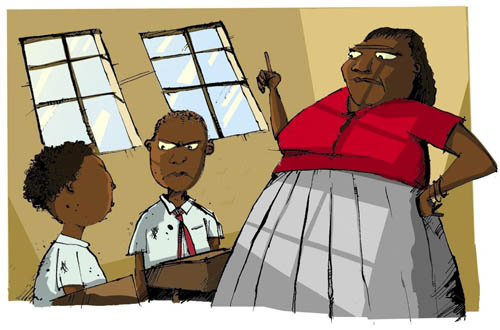
Do you ever want to write and illustrate a picture book?
Yes
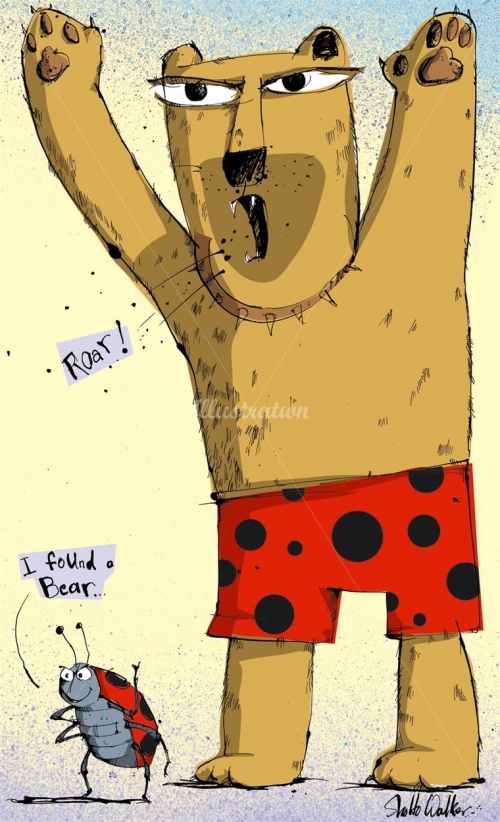
Would you be open to working with an author who wants to self-publish a picture book?
Absolutely. In fact I’ve illustrated a few of these already. Initially I was quite wary of working with self-publishing projects because commissions like these can lack structure and any real management process. I worried the job could really get out of hand. Before you commit I think it’s important to read the manuscript (don’t forget they’ve usually not been through any kind of editorial process) and also try to get a clear idea of what the client (author) is expecting from you and what if any experience they have of producing a book. The great thing about self-publishing commissions is they often give you great creative freedom because there are no sales departments controlling the process as so often happens with established publishers.
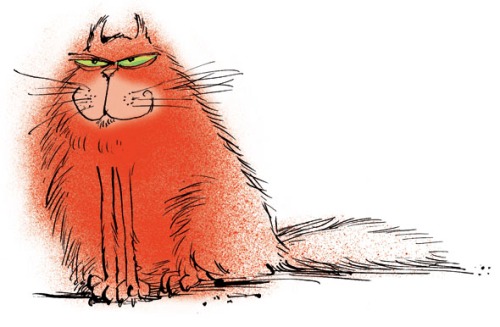
Do you take pictures or do any types of research before you start a project?
Very rarely. If an illustration requires a certain animal for example I usually reach for one of several natural history or wildlife reference books I keep. I recently completed ‘How to Slay a Werewolf’, a new book for Conran Octopus here in the UK. The story’s set in early Twentieth Century England so I had to get the clothes more or less accurate and then there was the werewolf of course, which required a fair bit of preliminary work. The internet has changed everything. In the past research usually meant repeated trips to the local library and bookshops and owning shelves groaning with reference material. Now most research is a mouse click away.
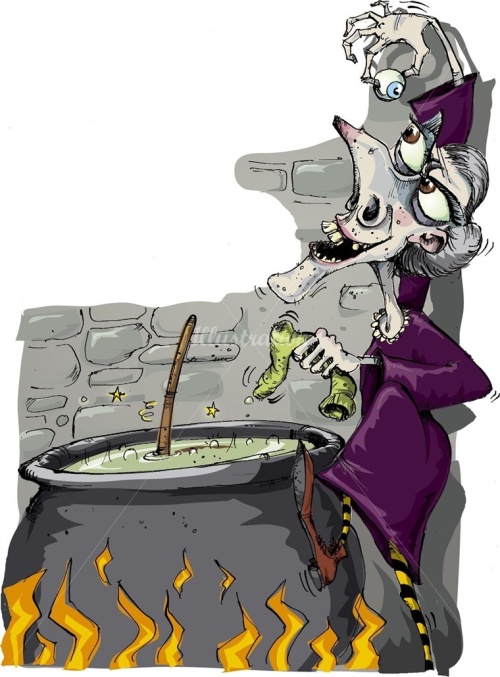
Have you done any work for educational publishers?
Yes, lots.
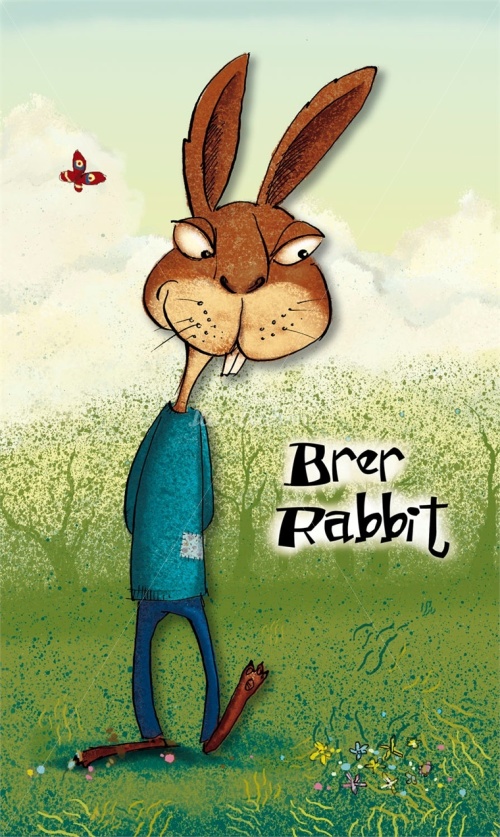
Has all your work come from European publishers?
No. I have worked on projects from around the world. My agent has seen to that. As well as most of Europe, I’ve worked for clients in the USA, Australia, Canada, South Korea and South America.
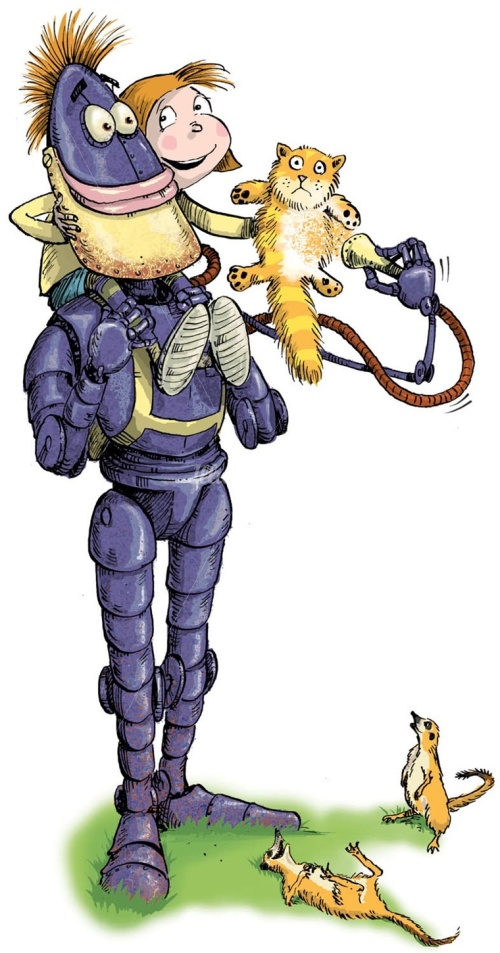
What is the one thing in your studio that you could not live without?
My bicycle, hanging on the wall.
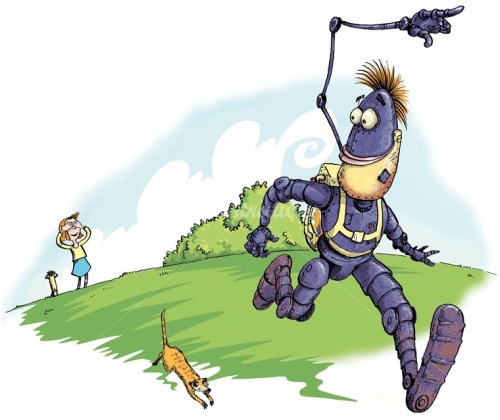
Do you try to spend a specific amount of time working on your craft?
I don’t usually need to make a conscious effort to because I’m usually busy. This was one of the reasons I was drawn to illustration in the first place. I knew if I was a working illustrator and I was getting regular work, the commissions would keep me busy – I wouldn’t have to risk being stricken too often with that dreaded lack of motivation so many artists can suffer from.
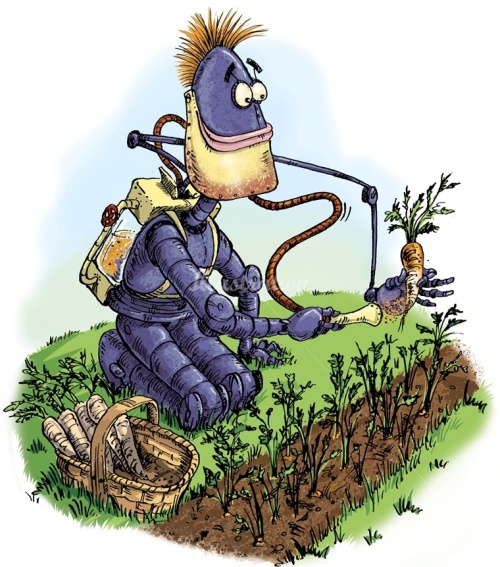
Do you think the Internet has opened doors for you?
Absolutely! Having my work on the web is like having a private art gallery in every home and office on the planet that has access to the internet.
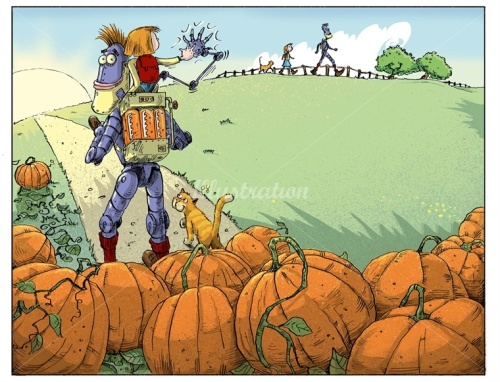
Do you use Photoshop or Corel Painter with your illustrations?
Photoshop.
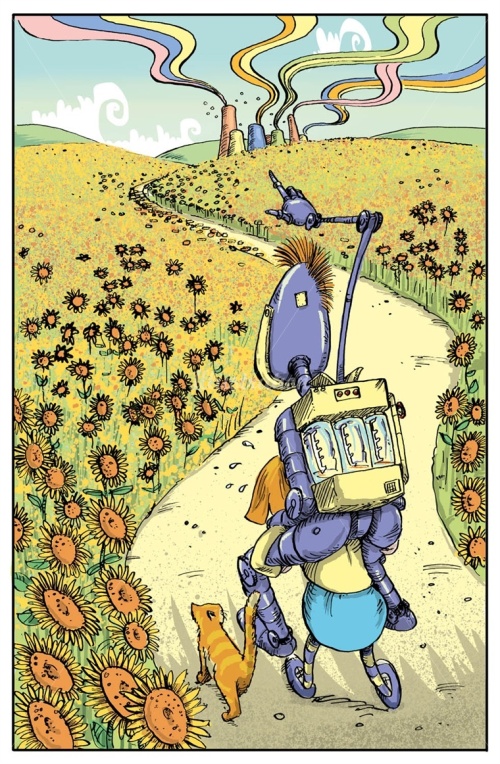 Do you own or have you used a Graphic Drawing Tablet in your illustrating?
Do you own or have you used a Graphic Drawing Tablet in your illustrating?
I couldn’t work without one. Working with a mouse is about the same as drawing with a bar of soap.
 Do you have any career dreams that you want to fulfill?
Do you have any career dreams that you want to fulfill?
One or two. I really need to write and illustrate a book.
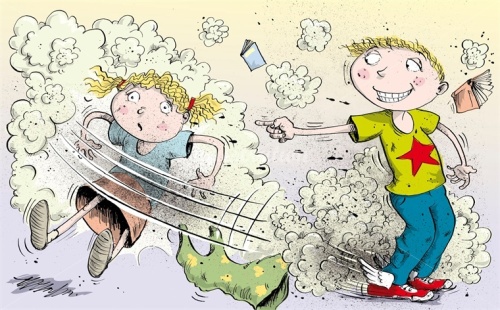
What are you working on now?
I’ve just completed the front and back cover art for a self-publishing project actually. Very imaginative. Very weird…
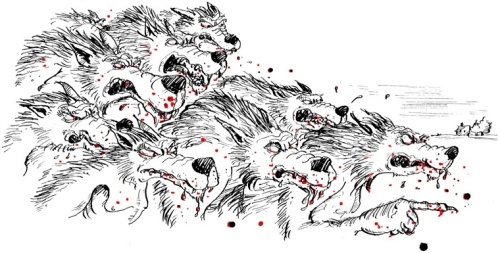 Do you have any material type tips you can share with us? Example: Paint or paper that you love – the best place to buy – a new product that you’ve tried – A how to tip, etc.
Do you have any material type tips you can share with us? Example: Paint or paper that you love – the best place to buy – a new product that you’ve tried – A how to tip, etc.
Yes: If you work digitally invest in the best and biggest display you can find. Preferably two. Don’t forget it’s your canvas. If you make your pictures on paper, remember, if you want your work to outlast you, use the best paper and media you can find.
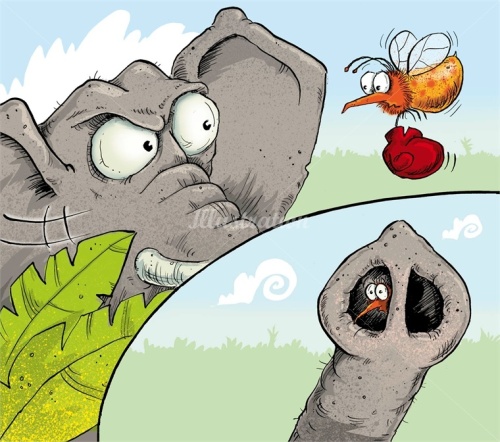
Any words of wisdom on how to become a successful writer or illustrator?
Whatever you do don’t follow fashions. Be you and keep being you.
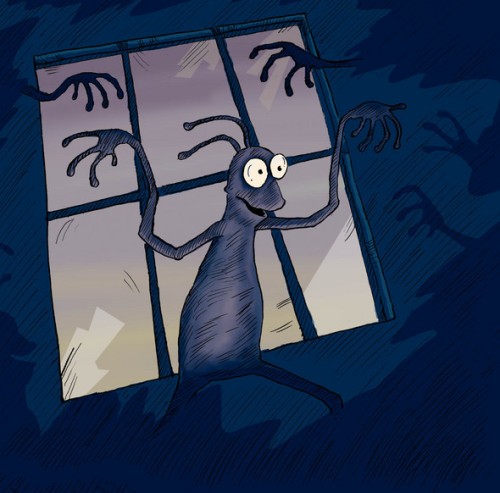
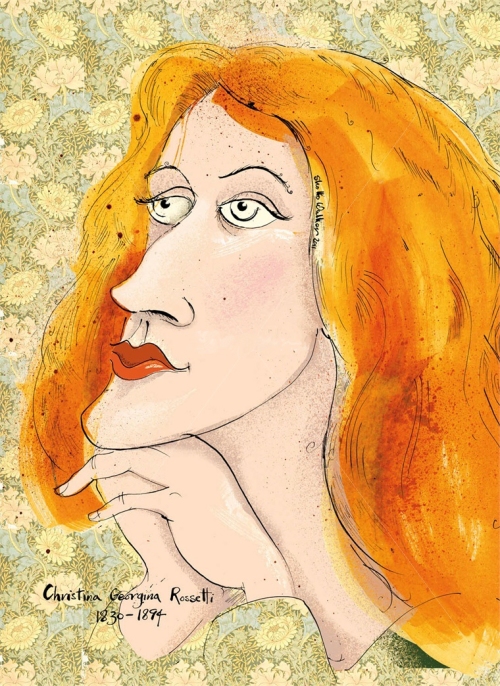
Thank you Sholta for sharing your journey and process with us. Please let us know all your future successes. We’d love to hear about them and cheer you on. You follow Sholta on Twitter @Sholtawalker
or visit his agency at: http://www.illustrationweb.us/artists/SholtoWalker/view
If you have a moment I am sure Sholta would like to read your comments. I enjoy reading them, too, even if I don’t always have time to reply. Thanks!
Talk tomorrow,
Kathy
Filed under:
Advice,
authors and illustrators,
illustrating,
Illustrator's Saturday,
inspiration,
Interview,
picture books,
Process,
Tips Tagged:
Cheltenham College of Art in Cheltenham,
England,
Ilustrationweb.com,
Sholta Walker 

 Author of twenty-nine books, Margo Sorenson was born in Washington, DC, and spent the first seven years of her life in Spain and Italy, living where there were few children her age, so books became her friends. She finished her school years in California, graduating from the University of California at Los Angeles. After teaching high school and middle school and raising a family of two daughters, Margo is now a full-time writer, writing primarily for young people of all ages, toddlers through high schoolers. Margo enjoys writing for young readers since she believes they are ready for new ideas and experiences, and they really enjoy “living” the lives of the characters in books.
Author of twenty-nine books, Margo Sorenson was born in Washington, DC, and spent the first seven years of her life in Spain and Italy, living where there were few children her age, so books became her friends. She finished her school years in California, graduating from the University of California at Los Angeles. After teaching high school and middle school and raising a family of two daughters, Margo is now a full-time writer, writing primarily for young people of all ages, toddlers through high schoolers. Margo enjoys writing for young readers since she believes they are ready for new ideas and experiences, and they really enjoy “living” the lives of the characters in books.
Besides winning recognition and awards for her books from various groups, including the American Library Association, Margo was invited to donate and archive her working papers with the internationally-known children’s literature collection, the Kerlan Collection, at the University of Minnesota.
A couple of weeks ago I featured illustrator David Harrington. One of this new books was Spaghetti Smiles written by Margo. I thought it might be fun to hear about her journey as a writers, so I interviewed Margo and below are the answers to the questions I asked:
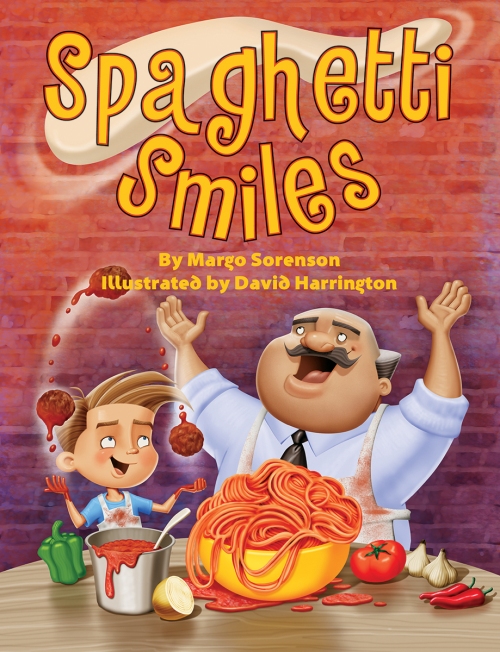
What was the inspiration behind writing Spaghetti Smiles?
The primary inspiration for this book was the question I always tell students during school visits: “What if?” Watching and listening to people in many different places can serve as the impetus for a wacky and crazy idea, if you ask yourself, “What if?” about what you see and hear. For example, for SPAGHETTI SMILES, one of my ideas was generated by the fact that our daughters used to have sleepover birthday parties in elementary school, and what they loved to do was to have “make-your-own-pizza” parties. The girls would line up in front of all the ingredients and create their own pizzas, some making faces and some making designs. I always wondered, “What if?” the pizzas could rearrange their own faces? The other “What if?” question popped into my head when our favorite Italian restaurant lost its neighbor, a toy store. The store remained vacant for some time, and I wondered, “What if?” a bank moved in next door? Or a post office? Or a gas station? What if things got mixed up between the restaurant and its new neighbor? What would be some of the wacky things that might happen? Because I love cooking Italian food and Italy (and lived there as a little girl) and reading, everything fell into place.
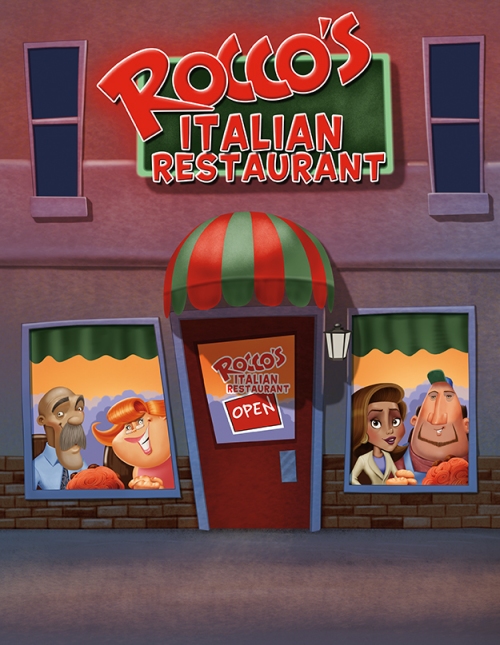
Back Cover of SPAGHETTI SMILES
How long did it take you to write your new book?
I wrote the first draft in 1992! Yep, that’s 22 years! There was a lot of revising and there were many, many rejections of various versions, but, I really wanted young readers to find out about Jake and Uncle Rocco and let their imaginations loose, so I kept going.

Title Page
How long did it take you to find a home with Pelican Publishing?
I queried them in 2010, received an invitation to send the manuscript in 2011, and received the offer in 2012. It took two years to get it published, which is fairly typical for a picture book. As you well know, publishing does move slowly, but, the book was worth the wait, because I am so happy with everything that Pelican has done for the book, including signing up awesome illustrator David Harrington, whose whimsical illustrations really bring the story to life!
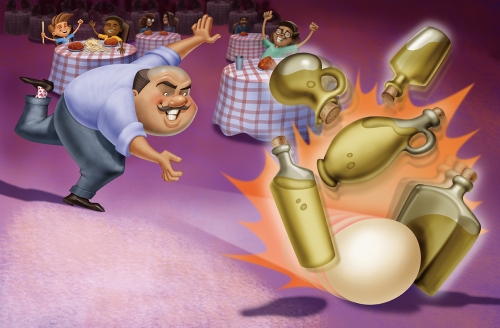
What did you major in at the University of California in Los Angeles?
I majored in medieval history – yes, I was a geek, and you could say I still am!
It sounds like you lived in lot of places around the world. Is there a story behind that?
My father was in the US Diplomatic Service when I was young, so I was partly raised in Spain and Italy, before I returned to live in the US for the first time – what a shock! J After I grew up and married, my husband’s job took us lots of places, which is why we lived in California, Hawaii, and Minnesota. Different locations are great for writers, because absorbing the new atmosphere and all the sensory details can combine to make writing richer and more varied.

What inspired you to start writing children’s books?
Some of the parents of my students encouraged me to write, after I had taught their kids to write for national contests, such as the Scholastic writing contest.
What was the title of your first published book?
My first published book was HOW TO SNEAK UP ON A GOOD BOOK, a reading record book that I co-authored with my school’s terrific librarian, Anne Polkingharn. It is now out of print, since people realized they could Xerox many of the pages (gasp!) and thus stopped buying it! It was fun devising creative projects that kids could use to report on books they read, and it is the only one of my 29 books that is out of print.
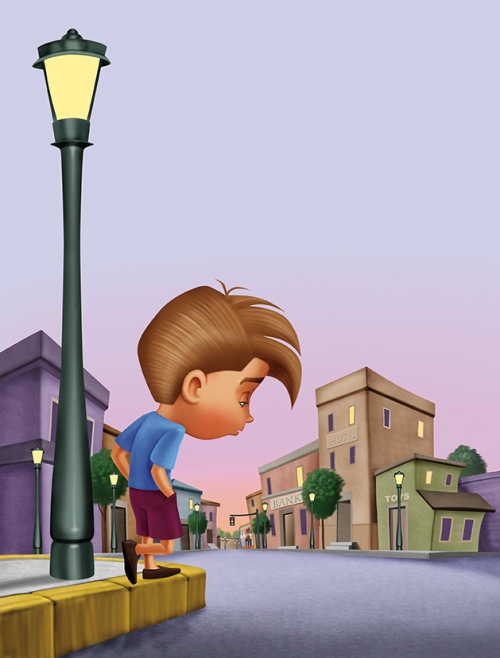
When did that come out and how did you get the contract for that book?
That was published in 1994, and I researched educational publishers, happily finding Perfection Learning Corp. J Then, they offered me contracts to write a total of 21 more books for them for their enrichment and supplemental literature reading program, many of which are for reluctant readers.
Do you have an agent? If so, who?
I do not have an agent, nor have I ever had one. I wouldn’t mind an agent, but, open communication would be key. Being in the loop and knowing what is going on are very important to me. I’ve been very, very fortunate to have wonderful editors and publishers, so an agent hasn’t been necessary. For example, North Dakota State University Press/North Dakota Institute of Regional Studies just re-released my middle grade historical fiction TORI AND THE SLEIGH OF MIDNIGHT BLUE as an ebook, simply because they believe in the story, which means a great deal to me.

It looks like you have written books from young children to young adult, plus fiction and non-fiction. Do you gravitate to one more than another?
That’s a hard question –except for the non-fiction! Although I loved learning about new ideas and had fun writing the books, I am pretty much done with non-fiction, simply because some of it felt like homework! I wrote TSUNAMI and HURRICANE before the internet was as ubiquitous as it was today, and I trudged through the snow (yes, really!) to the Edina (MN) City Library to do my research. Making sure facts were correct and making sure they were explained in a way that makes sense to young readers were a challenge – and I ended up using about forty bibliographic sources for each one. Whew! What was fun was making some lasting friends writing TSUNAMI when I interviewed the two geophysicists who ran the Pacific Tsunami Warning Center and the International Tsunami Warning Center, and we are still in contact to this day. When my family goes to Hawaii, we try to stop by the PTWC in Ewa Beach, Oahu, and say hello! I enjoy writing picture books and I enjoy writing young adult, but, because of the current young ages of my grandchildren (the Adorables) I gravitate more to writing for younger readers right now. But, as a writer yourself, you know that is liable to change anytime!
At this stage in your career, do you still find you need to revise when writing a new book?
Whoa! Are you kidding? J I’ll put manuscripts away for a while and then take a look at them much later and wonder, ‘What was I thinking???’! It’s all about revision, all the time!
Do you still receive rejection letters?
Absolutely! When I do author visits, I always ask the kids to guess how many pounds of rejection letters I’ve received (that’s just the letters, not the manuscripts!) – I’m up to over 35 pounds!
Do you feel your writing style has changed over the years?
My writing style has definitely changed – thanks to editors and my critique partner, children’s author Bonnie Graves ( THE BEST, WORST DAY, MYSTERY OF THE TOOTH GREMLIN, etc.). Her voice rings in my ears: “Spare! Spare!” I hope I use words more economically these days – and I definitely use fewer (if any!) adverbs. Some of my earlier books like DANGER CANYON (still my best seller!) use more adverbs than I’m comfortable with using these days, but that doesn’t seem to keep young readers from reading them!

Are you someone who follows a daily routine with your writing?
I don’t follow a daily routine, unless I am working on a manuscript. Then, I start early in the morning, (with plenty of coffee!), and write like crazy. If I’m not working on a manuscript, I’ll try to daydream “what ifs” in odd moments, and write those ideas down to work on later.
Do you ever do any research when you write a fictional picture book?
I definitely do research when I write fictional picture books. We writers owe it to our young readers that the backstory is accurate, even though a lot of it might not even appear in the story. When I was writing Ambrose the Medieval Mouse stories (AMBROSE AND THE PRINCESS, AMBROSE AND THE CATHEDRAL DREAM) for Liturgical Press, I even sent the manuscripts to my former medieval history professor, the late Dr. Bryce Lyon, professor emeritus, Brown University, for vetting, making sure all the details were accurate. He was delighted to be of use and was a big help. As one example of many, my manuscript read, “Peasants and farmers crowded into the cathedral,” and he wrote me that “peasants *were* farmers,” so I deleted “farmers.” He was tickled that I dedicated both books to him as well as to my dear, supportive family.

How do you market yourself to secure school visits?
My author website has a whole section on my author visits, and I try to make sure that my name is found on various websites that list authors who do school visits. I also do twenty-minute complimentary Skype visits, and there are some websites that list those, as well, including that of my virtual author friend Kate Messner. Sometimes, I’ve even gotten a school visit through Twitter, such as this past September, when my friend and School Library Journal Librarian of the Year Michelle Colte (Hale Kula, Schofield Barracks, Wahiawa, HI) suggested through a Tweet to another librarian, Debbie Vandersande of Kahala Elementary, that she contact me for a visit – and it happened!
What is your greatest success story?
My greatest success story is when I hear from young readers that something I wrote spoke to them in some way – that they connected with the characters and the story. That’s really the reason I think that any of us authors write; when I was growing up, reading broadened my horizons and let me live lives I never thought I would, and I hope I can do the same for young readers.
What are you working on now?
I’m working on a YA novel set in Italy, which is under submission, and a number of picture books, including UPSIDE-DOWN PUPPY and NO NAP, GRANDPA. I love the whimsy of picture books and thinking outside the box, and I love to hear young readers giggle!
Do you have any words of wisdom for writers looking to publish a book?
Yes, though it’s always tricky, since writing is so personal, especially at the very beginning of a writing career. One of my favorite sayings is from Ellen Kozak: “The First Commandment for writers is ‘Thou Shalt Not Fall In Love With Thine Own Words’.” I can’t tell you how many times I’ve done that – it’s embarrassing, actually! Find a good critique partner, take your time, revise, revise, revise, and never give up.
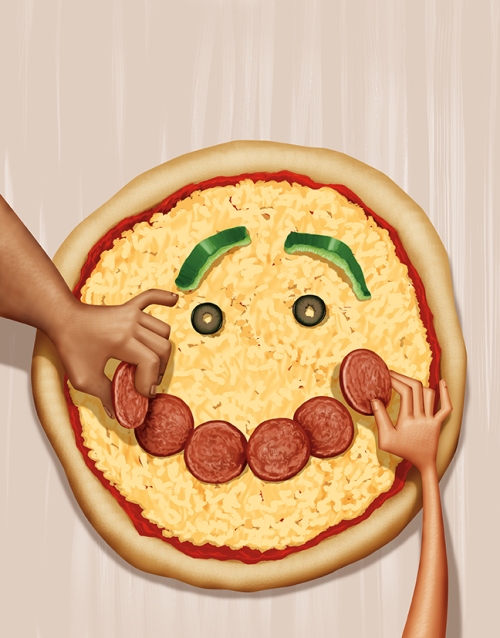
Thank you Margo. I enjoyed reading your answers. Good Luck with the book. Keep in touch. Use http://www.margosorenson.com/ to read more about Margo and her books.
Talk tomorrow,
Kathy
Filed under:
authors and illustrators,
inspiration,
Interview,
picture books,
Process,
Tips Tagged:
Margo Sorenson,
Spaghetti Smiles 


By: Kathy Temean,
on 11/1/2014
Blog:
Writing and Illustrating
(
Login to Add to MyJacketFlap)
JacketFlap tags:
Poems,
Kelly Fineman,
Competition,
authors and illustrators,
Win,
Vivian Kirkfield,
Carol Murray,
Carol MacAllister,
Donna Weidner,
Jane Resides,
Pia Garneau,
Robert Zammarchi,
Wendy Greenley,
Carol Jones,
Poll - Vote,
Add a tag
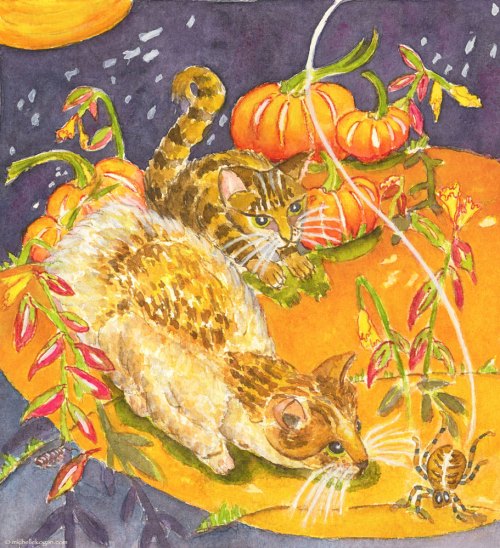
Almost missed sharing this wonderful illustration sent in by Michelle Kogan. She is an illustrator/painter/instructor and writer from the Chicago area. Here is her website: www.michellekogan.com Her cards are available in her Etsy shop – www.MichelleKoganFineArt.etsy.com
Last Thursday I posted the Halloween Poems sent in for the holiday. I was impressed with the talent out in the audience and will repeat this for other holidays. I decided to create a poll and let everyone chose their favorite poem. I left out Eileen Spinelli on purpose.
I will give the winner of the favorite Halloween poem a chance to be interviewed by me on this blog and show off their work: Book, illustrations, Poems. The winner can hold on to the win for when their book comes out or they can use it immediately. So if you had a poem on last Thursday’s post or have a friend who had their poem posted on October 30th, vote and tell all your friends to vote, too.
Click here to read the poems:
Voting is open until November 9th.
Take Our Poll
Talk tomorrow,
Kathy
Filed under:
authors and illustrators,
Competition,
Poems,
Win Tagged:
Carol Jones,
Carol MacAllister,
Carol Murray,
Donna Weidner,
Jane Resides,
Kelly Fineman,
Pia Garneau,
Poll - Vote,
Robert Zammarchi,
Vivian Kirkfield,
Wendy Greenley 


By: Kathy Temean,
on 10/23/2014
Blog:
Writing and Illustrating
(
Login to Add to MyJacketFlap)
JacketFlap tags:
karen Romagna,
NJSCBWI Illustrator Coordinator,
Picture Book,
Book,
inspiration,
Process,
publishers,
illustrating,
authors and illustrators,
Voyage,
Add a tag
Here is your chance to win a copy of Karen Romagna’s new book, VOYAGE. All you have to do is leave a comment and be willing to write a short review of the book if you win. The review can be on your blog, Amazon, Barnes and Noble, Facebook, or Goodreads. (See more at bottom of this post.)
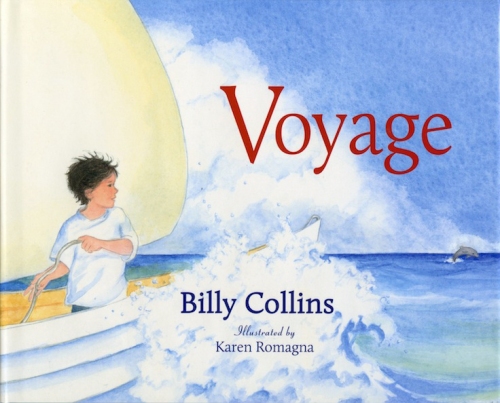
Karen Romagna has just finished illustrating her first picture book. Voyage launched at The National Book Festival in Washington, DC on August 30, 2014 and is available in bookstores October 1, 2014. Written by former US Poet Laureate, Billy Collins, Voyage is the tale of a young boy setting off for an adventure on the open sea. Karen used the softness of watercolor in illustrating this wonderful dreamlike tale.

Karen is a traditional painter. Her illustrations are primarily done in watercolor However, she also loves painting in oil.
Karen grew up surrounded by art, music, brothers, sisters and parents that always supplied paint, paper, and the freedom to try new things. She lives in rural New Jersey where she and her husband, John, raised two sons, Matt and Tim, in a house filled with music and art… and hopefully a spirit that has allowed her sons to try new things too.
For those of you who are not a member of the New Jersey SCBWI, Karen is the Illustrator Coordinator for the New Jersey Chapter of the Society of Children’s Book Writers and Illustrators.
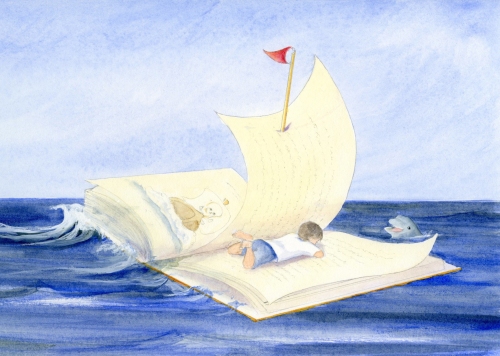
I asked Karen if she would share the story behind Voyage and it’s beginning. Here is what she told me:
“Voyage” had an interesting beginning. Billy Collins wrote the poem back in 2003 in celebration of John Cole’s 25 years as Director of the Center of the Book in the Library of Congress. As John Cole wrote at the beginning of Voyage, “The creation and presentation of “Voyage” was wholly in the spirit of the Center of the Book, which was created to stimulate pubilc interest in books, reading and literacy.”
In 2013 Bunker Hill Publishing approached me wondering if I might be interested in “a collaboration with the poet Billy Collins!” Well…, of course! The publisher had seen a copy of the poem hanging on the wall in John Cole’s office and approached Billy with the idea of making it a picture book.
Billy Collins likes to pick the illustrators for his books and went surfing the net. He came across a painting of mine that made him think I should illustrate this poem. He asked the publisher to get in touch to see if I might be interested in this project. Well… “Of course!” Bunker Hill had an illustrator in mind for the book as well and asked me to submit a sample illustration along with a thumbnail dummy. Wanting to make sure I was giving myself the best shot, I asked the publisher if he wouldn’t mind telling me exactly which illustration Billy Collins had seen that made him feel I was the right artist for his book. “Of course!” he said “It’s the one of the boy in a boat.”
Well, my heart melted… that was not one of my illustrations… it was a portrait of my younger son, Tim. There was always something magical about my second child. He would find himself in a great adventure with a piece of rope that he’d found.
In the end I was chosen to illustrate “Voyage”. …so Tim will carry on this great adventure for a long time.
You might be interested in watching this video of Billy Collins and Karen Romagna talking about the book at the National Book Festival where she launched her book in Washington, DC. I laughed when Karen said she almost threw out the email from the publisher she received asking if she had any interest in illustrating the book thinking it was junky mail. Thank goodness she didn’t. Congratulations, Karen!
If you would like more changes to win you will get additional entries when you Tweet, reblog, or talk about Voyager on Facebook (Must check back and let me know what you did, so I can enter the right amount of tickets with you name on it.
DEADLINE: November 3rd. Winner announce November 4th.
Check back next Friday to read the four first page critiques.
Talk tomorrow,
Kathy
Filed under:
authors and illustrators,
Book,
illustrating,
inspiration,
Picture Book,
Process,
publishers Tagged:
karen Romagna,
NJSCBWI Illustrator Coordinator,
Voyage 


By: Kathy Temean,
on 10/20/2014
Blog:
Writing and Illustrating
(
Login to Add to MyJacketFlap)
JacketFlap tags:
Competition,
authors and illustrators,
opportunity,
earn money,
Book Contracts,
Places to sumit,
Black Balloon Publishing,
Horatio Nelson Fiction Prize,
No Fee Publishing Contract Contest,
Contest,
Add a tag
NO FEE WRITING CONTEST: PRIZE: $5,000.00.
DEADLINE: 10-31-2014.

Black Balloon Publishing will accept submissions for the 2014 annual Horatio Nelson Fiction Prize between October 1st and October 31st, 2014. The winning author receives $5,000 and a Black Balloon book deal.* There is no reading fee.
WRITING CONTEST WEBSITE
Black Balloon Publishing invites entries of finished, unpublished and original fiction manuscripts of over 50K words to The Horatio Nelson Fiction Prize. The winning author receives a $5,000 cash prize and a book publishing deal with the company.Submit only unpublished fiction manuscripts (50,000 words and up) written in English. Short stories, previously published as collections, are still eligible. The initial entry process requires you to submit a partial manuscript of under 4,000 words.Black Balloon Publishing is a well-known author-friendly indie press based in New York, NY. The company publishes crossed genres of creative fiction, narrative, and nonfiction that showcase experimental forms of strong storytelling.
Black Balloon will announce a winner on Monday, February 2, 2015.**
Submission Guidelines:
- Fiction manuscripts only, please (novels or short story collections)
- Manuscripts must be complete, unpublished and original. Prior print or digital publication of individual stories from an unpublished collection is acceptable; please ensure your submission acknowledges all outlets in which individual stories have been previously published (if a work is discovered to have been posted or published elsewhere—and not openly acknowledged by the author in advance—we will remove the manuscript from consideration).
- Self-published novels and story collections are ineligible, including work that has been published digitally.
- Manuscripts must be over 50,000 words in length
- International English-language submissions are welcome
- Submissions must be received between October 1st and October 31st, 2014
DEADLINE: October 31, 2014
Use the link below to submit (scroll to the bottom of the page).
https://electricliterature.submittable.com/submit/35240
Talk tomorrow,
Kathy
Filed under:
authors and illustrators,
Book Contracts,
Competition,
Contest,
earn money,
opportunity,
Places to sumit Tagged:
Black Balloon Publishing,
Horatio Nelson Fiction Prize,
No Fee Publishing Contract Contest 


By: Kathy Temean,
on 10/19/2014
Blog:
Writing and Illustrating
(
Login to Add to MyJacketFlap)
JacketFlap tags:
publishers,
authors and illustrators,
Publishing Industry,
Royalties,
opportunity,
need to know,
Book Contracts,
Places to sumit,
Acquiring new and established authors,
Digital Publishing Company,
Polis Books,
Add a tag

Polis Books is an independent digital publishing company actively seeking new and established authors for our growing list. We are currently acquiring titles in the following genres. Submissions in the following genres should be to [email protected].
We are currently acquiring:
• Mystery
• Thriller
• Suspense
• Procedural
• Traditional crime (i.e. ‘cozies’)
• Science Fiction
• Fantasy
• Horror
• Supernatural
• Urban Fantasy
• Romance
• Erotica
• Commercial Women’s Fiction
• New Adult
• Young Adult
• Humor/Essays
We are not currently acquiring:
• Children’s Picture books
• Graphic novels
• Short stories or stand-alone novellas
• Religion
Submission Requirements:
• Query Letter
• Three Sample Chapters
• Author Biography (include information about personal blogs, Twitter handle, or other social media outlets you feel we should be aware of)
Query letter and sample chapters should be emailed as attachments (not in body of email) to:
[email protected]
They will reply requesting more information on a submission-by-submission basis.
They give a small advance and 40% royalties.
Talk tomorrow,
Kathy
Filed under:
authors and illustrators,
Book Contracts,
need to know,
opportunity,
Places to sumit,
publishers,
Publishing Industry,
Royalties Tagged:
Acquiring new and established authors,
Digital Publishing Company,
Polis Books 


By: Kathy Temean,
on 10/19/2014
Blog:
Writing and Illustrating
(
Login to Add to MyJacketFlap)
JacketFlap tags:
publishers,
authors and illustrators,
Publishing Industry,
Royalties,
opportunity,
need to know,
Book Contracts,
Places to sumit,
Acquiring new and established authors,
Digital Publishing Company,
Polis Books,
Add a tag

Polis Books is an independent digital publishing company actively seeking new and established authors for our growing list. We are currently acquiring titles in the following genres. Submissions in the following genres should be to [email protected].
We are currently acquiring:
• Mystery
• Thriller
• Suspense
• Procedural
• Traditional crime (i.e. ‘cozies’)
• Science Fiction
• Fantasy
• Horror
• Supernatural
• Urban Fantasy
• Romance
• Erotica
• Commercial Women’s Fiction
• New Adult
• Young Adult
• Humor/Essays
We are not currently acquiring:
• Children’s Picture books
• Graphic novels
• Short stories or stand-alone novellas
• Religion
Submission Requirements:
• Query Letter
• Three Sample Chapters
• Author Biography (include information about personal blogs, Twitter handle, or other social media outlets you feel we should be aware of)
Query letter and sample chapters should be emailed as attachments (not in body of email) to:
[email protected]
They will reply requesting more information on a submission-by-submission basis.
They give a small advance and 40% royalties.
Talk tomorrow,
Kathy
Filed under:
authors and illustrators,
Book Contracts,
need to know,
opportunity,
Places to sumit,
publishers,
Publishing Industry,
Royalties Tagged:
Acquiring new and established authors,
Digital Publishing Company,
Polis Books 


By: Kathy Temean,
on 10/18/2014
Blog:
Writing and Illustrating
(
Login to Add to MyJacketFlap)
JacketFlap tags:
revisions,
Lin Oliver,
opportunity,
Lexa Hillyer,
Free Writing Video Series,
inspiration,
Advice,
authors and illustrators,
Courses,
How to,
demystify,
Add a tag



Talk tomorrow,
Kathy
Filed under:
Advice,
authors and illustrators,
Courses,
demystify,
How to,
inspiration,
opportunity,
revisions Tagged:
Free Writing Video Series,
Lexa Hillyer,
Lin Oliver 


By: Kathy Temean,
on 10/17/2014
Blog:
Writing and Illustrating
(
Login to Add to MyJacketFlap)
JacketFlap tags:
Interview,
Tips,
picture books,
inspiration,
Advice,
Process,
authors and illustrators,
demystify,
Illustrator's Saturday,
David Harrington,
Spaghetti Smiles,
Add a tag
 David Harrington’s affinity for art began at an early age, when he enthusiastically drew on floors, walls, furniture, and other inanimate objects. A native of southern California, Harrington pursued a career in illustration by enrolling in the Art Center College of Design in Pasadena, where he earned a BFA with honors. As a student, his favorite classes were figure drawing and painting.
David Harrington’s affinity for art began at an early age, when he enthusiastically drew on floors, walls, furniture, and other inanimate objects. A native of southern California, Harrington pursued a career in illustration by enrolling in the Art Center College of Design in Pasadena, where he earned a BFA with honors. As a student, his favorite classes were figure drawing and painting.
In his professional career, Harrington has illustrated numerous children’s books. He believes that they open a door to a new world, and he admits that he studied books for hours on end as a child. In addition to children’s illustrations, Harrington creates advertising images for toys, games, food packaging, educational materials, medical equipment, and various other products.
Bold lines, sharp contrast, and vibrant colors render Harrington’s images stunning and memorable. He portrays real emotions such as fun and excitement through playful and accentuated cartoon images. The clarity of detail that Harrington gives to the page can bring a child’s imagination to life. He is the recipient of a WWA Spur Awards Storyteller Award for his illustrations in Pecos Bill Invents the Ten-Gallon Hat. David lives with his wife and children in Laguna Hills, California.
Here is David sharing his process:
This illustration is from a book I’m currently working on where some bandits steal all the ice cream in town during the middle of summer!
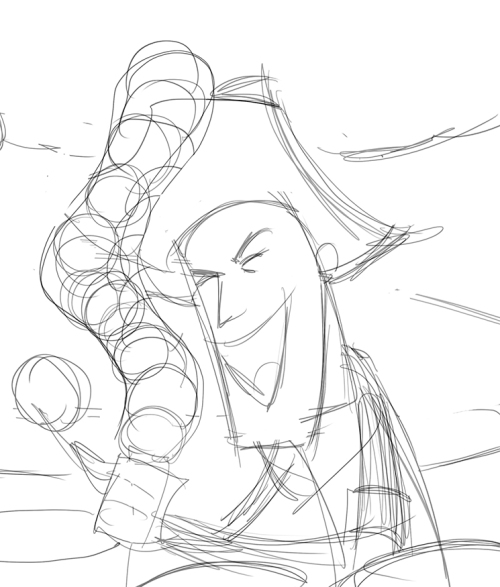
First, very rough, fast sketches trying to capture the energy, mood, emotion etc. Once I have a rough sketch I like then I keep tracing it and making revisions until I get to the final sketch.
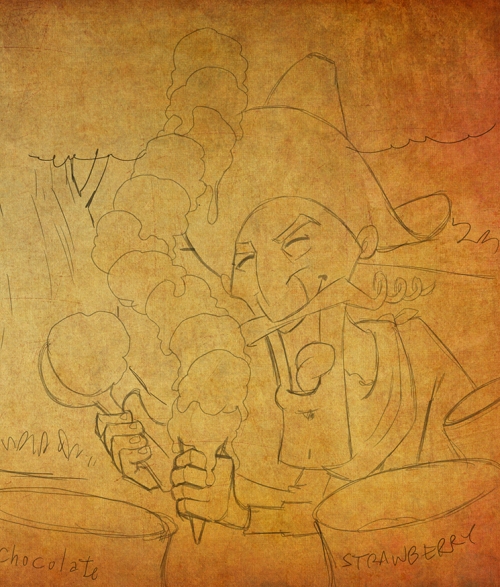
I put the final sketch on a medium value, textured background. I keep it on a separate layer so it can be removed later.
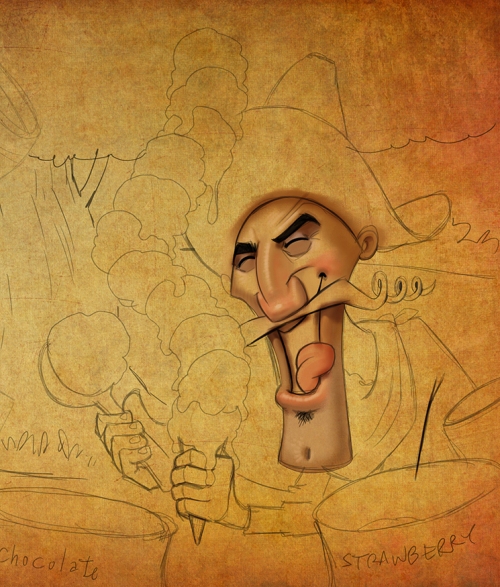
Starting with the face, I put down a thin, base skin tone letting the background texture show through. Then I start building up the dark tones adding just a little red color to the nose and cheeks and a few high lights.
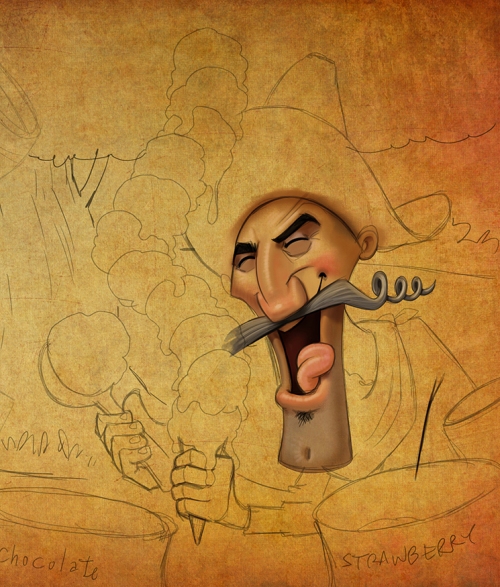
I keep building up the darks and start introducing some blues, purples and greens into the shadows.
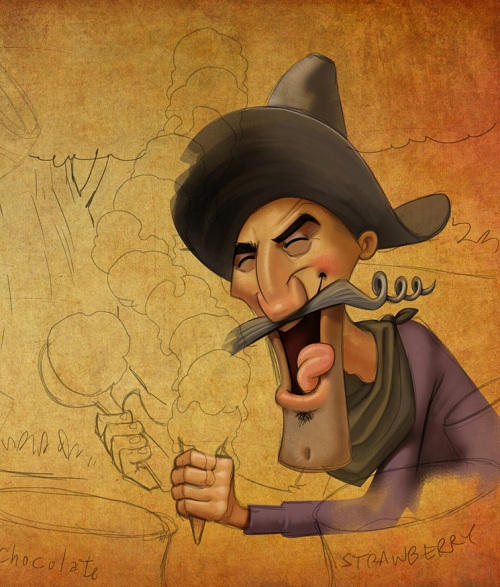
When I have the colors and values of the face where I want them, I’ll start on the rest of the figure working from light to dark.
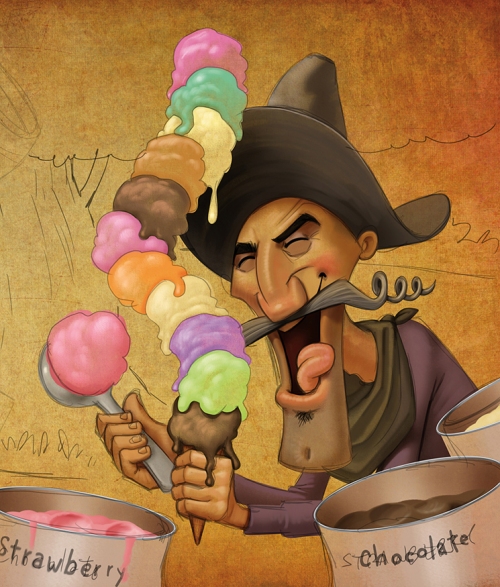
For the ice cream, I put down a medium tone trying to let the background texture show through. I then added a lighter color to one side and hit the other side with a faint shadow.
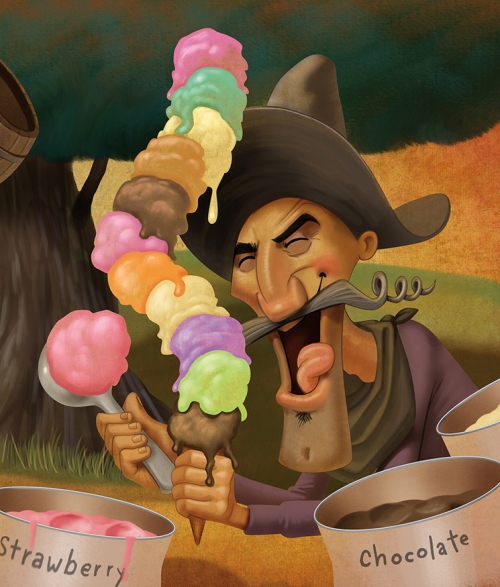
Lastly, I added the background, leaving some of the original texture untouched. I removed the sketch and then I add fine line detail.

Spaghetti Smiles by Margo Sorenson – published by Pelican Publishing Press (September 15, 2014). How many books have you illustrated for Pelican Publishing?
Spaghetti Smiles was just released and that was the fifth book I’ve illustrated for Pelican Publishing and I’m working on another right now.
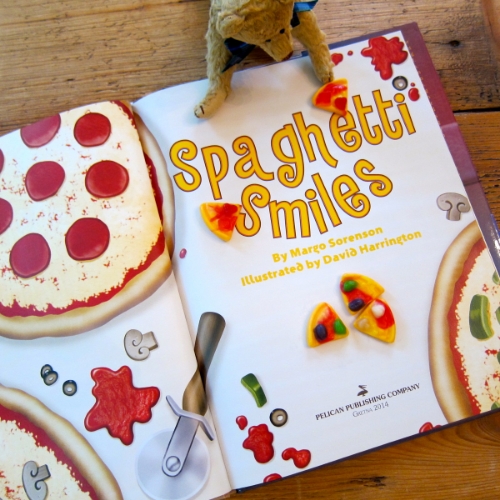
How long have you been illustrating?
I’ve been illustrating professionally for about 25 years.
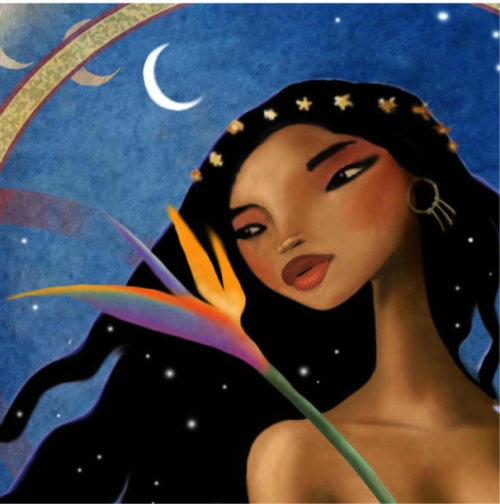
How did you decide to attended At Center College of Design in Pasadena, CA to study fine art?
During high school I took some Saturday classes at Art Center and fell in love with the school.
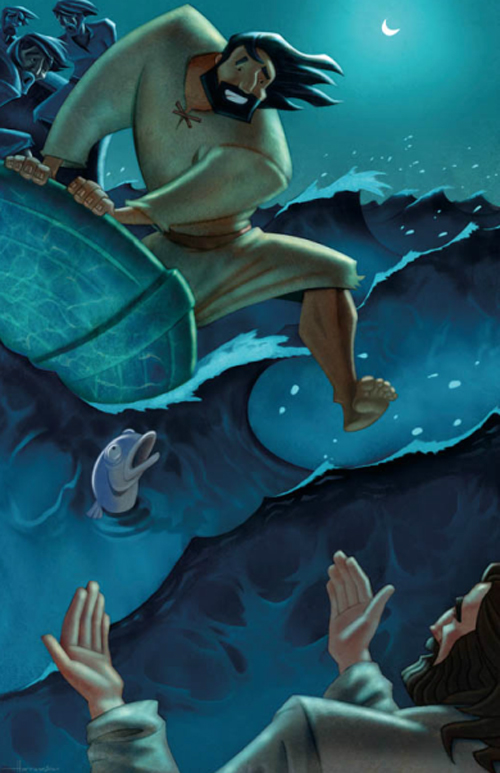
You say in your bio that figure drawing and painting were your favorite classes? Is that still a favorite thing for you to illustrate?
Absolutely, anytime there are figures in an illustration, whether they are stylized or realistic, it’s always fun and they bring life to the piece.
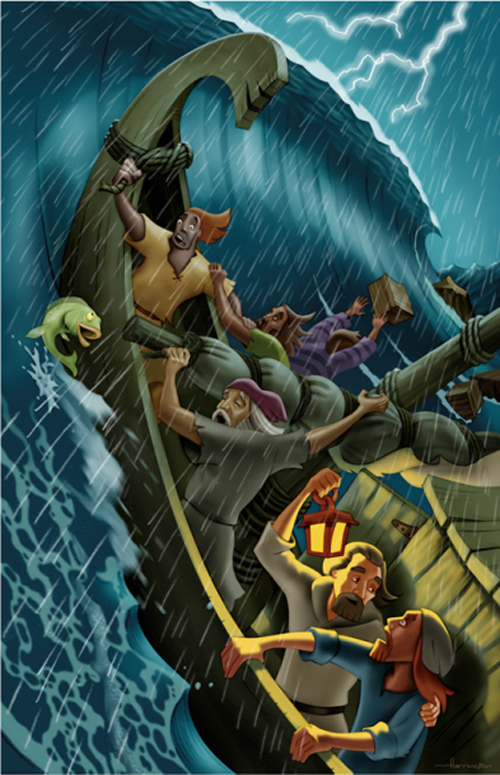
What was the first art related work that you were paid?
I painted store windows at Christmas time when I was a teen.
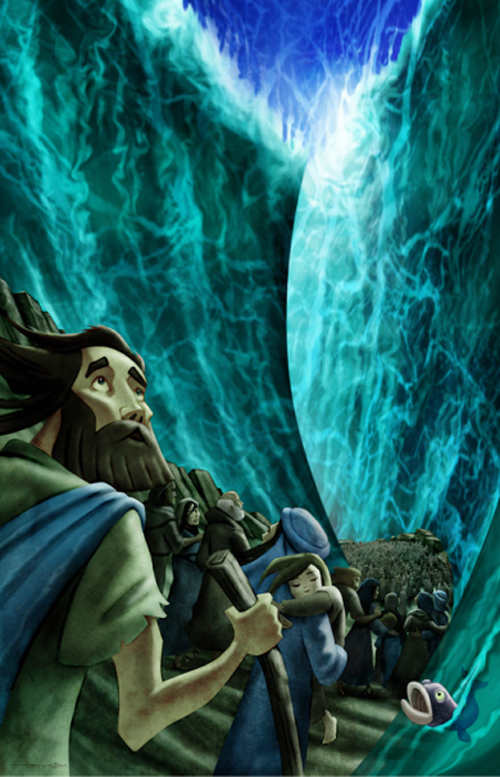
Did the School help you get work?
Yes they did, I got some work doing movie poster concept sketches for Warner Brothers right after graduation.
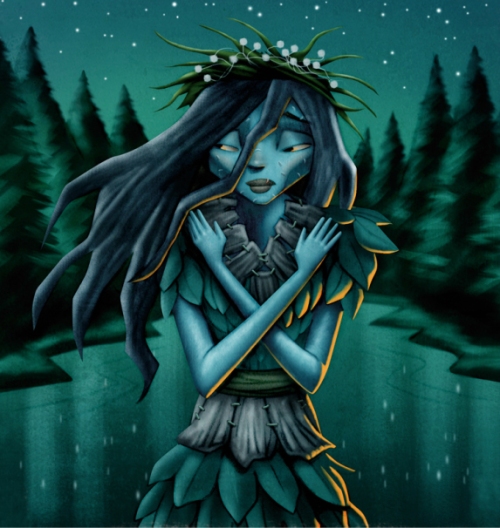
Do you feel the classes you took in college have influenced you style?
I don’t know, my style has been changing over the years.
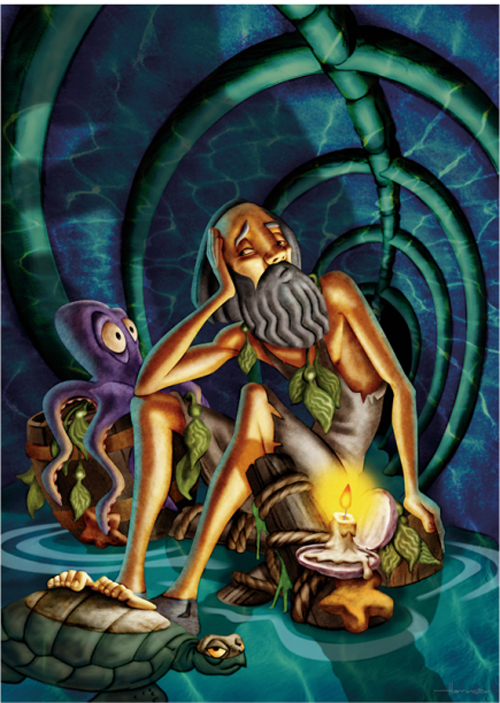
What type of work did you do right after you graduated?
About six months after graduating I took a full time job as an art director/illustrator at a small company doing mostly sports art.
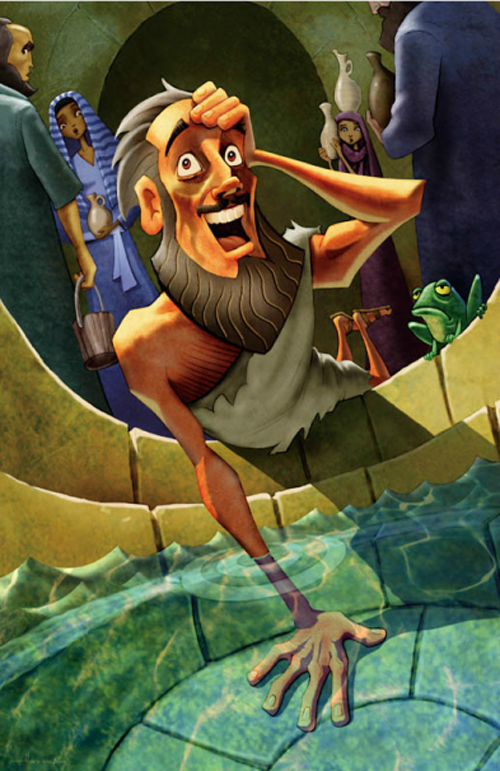
How did you make the decision to jump into freelance work?
I had been trying to make the transition to freelance by working at night but then when I got laid off unexpectedly from my full time job, I decided that -Now is the time.
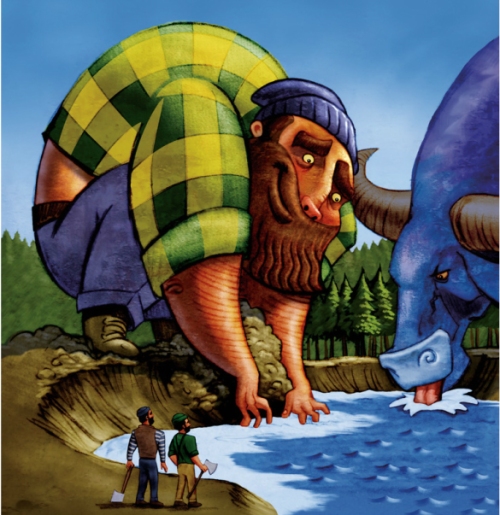
When did you decide you wanted to illustrate for children?
I did a lot of soft drink advertising work for a good client and he asked me if I could illustrate a Children’s book, so I gave it a shot- and loved it!
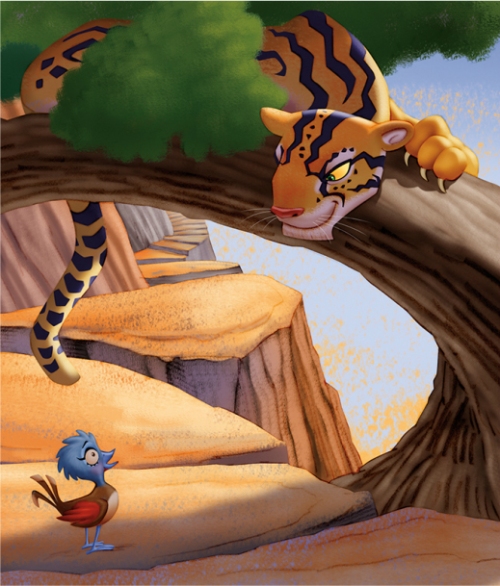
When and what was the first children’s book that you illustrated?
It was called Gabby, about a little girl and a science fair project that went wrong resulting in a giant bubble-gum monster.

Do you consider that book to be your first big success?
No, but it opened my eyes to how much fun Children’s book are to illustrate. I love creating characters.
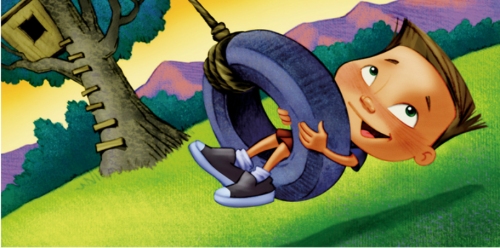
Do you have an agent or artist rep.?
No, I don’t have a representative but am not opposed to one either.
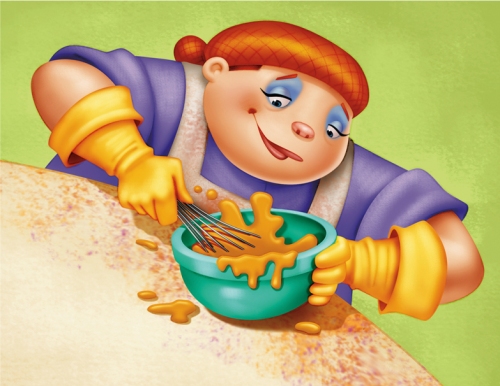
Do you have any desire to write and illustrate your own picture book?
Yes I have written some books and hope to be an Author/illustrator someday.
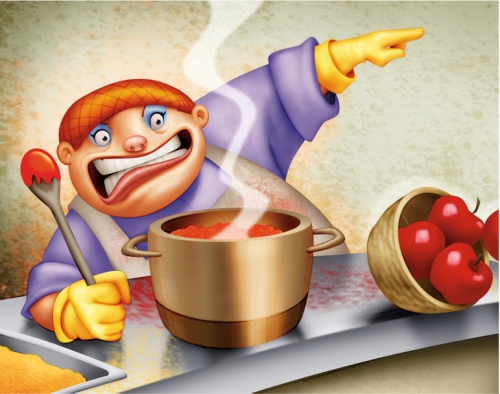
Are you the same David Harrington who does fantasy art?
No that is another David Harrington, although I have done some fantasy art over the years.

How did you get the contract to illustrate, Since We’re Friends: An Autism Picture Book at Sky Pony Press?
I don’t remember how I got that contract, but I remember it was two books.
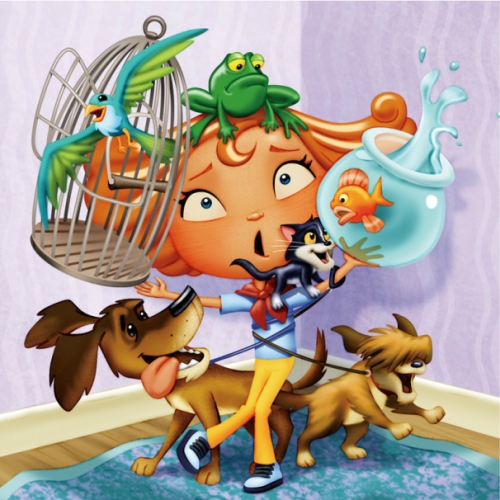
How long did you have to illustrate each one?
The whole process from sketches to final illustration takes about four to five months.
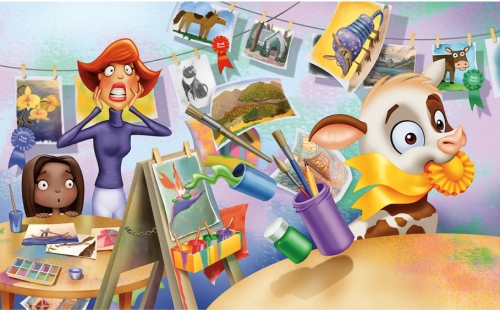
Would you be willing to work with an author who wants to self-publisher their picture book?
Yes I would if I like the story.
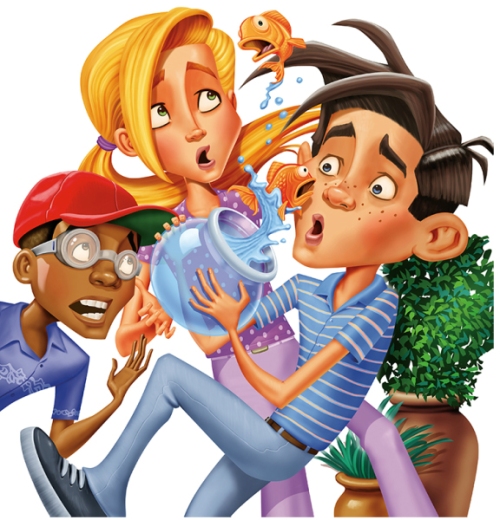
What illustrating contract do feel really pushed you down the road to a successful career?
I did about a dozen Book covers for Pee Wee Scouts from Random House and that led to more work.
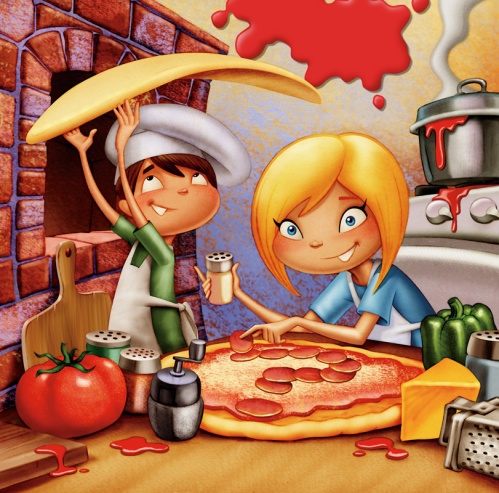
When is the title of the pirate book that you are working on and when is it coming out? Is that your next book that will hit the book shelves?
It’s a cowboy book titled Whistling Willie and should be released in the Spring of 2015.

Have you done illustrations for any children’s magazines?
Yes, mostly Club House magazine.
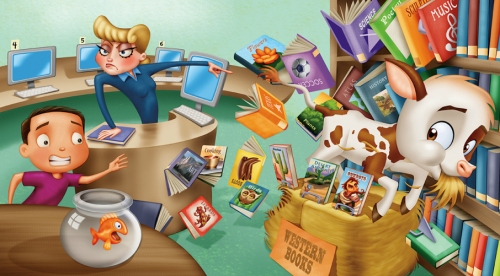
What materials do you use to paint your color illustrations?
Well it started with acrylic paint and pencils and over the years has transitioned to a Mac computer, graphic tablet and Photoshop.
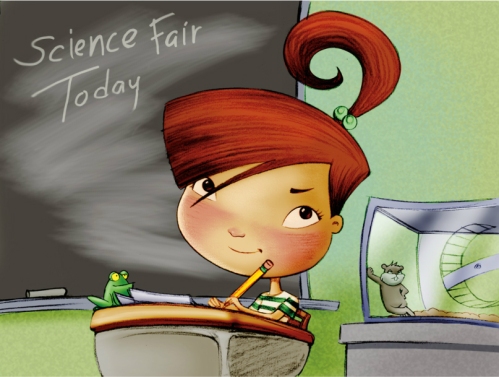
What types of things do you do to find illustration work?
Once or twice a year I send out promotional post cards to publishers. But word of mouth is how I get most of my work.
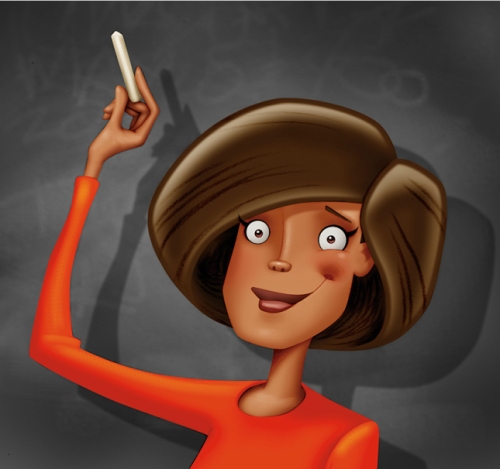
What is the one thing in your studio that you could not live without?
My Mac!
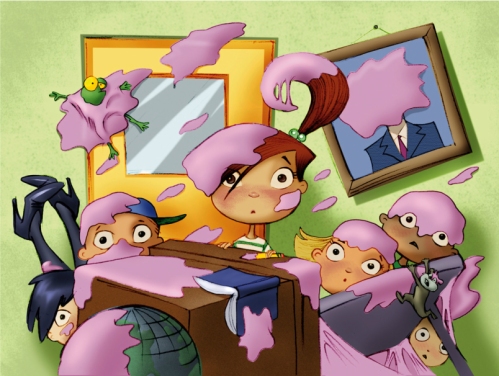
Do you try to spend a specific amount of time working on your craft?
I try to find time to experiment and learn new techniques or try different media. I love oil painting and sculpting!
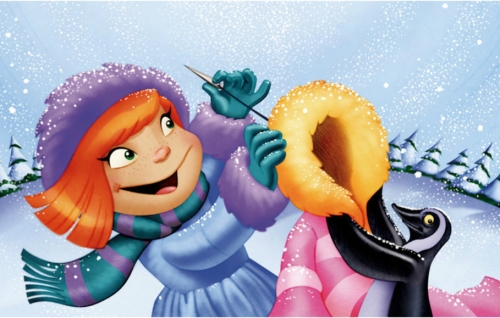
Do you take pictures or do any types of research before you start a project?
Yes I do a lot of on-line research and look for inspiration.
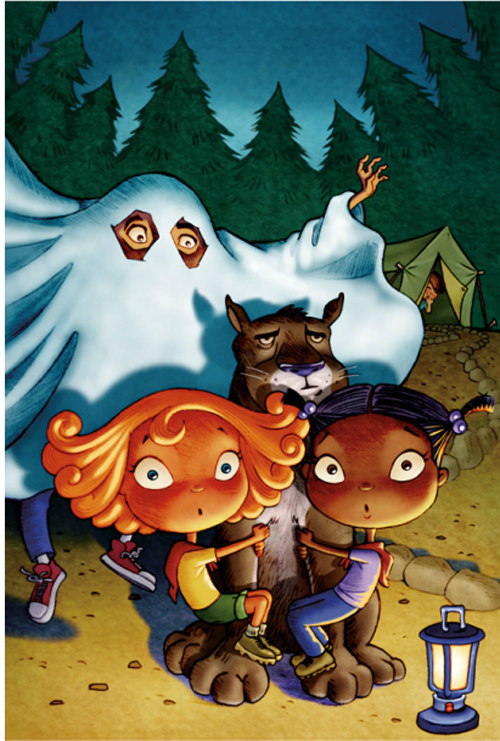
Do you think the Internet has opened doors for you?
Yes, it has changed everything about this business, from research to communication to the way finished projects are delivered.
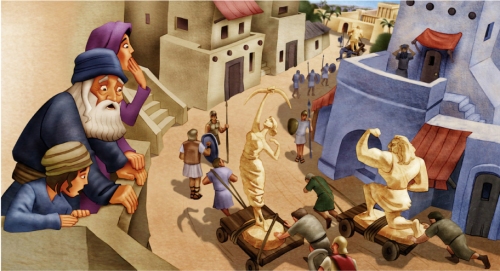
Do you use Photoshop, Illustrator, or Corel Painter with your illustrations?
Yes, Photoshop and sometimes Illustrator. I have tried painter and that’s a good program too.

Do you own or have you used a Graphic Drawing Tablet in your illustrating?
Yes, Wacom Cintiq, it’s amazing!
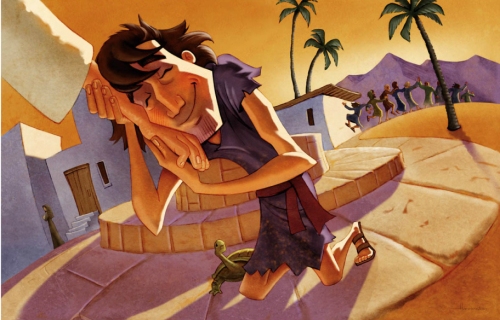
When did you start using the computer to paint your illustrations?
That was a very slow transition, about 15 years ago I would just add the final details to an illustration in Photoshop. Then at some point I would finish a painting half way and then complete it with the computer using a mouse. Now, all or almost all of the art is created using a Graphic Tablet.

What are you working on now?
Right now I’m jugging about 12 different illustration jobs including Whistling Willie from Pelican Publishing.
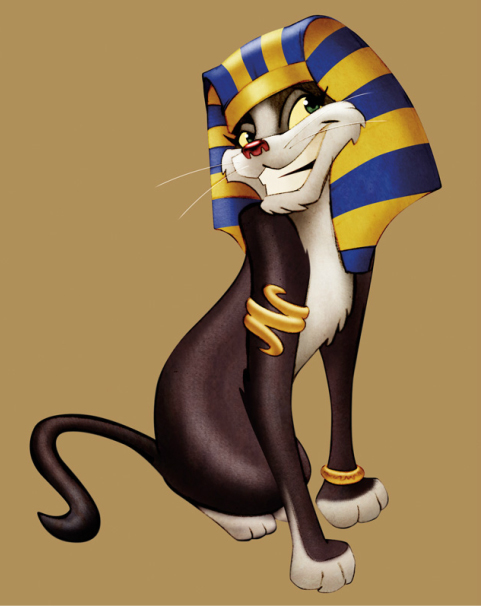
Do you have any material type tips you can share with us? Example: Paint or paper that you love – the best place to buy – a new product that you’ve tried – A how to tip, etc.
My favorite is Winsor & Newton oils on canvas, from Art Supply Warehouse in Westminster, CA
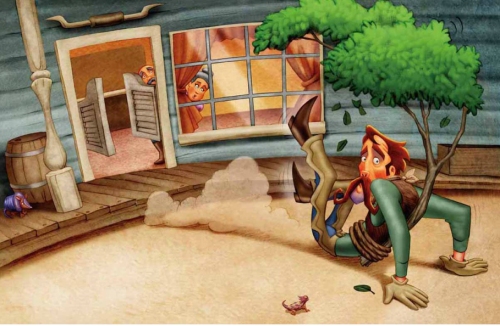
Do you have any career dreams that you want to fulfill?
Yes, I would like to illustrate the stories I’ve written.
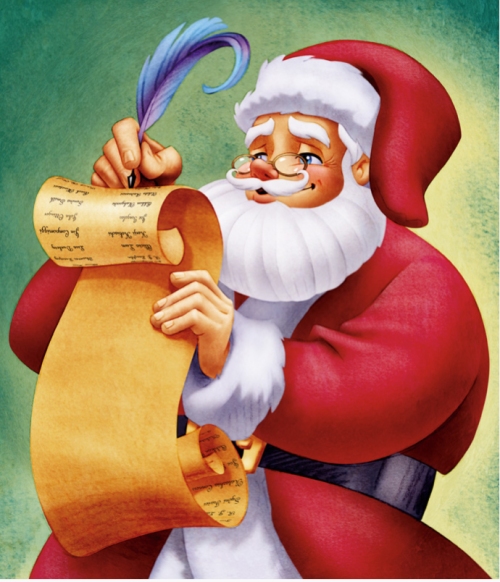
Any words of wisdom on how to become a successful writer or illustrator?
You must be persistent, never give up and always strive to improve.
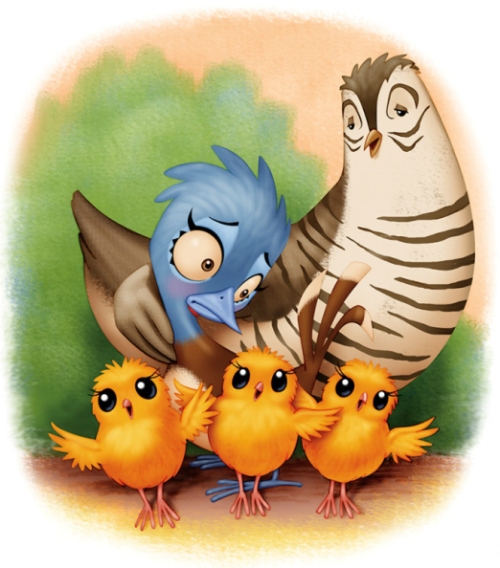
Thank you David for sharing your journey and process with us. Please let us know when your new picture book comes out , in addition to all your future successes. We’d love to see them and hear about them, so we can cheer you on. You can visit Daivd at: http://www.davidharrington.com/
If you have a moment I am sure David would like to read your comments. I enjoy reading them, too, even if I don’t always have time to reply. Thanks!
Talk tomorrow,
Kathy
Filed under:
Advice,
authors and illustrators,
demystify,
Illustrator's Saturday,
inspiration,
Interview,
picture books,
Process,
Tips Tagged:
David Harrington,
Spaghetti Smiles 


By: Kathy Temean,
on 10/4/2014
Blog:
Writing and Illustrating
(
Login to Add to MyJacketFlap)
JacketFlap tags:
awards,
SCBWI,
Competition,
authors and illustrators,
opportunity,
children writing,
Self Published Books,
need to know,
Self Published Authors,
Spark Award,
Add a tag

The Spark Award is an annual award that recognizes excellence in a children’s book published through a non-traditional publishing route.
THE INAUGURAL SPARK AWARD WINNERS
Deadline: Books may be submitted between September 15th and December 15th, 2014 for books published in the 2014 calendar year. Books published in previous years and re-issues are ineligible. Books submitted outside of that period will not be considered. You may only submit one title each award period.
Award: The winner and honor recipients will receive: a Spark seal to display on their book; commemorative plaque; the opportunity to have their book featured and autographed at an SCBWI conference of their choosing during the year the award is won, featured in the SCBWI online bookstore and publicized through SCBWI social networking sites. The winners will also get the opportunity to attend any conference of their choice tuition free (other than for extras such as critiques and intensives). Winners will be announced in March 2015.
Guidelines:
1. You must be a current SCBWI member with membership current through April of the following year to apply. If you are a member now but your membership is scheduled to expire before that time, you will need to renew your membership in order to be eligible for the award.
2. Both the author and illustrator (if the illustrator’s name appears on the book) must be members to apply.
3. You must have published a book intended for the children’s or YA market in one of the following categories: Board Book, Picture Book, Chapter Book, Middle Grade, or Young Adult.
4. The book may be fiction or nonfiction.
5. The book should have been self-published either through an established self-publishing enterprise or individually self-published. The book cannot have been previously published in any print or digital form prior to the self-published form.
6. SCBWI reserves the right to disqualify books published by enterprises that we believe, in our discretion, operate in a predatory or unbusiness-like manner.
7. The entry must be submitted in traditionally bound form, contain an ISBN number, and provide evidence of Copyright Registration.
Evidence of Copyright Registration can be an electronic recipt or email showing you filed with the US Copyright office. If your book originated outside the US you must follow the copyright laws in your country.
8. All applicants must include a cover letter with your name, the name of your book, the genre of your book, the publishing method for your book (including the name of any editor/copyeditor/designer who was retained in the creation of the book), your book’s ISBN and a synopsis of your book.
9. Applicants must submit one copy of a printed and bound copy of the book and a cover letter to SCBWI via a traceable mailing method (i.e. FedEx, UPS, US or International Mail with tracking number). Please do not double package your book.
Send copies to:
SCBWI Spark Award
8271 Beverly Blvd.
Los Angeles, CA 90048
Please note that books submitted will not be returned.
10. One winner and two Honor Book recipients will be chosen in two categories:
Novels: This includes: young adult, middle grade and chapter books
Picture Books: This includes: board books, picture books, readers, and fully illustrated novelty books.
There will be two rounds of judging. The first round will be judged by an SCBWI panel; the second round will be judged by a panel selected from industry editors, agents, authors, illustrators and/or booksellers.
11. Books may be entered for either the Spark Award or The Golden Kite Award, but not both.
12. Judging will be based on a number of criteria, including but not limited to: quality of writing and concept, quality of illustrations (if applicable), professional presentation, editing and design, appropriateness of content for the targeted age group of the book.
SCBWI reserves the right not to award a SPARK AWARD in any given year.
Talk tomorrow,
Kathy
Filed under:
authors and illustrators,
awards,
children writing,
Competition,
need to know,
opportunity Tagged:
SCBWI,
Self Published Authors,
Self Published Books,
Spark Award 


By: Kathy Temean,
on 10/3/2014
Blog:
Writing and Illustrating
(
Login to Add to MyJacketFlap)
JacketFlap tags:
Interview,
picture books,
inspiration,
Advice,
Process,
illustrating,
Lita Judge,
authors and illustrators,
demystify,
Illustrator's Saturday,
Flight School,
Born in the Wild,
Red Sledge,
Add a tag

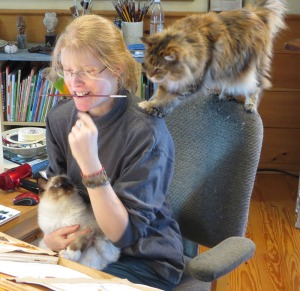 Lita Judge is a writer and artist whose greatest passion is creating children’s books. She is the author/illustrator for over a dozen fiction and nonfiction picture books including Flight School (Simon & Schuster, 2014), Red Hat (S&S, 2013), Red Sled (S&S, 2011), Bird Talk (Roaring Brook, 2012), One Thousand Tracings, and Pennies for Elephants (Disney-Hyperion). Her background in geology, paleontology and biology inspires her nonfiction books. Lita spent several years working for the Royal Tyrrell Museum of Paleontology before turning to writing about dinosaurs and other natural history subjects. But her background with animals also inspires her whimsical fictional tales filled with characters who forge big dreams.
Lita Judge is a writer and artist whose greatest passion is creating children’s books. She is the author/illustrator for over a dozen fiction and nonfiction picture books including Flight School (Simon & Schuster, 2014), Red Hat (S&S, 2013), Red Sled (S&S, 2011), Bird Talk (Roaring Brook, 2012), One Thousand Tracings, and Pennies for Elephants (Disney-Hyperion). Her background in geology, paleontology and biology inspires her nonfiction books. Lita spent several years working for the Royal Tyrrell Museum of Paleontology before turning to writing about dinosaurs and other natural history subjects. But her background with animals also inspires her whimsical fictional tales filled with characters who forge big dreams.
Several of her books have been selected as Junior Library Guild picks and they have received numerous awards including the 2013 Sterling North Award, the Jane Addams Honor Book, ALA Notable Children’s Book, the International Reading Association Children’s Book Award, Michigan Notable Book, and Kirkus Best Children’s book of 2011. She enjoys teaching both writing and illustration to students of all ages and shares much about her creative process in classrooms and on her blog and website.
Lita lives with her husband, two cats and a little green parrot named Beatrix Potter in Peterborough, New Hampshire.
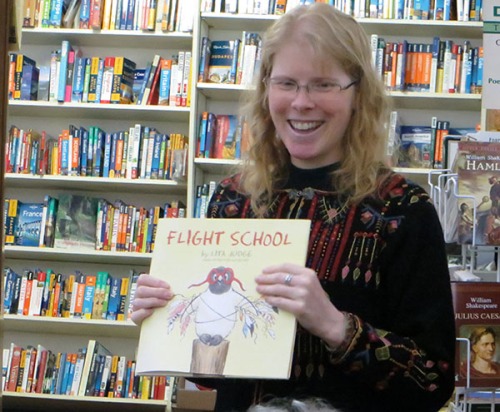
Here is Lita talking about her process:
For me, creating art for one of my books involves a lot of drawing to capture a character’s gesture or body movement and expression. For example in my newest book, Born in the Wild, to be released this October, I had to draw a lot of animals. But I didn’t want my readers to just know what a chimpanzee or orangutan looks like. I want them to feel a connection to them. I want them to look into the faces of my animals and feel like there is an animal looking back at them. I also want them to get an understanding of the intimate world of animals within their own world. How does a mother panda hold her baby, or a baby orangutan curl up and feel safe with its parent? To capture all this I first do hundreds of very loose sketches, focusing on body language long before I worry about details and paint.
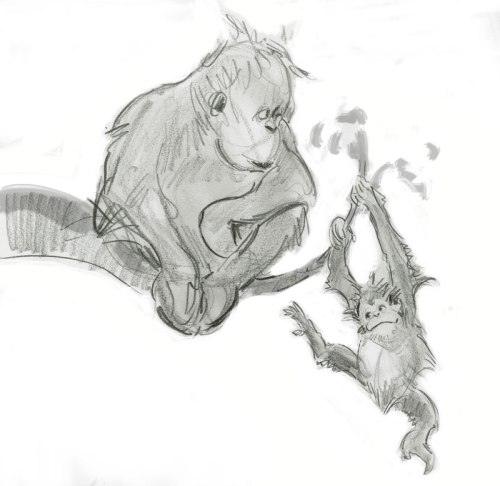
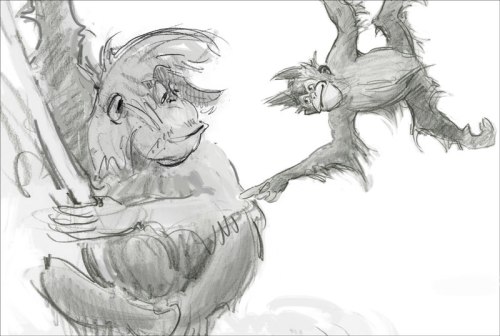
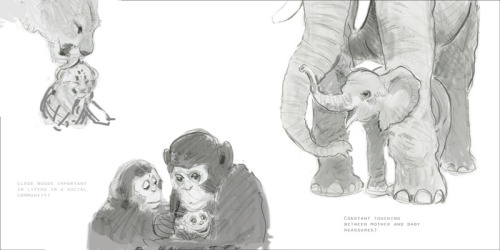
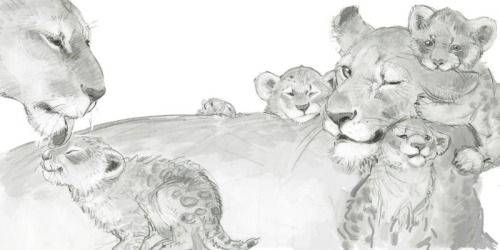
Once I feel like I’ve captured that intimate portrait between the animals, I start focusing on the details, which describe their faces and bodies. Slowly my drawings become more refined until at last, it is ready for a light watercolor wash at the end.
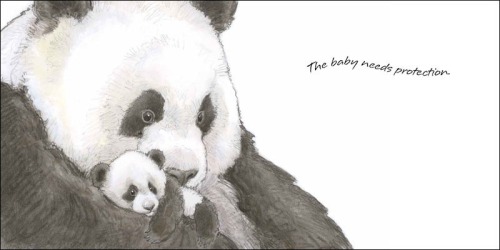

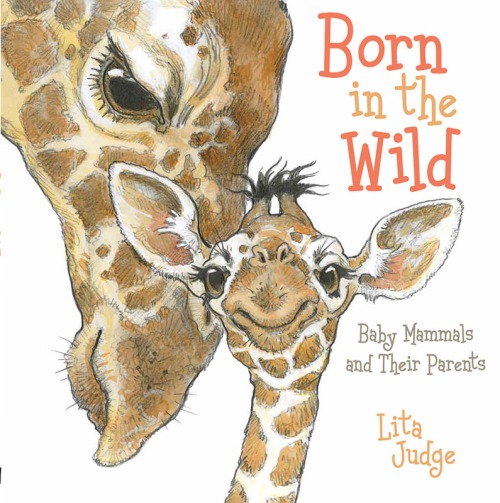 Cover for BORN IN THE WILD
Cover for BORN IN THE WILD
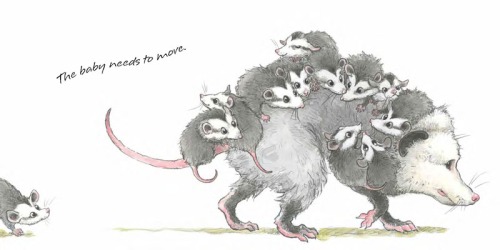
Interior and end pages
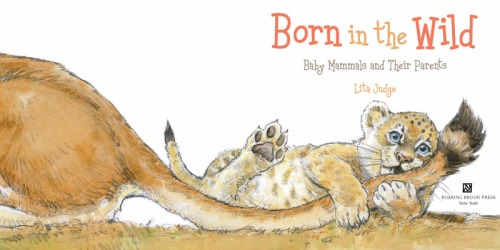
How long have you been illustrating?
The first book I illustrated came out in 2006. Then my first picture book, One Thousand Tracings, which I wrote and illustrated was released in 2007.
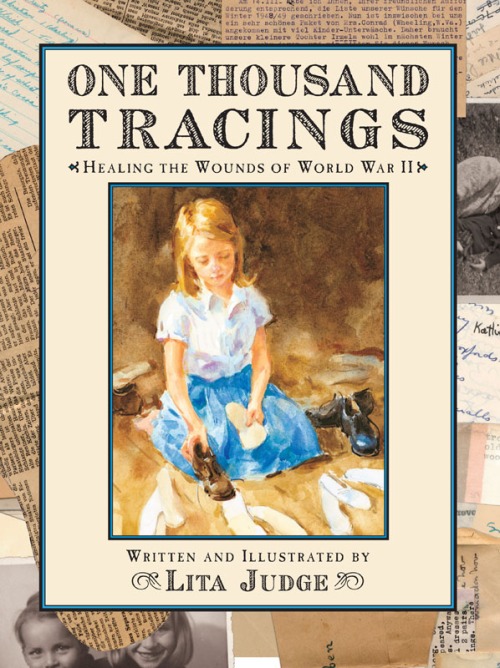
Above: Cover of One Thousand Tracings, 2007 Hyperion)
How did you get to work at the Royal Tyrrell Museum of Paleontology?
Many kids outgrow the dinosaur-crazed phase after elementary school, but when I was 14, during the summer before high school, I still had set my cap on becoming a paleontologist. I was eager to get started so I wrote dozens of letters to museums, curators and paleontologists who were working in the field, and basically pleaded with them to let me work on their dig. I had heard the Tyrrell Museum was working on a dig with literally thousands of dinosaurs in a bonebed and they were from the Cretaceous, the age I particularly wanted to study. I guess I ended up writing so many letters to Phil Currie, he eventually called and said welcome aboard. So the day after school let out the following summer, I was on a bus to Canada. I returned every year to work there and went on to graduate with a degree in Geology.
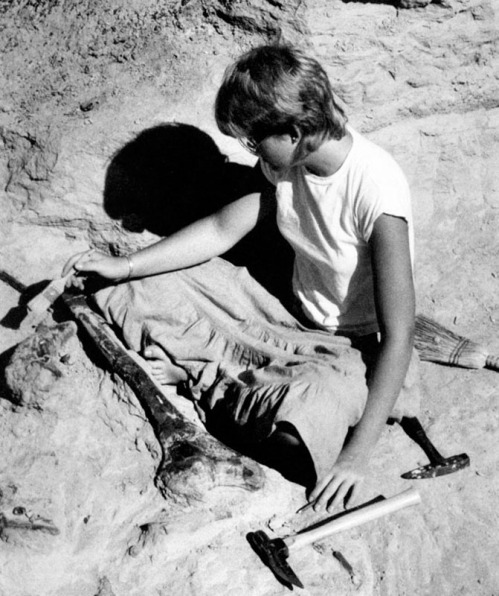
Lita on dinosaur dig
Did you do illustrating work for them?
Not really, we didn’t have much time for anything other than digging up fossils. But I did do a few drawings on my own, and they asked if they could use them for t-shirts and mugs. That was a boost, to think I could draw dinosaurs perhaps someday for pay.
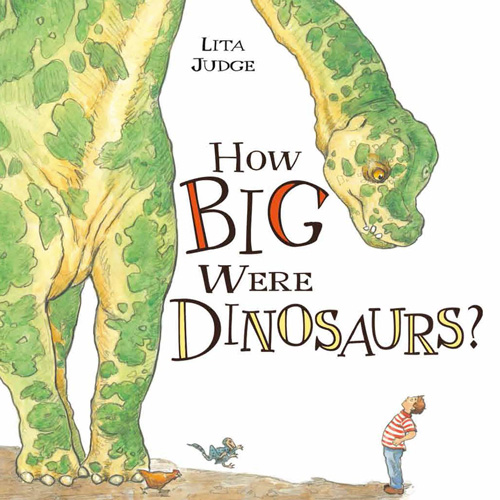
Cover of How Big, released 2013, Roaring Brook Press
Did you go to School to study art? If so, when and where?
My only schooling was in Geology, at Oregon State University. I never studied art in school. I credit all the bird watching and sketching I did as a kid for teaching me how to see, how to observe. Then later, I traveled to many great museums all over the world which, painting on location, and looking at great art.

Field paintings from Europe. Above: Stockholm cemetery. Below: Paris museum.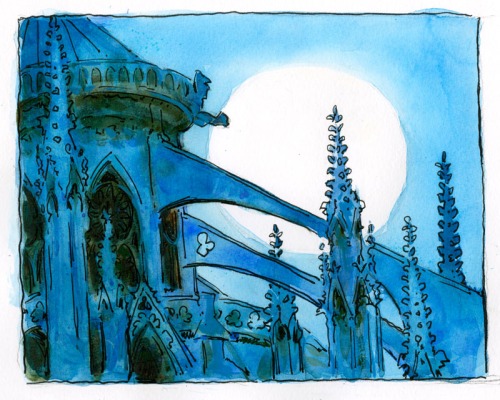
What was the first painting or illustration that you did where someone paid you for your artwork?
I think I sold a painting of a humming bird for about $35 at a Christmas fair. Back when I was a Geologist, I started drawing notecard and bookmark designs to get into doing art. Eventually I had over a hundred wildlife designs and sold them all over the country with a homemade catalogue I ran on a xerox machine. Then I started doing shows and craft fairs. Eventually I sold the business because I was spending all my time folding and filling notecard orders rather than painting. The dream was to paint, not fill orders. So I started showing and selling work in galleries. But I didn’t find my real home in art until I turned to writing and illustrating children books. The element of story is what made my art feel complete for me.

What type of job did you do right after you graduated?
I was an environmental geologist for the Forest Service. Spent a lot of time in the mud and rain working on the Oregon Coast.
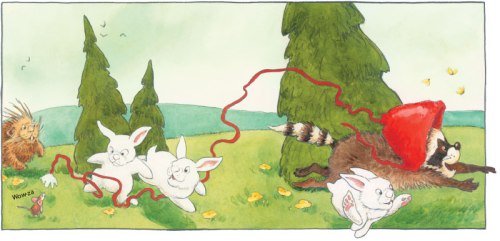
What do you think influenced your style?
I don’t really think in terms of style. My art changes and evolves each time I do a story. I think it’s because I also write them and I have a wide range of interests — science, nature, historical, fiction, whimsical — so I do a broad range of stories. Each time I create a story it needs it’s own approach to the art.
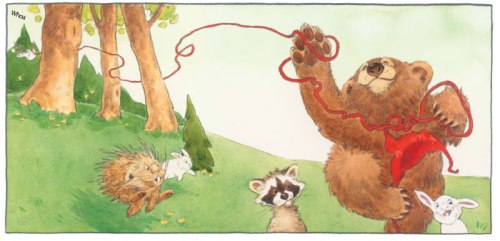
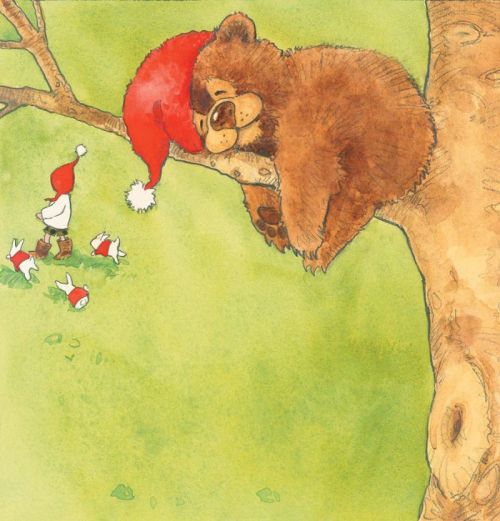
When did you do your the first illustration for children?
In 2006, my first book was to illustrate the middle grade book, Ugly, written by Donna Jo Napoli.
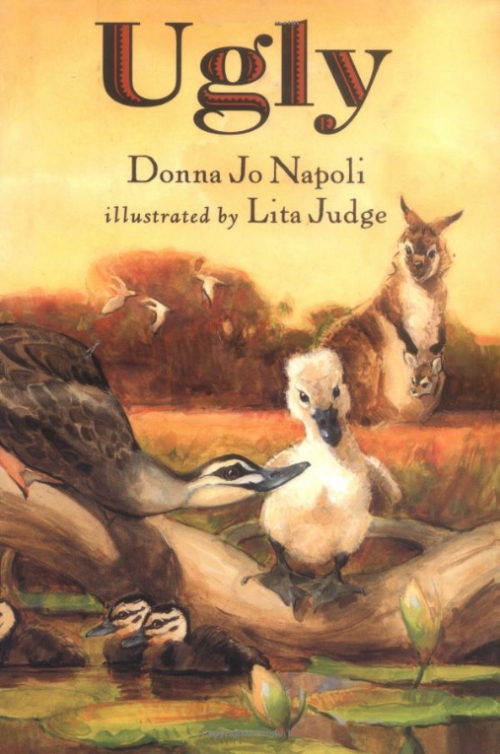
How did that come about?
I had sent an art dummy of a story I had written into Hyperion and my soon-to-be editor, Namrata Tripathi, called and asked if I’d like to do a cover for a book. Of course I said yes! I was so excited I illustrated several interior pieces as well, which made it into the book, so it turned into a nice project, and a lovely friendship with Namrata. When that was done I sent her another dummy and we were off and running on my first picture book together.
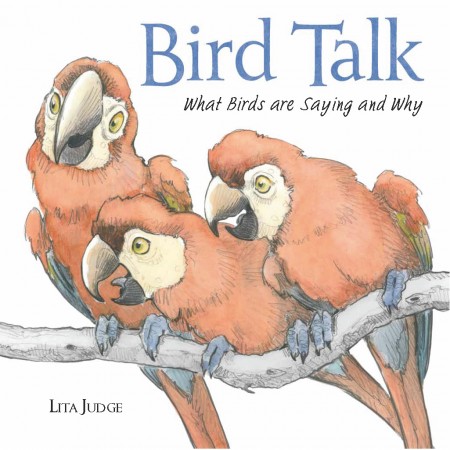
How many children’s books have you illustrated?
I’m working on my 20th right now. Several in the pipeline also.
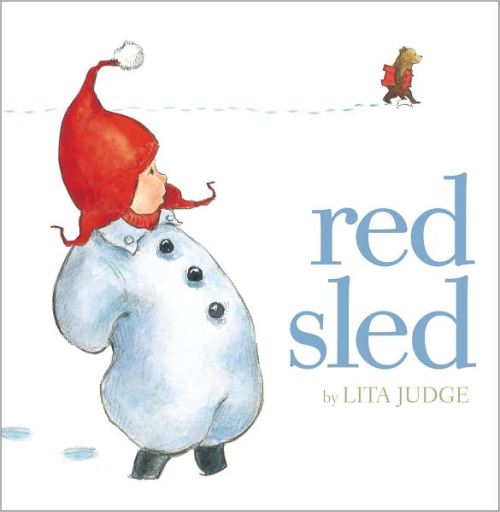
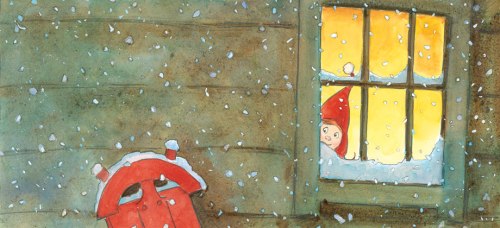
When did you decide you wanted to illustrate a children’s book?
I’ve always wanted to on some level but when I was living in really remote areas on the west coast it just didn’t seem possible. I had never met an illustrator and really didn’t know how to go about getting published. When My husband and I moved to New Hampshire I was able to meet people in the field and soon after I began submitting work. Once my first book was in the works, I knew this would be what I would spend the rest of my life doing, I LOVE it!
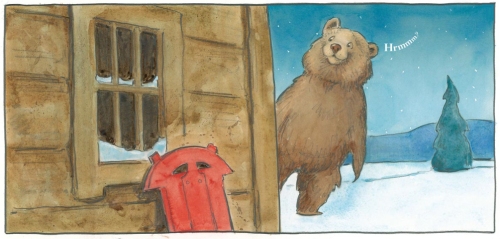
How long did it take you after that to get your first picture book contract?
I was pretty fortunate. I sent out work I think in early November and got that first project on Valentine’s Day 2005. But I had been drawing and drawing and drawing, and painting for years before then. I had built up a huge body of work before attempting to get published and I think that helped me.
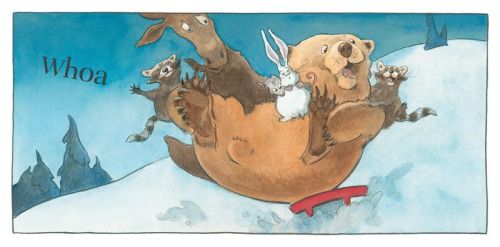
I see you illustrated a second book by Donna Jo Napoli. Did you know you were doing that book when you signed to do UGLY?
No, Donna Jo hadn’t even written it. It just grew naturally from the fact that Ugly was received well and we both had fun on that project.
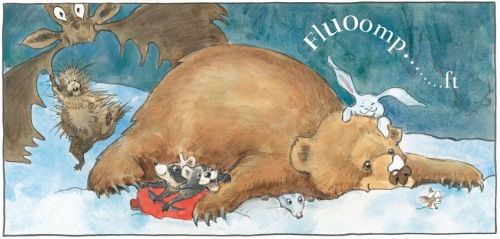
What was the first book that you wrote and illustrated?
One Thousand Tracings. It’s a true story about a relief effort my grandparents did to help people who had lost their homes in Europe after WWII. I found letters and foot tracings in my grandmother’s attic after she died and knew immediately I wanted to write about this amazing thing they had done to help all those families.
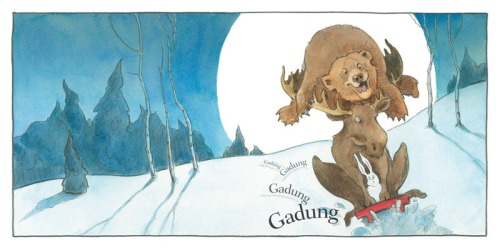
How did you find a home for that book?
I sent it to my editor at Hyperion about a week after I turned the art in for Ugly.
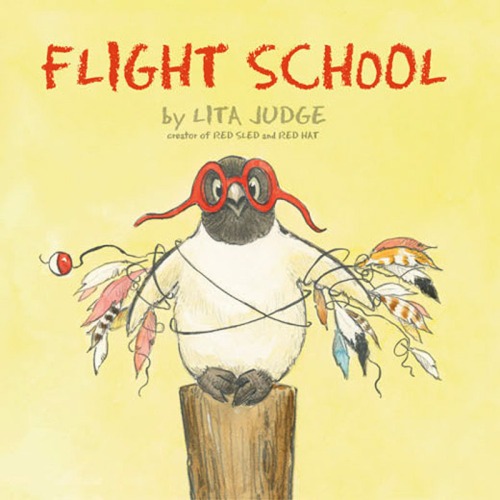
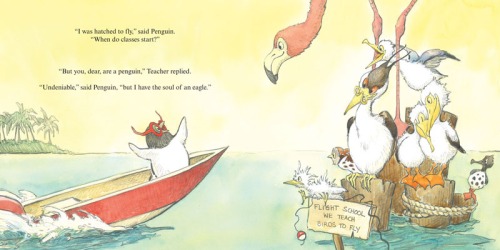
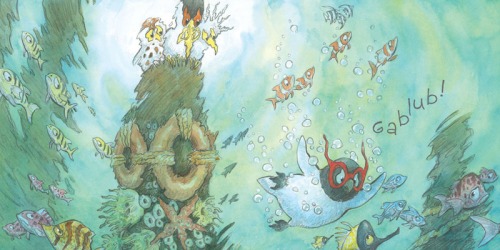
What book would you say has been your most successful?
Hmmm, I really don’t think of success in terms of how many books sold or how many editions. I think a book is successful if I as an artist got to create something I feel passionately about, and it connects with readers who also feel passionately about the same thing. Some of my nonfiction books may not sell as many books as Red Sled or Flight School, but I still feel like that little girl obsessed with dinosaurs craving to make a living as an artist when I create them and that is better than any measured success. And they solicit such beautiful responses from kids who share the same obsession, so it’s a pretty wonderful feeling. And my fiction, well that’s a dream too. To create a character that people respond to, that makes them smile or feel a connection, that is the best. I leave others to worry about book sales and things, and I just worry about making the stories I love. My career feels like a dream come true, so I guess all my books are successful in their own little ways.

What book award are you the most proud of winning?
Kind of the same feeling, I’m just so grateful when any group of librarians or teachers or reviewers gathers a group of books together that they love and decides to bestow an honor on one of my books. I treasure each nod I’ve received and am thankful because they always make me believe a little more each time I really get to keep doing this beautiful, fantastic, crazy career!
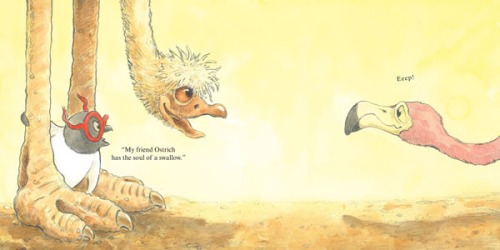
Have you worked with educational publishers?
No.
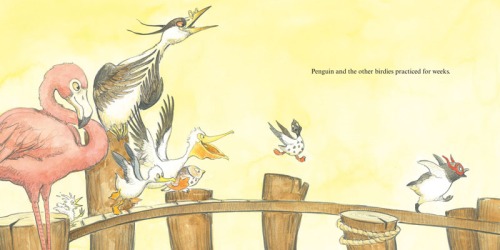
Have you done any illustrating for children’s magazines?
No. I’ve been asked for both, but I can never seem to pull away on the stories I’m brewing up. My imagination seems to keep my docket pretty darn full these days.
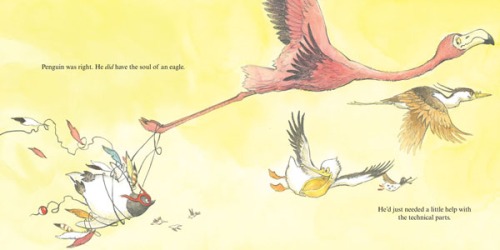
Do you have an Artist Rep. to represent you?
I work with a literary agent, Linda Pratt, who I adore because she keeps life sane for me, juggling all the contracts and turn-in dates. But more importantly, she is my sounding board for stories. She always gives me a safe creative place to bounce around ideas.
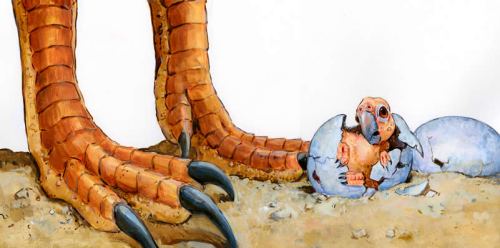
What types of things do you do to find illustration work?
Nothing, other than I just keep writing stories. I work on them nearly every day. As soon as one is turned in to my editor and I’m waiting for feedback, I turn to the next. I don’t worry about projects, just about stories, and somehow that has kept me fully employed since the day I started.
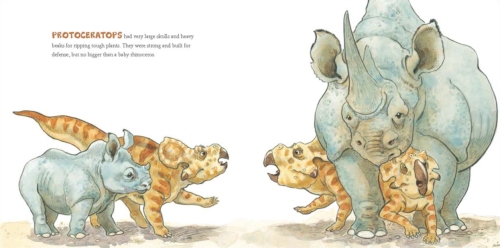
What is your favorite medium to use?
Pencil and watercolor.
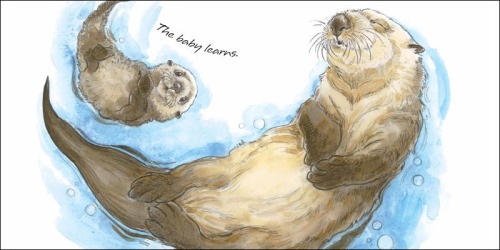
Has that changed over time?
My approach changes each time I launch into a new story. Sometimes I have a whimsical story that has to be light and fresh and very gestural. Another time, I may be working on a nonfiction that needs a more detailed approach. I’m working now on a book that takes place at night and has an element of mystery so things are dark with kind of magical lighting and a big beautiful moon. Another story I’m working on now is for much older kids and it’s kind of dark and at times very sad and scary, so that means a huge departure on my approach. I love not having a set style. It means I have to reinvent myself a lot, and that can take a lot of hours at the easel, but it is never boring.
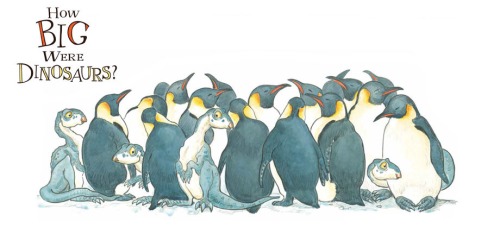
What I really want to know is how did you find such a great studio? Did you buy the house because of that room? Had it been a church?
I build it. My husband and I found a piece of land and I designed it. We had been saving and dreaming for a very long time, so the studio grew out of that energy. I found a salvaged church window and lugged some niches home from France that were made out of 15th century oak and were in a church that was sadly destroyed in WWI, but they have a home with me now. And I carved ravens for the roofline outside to reflect my background. I was born on the Tlingit Indian reservation in Alaska and the ravens are my homage to their beautiful art and culture that inspires me. I’m grateful for everyday I get to create in this space!
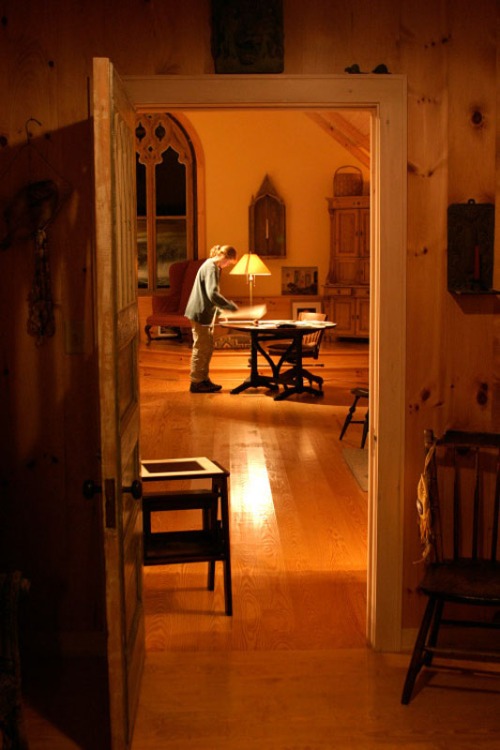

What is the one thing in your studio that you could not live without?
Natural light and my critters!

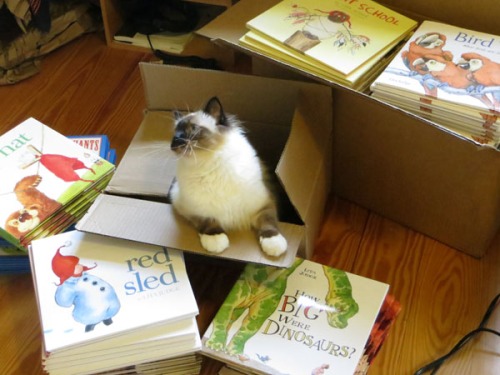
Do you try to spend a specific amount of time working on your craft?
I just work. Really I don’t keep hours. I just wake up every day eager to get back to the stories, and march on through the day and into the night and through the weekends. I hate being sick because that’s about the only time I’m not working and that for me is just plain boring. There is always at least 3 unfinished stories on my easel and a few more whispering in my ears, so as long as that is true, I’ll be working. I occasionally slip out for a bike ride, but I’m pretty much to be found with pencil or brush in hand.
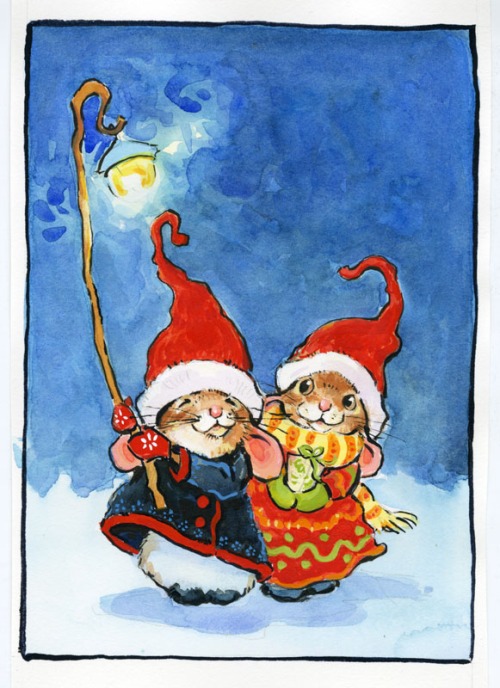
Do you take pictures or do any types of research before you start a project?
I do lots of research and quite often take pictures. That is always a fun part. My parents are wildlife photographers and my grandparents were research biologists. So I think I came to love that part of the work naturally. I do a lot of photo shoots with kids and animals, whatever the need may be. Have had fun over the years, travelling to places I paint, working with elephants, taking back trips up into the back country, feeding giraffes. Research is the fun part indeed!
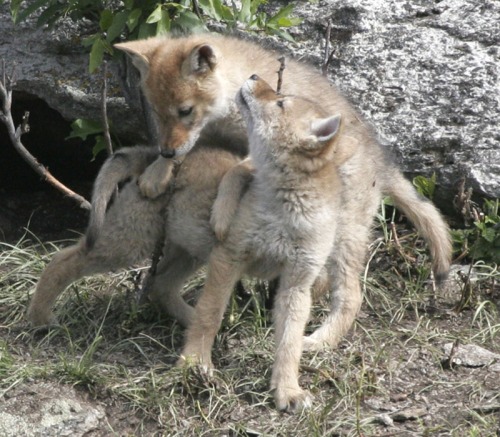
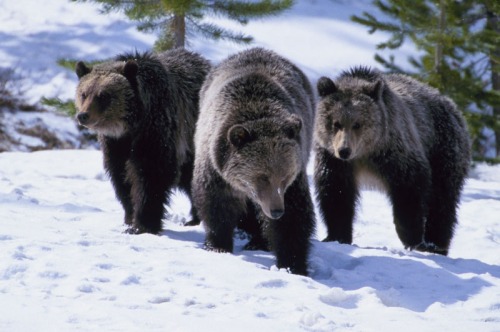
Which illustrated book is your favorite?
Ah, that is like asking a mom which is her favorite kid. OK, I may have a special fondness for a certain penguin (in Flight School) but don’t tell the others. And I’m working on two books now that I’m bursting to let out in to the world, but that will have to wait. I’ll just say Paris, Owlets, moons and fun!
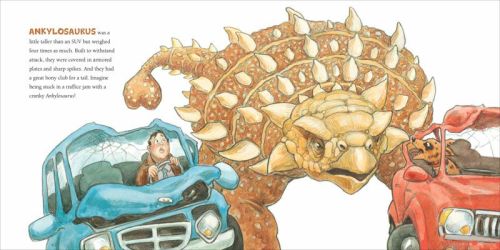
Do you think the Internet has opened doors for you?
Oh yes, it’s a wonderful way to connect with people you would never meet otherwise. I get offers to speak and all sorts of wonderful things come out of the fact that people can so easily find your website and get a sense of what you have to offer. And I’m grateful for wonderful friendships with other writers whom I rarely see but keep in touch with.
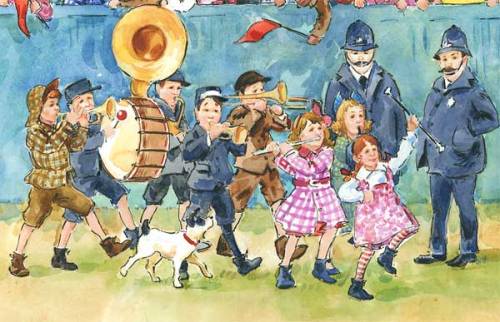
Do you use Photoshop with your illustrations?
I do a lot of planning with Photoshop. I find it a wonderful creative tool hat helps me really explore and push a composition in a way I can’t with just pencil. I love how I can really play around with values as well so that you don’t have to muck around too much in guesswork with real paint. That never works well with watercolors.
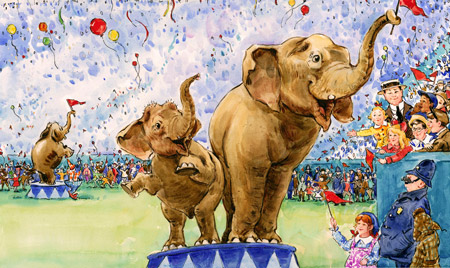
Do you own or have you used a Graphic Drawing Tablet in your illustrating?
I do use one a lot in the planning stages. And a little in the final art- again it really depends on the story and what effect I’m trying to get. They are wonderful for some things, but I find a good old fashioned brush loaded in paint my favorite tool.
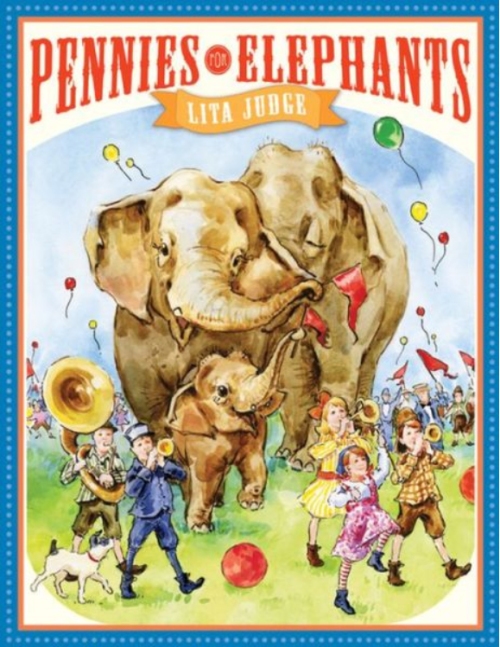
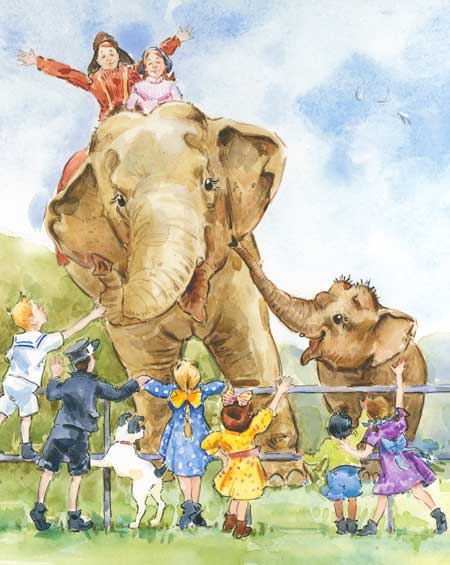
Do you have any career dreams that you want to fulfill?
To keep doing books that excite and interest me for the rest of my life! To never ever have the feeling that I want to slow down. And to travel to more wonderful places that allow me to soak up their beauty and capture their essence in a story. To continue connecting with kids, teachers, and parents over stories and feel in some small way your work was a part of their imagination and life. That’s all I want.
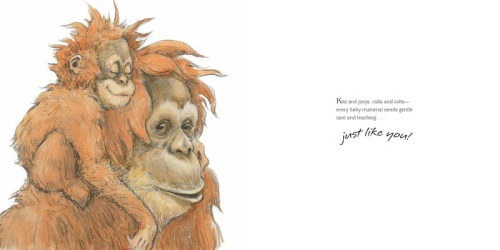
What are you working on now?
Well I have 5 books in various stages. Some I can let out of the bag, and a couple that need to stay inside where it’s safe and warm just a little longer. My next nonfiction book, BORN IN THE WILD, coming out with Roaring Brook has already gotten two starred reviews and will be released on October 21st, so that’s exciting. Then I have a picture book about my Parrot, Beatrix, coming out next spring with Atheneum entitled, GOOD MORNIGN TO ME! It’s a fun story about life with a very happy and exuberant parrot. Then I have a book I’m illustrating about a pygmy marmoset that has been a delight work on and took me on a mental journey to the Amazon, pretty fun (coming out with Boyd’s Mill). And then my owlet book set in Paris which I’m working on now (to be released with Dial), and then… oops, I can’t tell you what I’m working on after that, but it’s a big project that has pushed me to extremes and I can’t wait for it to be ready to break out of the studio and into the world.
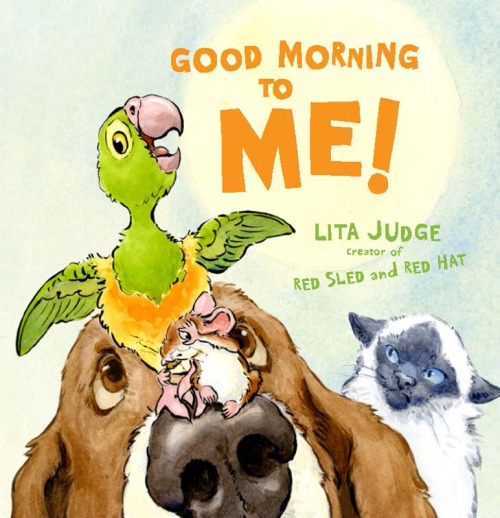
Cover of Good Morning to Me, to be released Spring 2015, Ateneum
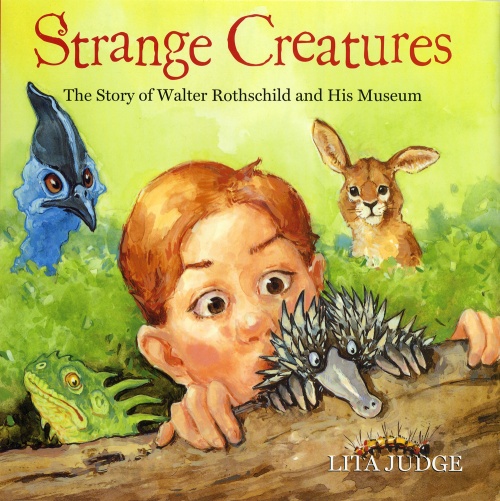

Do you have any material type tips you can share with us? Example: Paint or paper that you love – the best place to buy – a new product that you’ve tried – A how to tip, etc.
My all time favorite brush is an Isabey Petite Gris brush, all sizes. It’s shaped kind of flat and fat so it holds gobs of paint while still keeping a good point. I bought my first in Paris after I dropped my brushes in the Seine, and man am I glad I did, because this brush paints like a dream. I also love cheep bamboo calligraphy brushes as I do a lot of line work. My tools are pretty simple 4b pencils, arches watercolor paper, Windsor Newton paint.
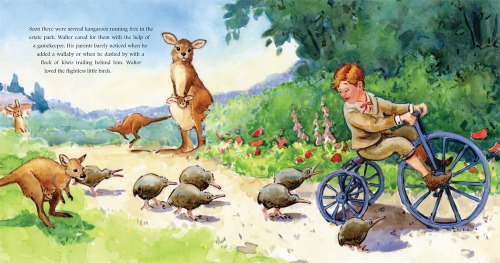
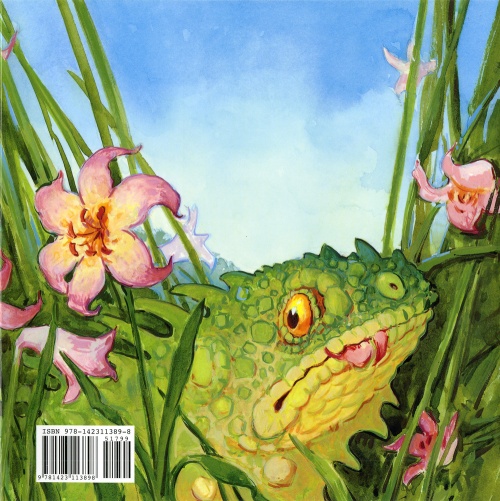
Any words of wisdom on how to become a successful writer or illustrator?
It sounds kind of flippant, but I mean it in all sincerity – don’t worry about success. Just worry about the writing and/or the art. People want good stories, they crave them, if you focus on the craft, on making it the best piece of art or writing humanly possible, the “success” part of it will fall into place, at least enough so that you get to make a comfortable living at it and keep doing it. I honestly don’t think about number of books sold, etc, I’d go crazy second guessing every whisper of an idea that comes into my brain and I’d give up on it long before it had the time and nurturing from me to grow into a real story. But if you just focus on the art, and the writing, it will grow into something others can love. Just make a Utopia for yourself of your work, and the other “career” part of things will come out of that.

Sketch for upcoming book, Born in the Wild
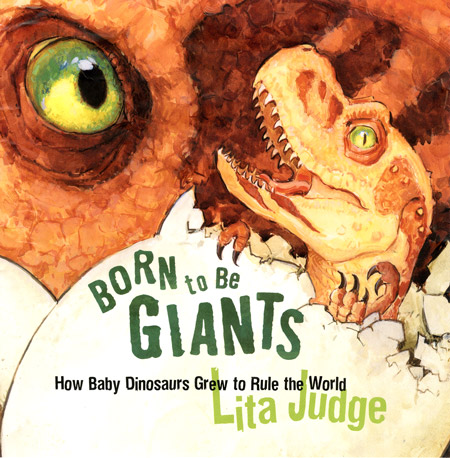
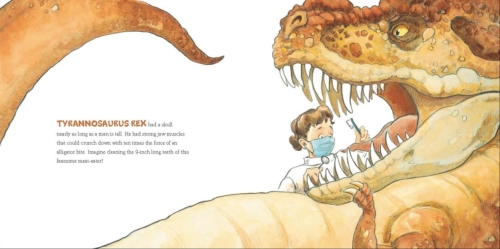

Thank you Lita for sharing you journey and process with us. Please let us know when your new picture books come out. We’d love to see them and cheer you on. You can visit Lita at: http://www.litajudge.net
If you have a moment I am sure Lita would like to read your comments. I enjoy reading them, too, even if sometimes I don’t have time to reply to all of them. Thanks!
Talk tomorrow,
Kathy
Filed under:
Advice,
authors and illustrators,
demystify,
illustrating,
Illustrator's Saturday,
inspiration,
Interview,
picture books,
Process Tagged:
Born in the Wild,
Flight School,
Lita Judge,
Red Sledge 


By: Kathy Temean,
on 10/2/2014
Blog:
Writing and Illustrating
(
Login to Add to MyJacketFlap)
JacketFlap tags:
Contest,
Events,
inspiration,
authors and illustrators,
opportunity,
children writing,
Tara Lazar,
Free Fall Friday,
Charlotte Bennardo,
First Page Contest Critique,
NJSCBWI Free Event,
Add a tag
Here are the guidelines for submitting a First Page in October: In the subject line, please write “October First Page Critique” and paste the text in the email. Please make sure you include your name, the title of the piece, and whether it is as picture book, middle grade, or young adult, etc. at the top.
Plus attach your first page Word doc. to email. Format using one inch margins and 12 point New Times Roman font – double space – no more than 23 lines. Send to: kathy(dot)temean(at)gmail(dot)com. Guidelines must be followed. Four first page will be critiqued and the rtesults posted.
DEADLINE: September 24th.
RESULTS: October 31st.
ILLUSTRATORS: Illustrations needed for this blog.
IF YOU LIVE IN THE AREA DON’T MISS THE OPPORTUNITY BELOW:
NaNoWriMo and PiBoIdMo Kick-Off night.
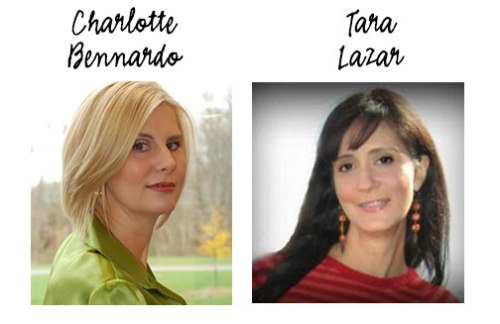
FREE EVENT!*
Monday, Oct. 6, 2014 – 6:30 p.m. to 8:00 p.m.
Adams House, Princeton Theological Seminary, Library Place. Princeton.
Cost: * FREE SCBWI Members / $35 Non-SCBWI Members
Join presenters—and published authors—Charlotte Bennardo and Tara Lazar for tips, tricks and ways to prepare for November’s National Novel Writing Month or Picture Book Idea Month.
A great way to light the motivational fire under your writing buns!
If you’re a novelist and want to finish up that first draft, try out a new story idea, and beyond, come and meet Charlotte Bennardo and learn how to prepare for thirty days and thirty nights of literary abandon! The goal of National Novel Writing Month is to write 50,000 words of your novel. That’s it plain and simple. So, join to chat about novel writing and learn how to stay on target, keep track of your word count, receive motivational tips, ask questions, and more!
For more about NaNoWriMo, visit http://nanowrimo.org
New to generate some new ideas? Read on …
If you are a picture book writer (and/or illustrator), PiBoIdMo is for you!
Founded online by http://taralazar.com the goal of PiBoIdMo, during the month of November, is for each participant to jot down one new picture book concept daily in their personal “idea notebook”. To help you along on this journey, each day http://taralazar.com will feature published authors and illustrators blogging about their sources of inspiration. The ideas you create this November will fuel your writing for the coming year.
Click here to register for the NaNoWriMo/PiBoIdMo event
About Charlotte:
As the co-author of the YA Sirenz Series (Sirenz, Sirenz Back in Fashion- Flux) and Blonde Ops (Thomas Dunne 2014) Charlotte also writes solo novels (MG, YA) which she is working on and shopping around. She has written numerous articles for publications like NJSCBWI ‘Sprouts’, Centauri, Happy, Working Mother and other magazines, and given numerous workshops at the NJSCBWI annual conferences. She’s looking for her backyard squirrel who lost his home when the tree was trimmed (He answers to “Jack.”)
About Tara:
Street magic performer. Hog-calling champion. Award-winning ice sculptor. These are all things Tara Lazar has never been. Instead, she writes quirky, humorous picture books featuring magical places that adults never find. Her debut picture book, THE MONSTORE, is available now from Aladdin/Simon & Schuster. Tara has several more books being released in the coming years with Random House, Sterling and Disney-Hyperion. Tara is the founder of PiBoIdMo, Picture Book Idea Month, an online picture book writer’s event held every November at taralazar.com or piboidmo.com.
This year’s event marks the 6th year of PiBoIdMo, and more than 1200 writers are expected to register.
Talk tomorrow,
Kathy
Filed under:
authors and illustrators,
children writing,
Contest,
Events,
inspiration,
opportunity Tagged:
Charlotte Bennardo,
First Page Contest Critique,
Free Fall Friday,
NJSCBWI Free Event,
Tara Lazar 


By: Kathy Temean,
on 9/26/2014
Blog:
Writing and Illustrating
(
Login to Add to MyJacketFlap)
JacketFlap tags:
Interview,
picture books,
inspiration,
Process,
illustrating,
authors and illustrators,
How to,
Illustrator's Saturday,
Lisa Fields,
The Ringling School of Art and Design,
Add a tag
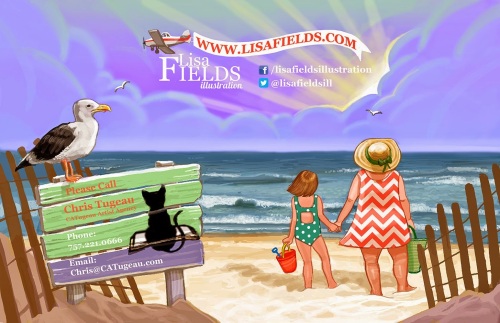
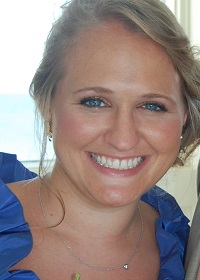 Lisa Fields is an illustrator based out of New York City and is represented by Chris Tugeau.
Lisa Fields is an illustrator based out of New York City and is represented by Chris Tugeau.
She received her BFA in Illustration from the Ringling School of Art and Design in Sarasota, Florida and attended The Illustration Academy.
Lisa is a member of the Society of Children’s Book Writers and Illustrators.
Some clients include:
Boys’ Life
Cobblestone Magazine
Cricket Magazine
Dig Magazine
Faces Magazine
Highlights for Children
Houghton Mifflin
Kaeden Books
Odyssey Magazine
Pelican Publishing
Pinata Books
Ranger Rick Magazine
Tricycle Press
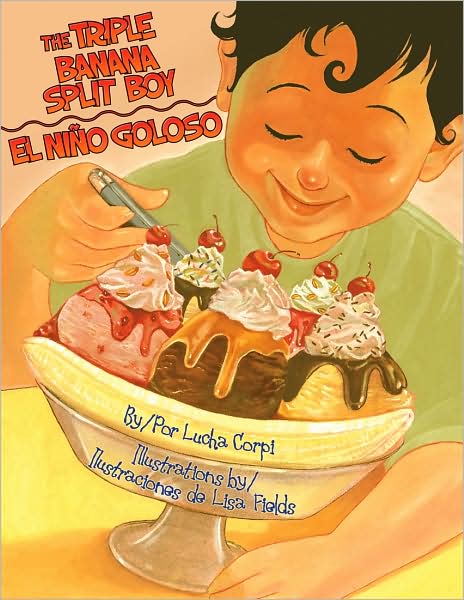
1. How long have you been illustrating?
I graduated from college in 2006. After graduating I moved back home with my parents for a while so I could start my freelance illustration career…but obviously like most artists I have been drawing for as long as I can remember.
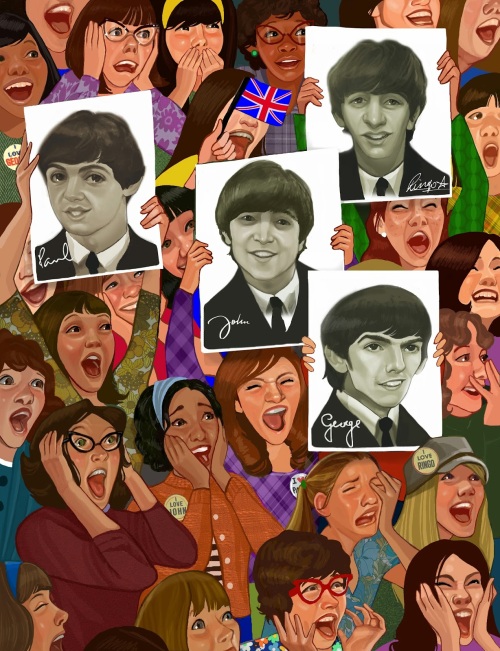
How did you end up attending the Ringling School of Art and Design in Sarasota, Florida to get your BFA?
I can’t remember how exactly I came across Ringling in my art school research. I know I had my portfolio reviewed by them at one of the school fairs. Ringling was rated one of the best art schools and it was in Florida by the beach! As an 18 year old I was very excited about both of those things. I went to visit the school with my mom and after the visit decided that out of all the art schools I had seen it was the best fit for me as a person and as an artist.
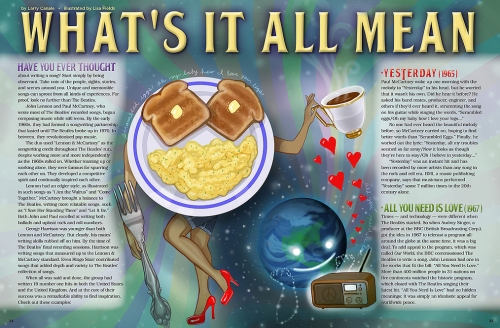
What types of classes did you take that really helped you to develop as an illustrator?
I learned a lot in figure drawing/painting classes. It is amazing how much you learn from drawing from life.
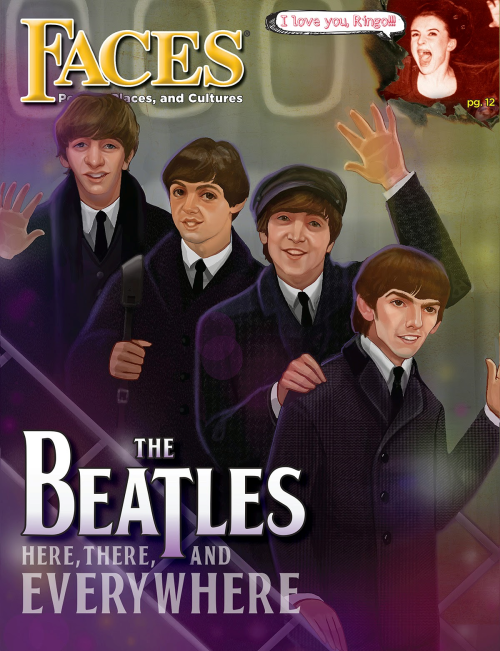
Tell us about the Illustration Academy. Is that an online college?
The illustration Academy really changed my life. It is a summer program that I attended after my junior year and then again after my senior year of College. I found out about it because Ringling actually hosted them for a few years. They gave a presentation to my school and once I saw it I knew that it was something I needed to do. Along with the amazing faculty that stays the entire workshop, every week there is a guest artist that comes in and gives you an assignment, critiques your work and talks about the industry in general. You get to meet, work with, and get advice from the top illustrators in the industry today. I encourage artists of any level to check them out: http://www.artconnectionacademy.com/IllustrationAcademy.aspx.
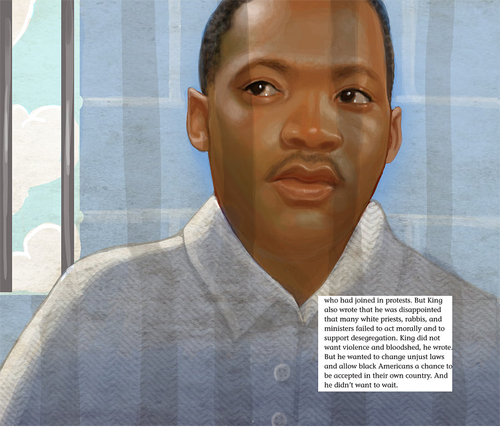
What did attending the Illustration Academy bring to the table for you?
I learned invaluable advice from all the faculty at the illustration academy. They helped me round out my portfolio and gave me a realistic view of what to expect once I got out of school. It was also a great time and REALLY inspiring.
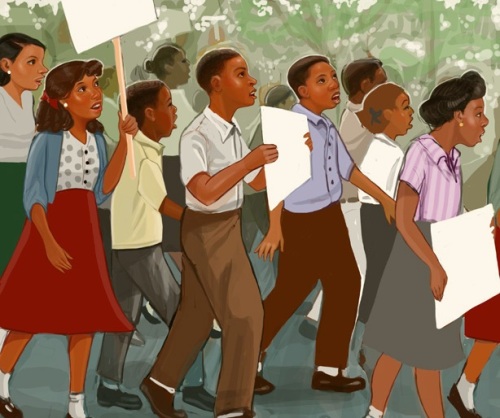

What was the first things you did that you got paid to do?
The first assignment I was paid for was for a Magazine called Las Olas magazine. I illustrated portraits of five local chefs in Fort Lauderdale, Florida.
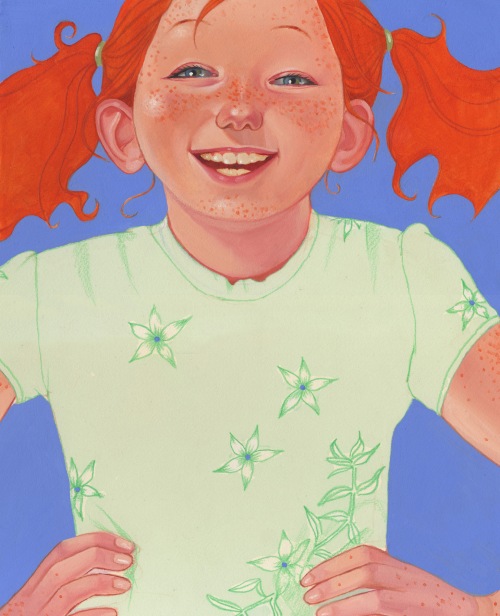
Have any of your college connections ended up helping you get work?
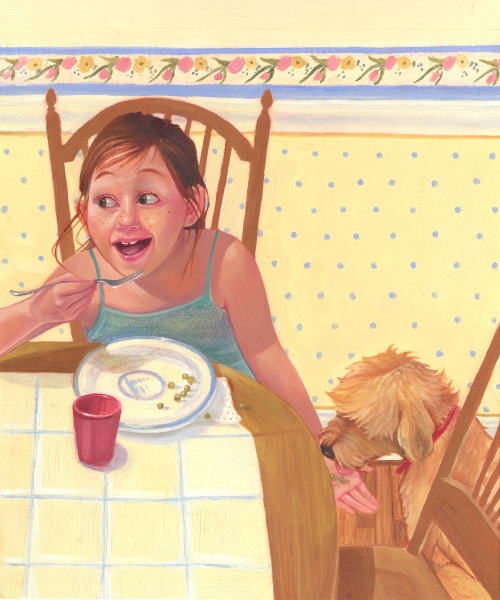
How did you end up leaving in Florida to live in New York?
The first assignment I was paid for was for a Magazine called Las Olas magazine. I illustrated portraits of five local chefs in Fort Lauderdale, Florida.

How and when did you decide that you wanted to illustrate children’s books?
Illustrating children’s books was something that I was always interested in but for some reason coming out of school I really did not have that many images of children in my portfolio. When I got out of school adding more images of kids to my portfolio was one of the first things I worked on.
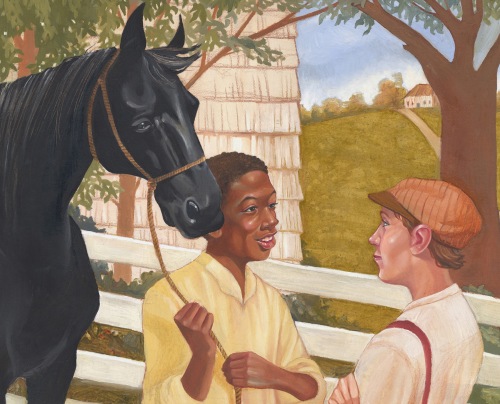
What was the title of your first book? When and how did you get that contract?
The first children’s book I illustrated was The Triple Banana Split Boy with Pinata books. The art director contacted me after a promotional mailing that I did. I would send out postcards every couple of months to a mailing list that I had created. The mailing list was mostly compiled from this book: http://www.amazon.com/2014-Childrens-Writers-Illustrators-Market/dp/159963726X/ref=sr_1_1?ie=UTF8&qid=undefined&sr=8-1&keywords=childrens+book+artist+guide.
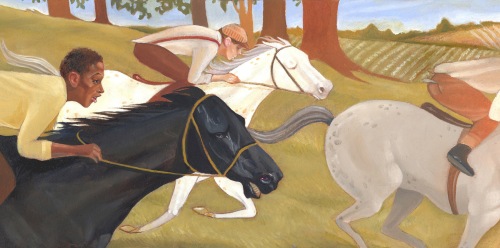
How long have your been represented by Christina Tugeau? How did the two of you connect?
I am fairly new to Chris’ agency. I have been represented by her for a little over a year now. One of her former artists that she used to represent was a teacher at Ringling and I remember him telling me and my friend to check out her site. I didn’t think I was ready for an agent at the time but agency with the Cat was always in the back of my mind. When I decided I wanted to get an agent she was the first person I emailed and I was thrilled that she wanted to set up a meeting the next time she came to New York City.
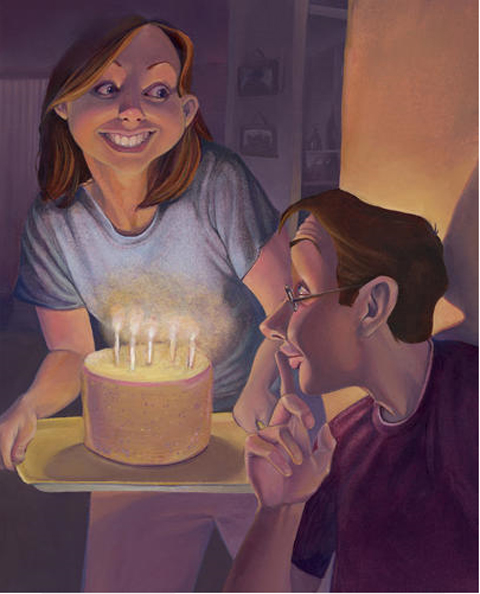
What types of things do you personally do to get your work seen by publishing professionals?
I still send out postcards myself every now again but that is mostly for editorial work. I try my best to stay active on social media because you never know who might end up on your page. I have a Facebook page and a twitter account. I have to admit I don’t think I have quite grasped the world of Twitter but I still tweet out new images just in case! I also try to keep my website and blog up to date with my most recent work. I am always bummed myself when I go to artists blogs that I like and it has not been updated in a few years so I try my best to keep on top of it.
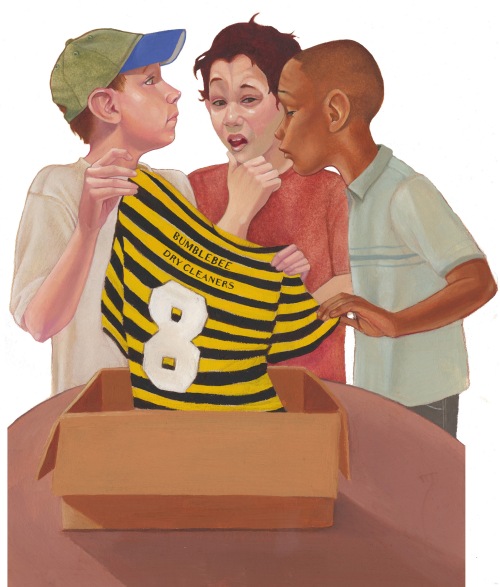
Have you ever tried to write and illustrate your own story?
This is definitely something that I am interested in. I have a few ideas floating around my head that I have to get on paper. I used to write stories and illustrate them all the time when I was a kid. It is hilarious to find them and read them now. I remember in elementary school we would get to write a story every year that would be published in the “publishing center” (ie a cardboard cover wrapped in wallpaper). It was the best time of the school year. One of my masterpieces was called The Princess and the Unicorn. You can’t get any more girly than that!
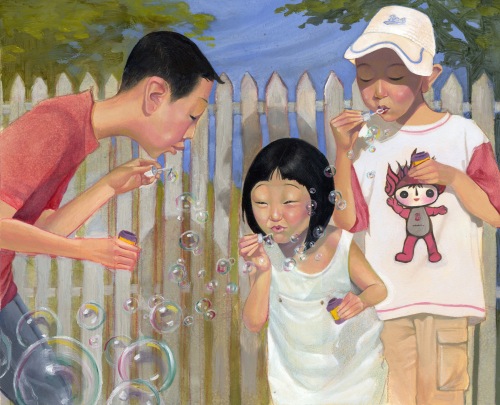
What is your favorite medium to use?
These days I have been working digitally. I got a Wacom cintiq a couple of years ago and fell in love with it. I live in a little NYC apartment so it is more practical for me to sit down at the computer instead of setting out all the paints.
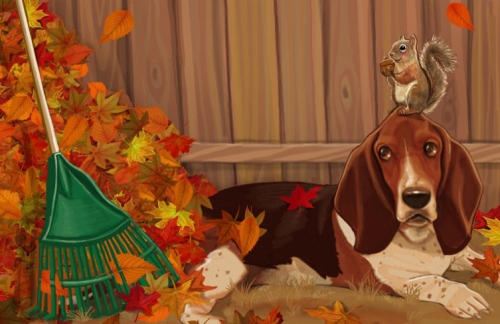
Have you seen your style change since you first started illustrating?
I think my style has changed a lot. I learn with every project that I do and I am always trying to do better than my last assignment. I think someone would probably be able to tell that the images were drawn by the same person but I think my work looks a little more polished and consistent now.
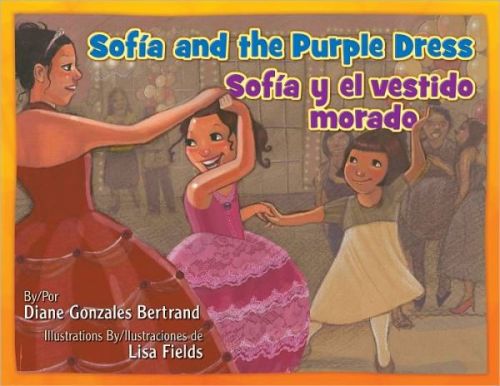
How many picture books have you illustrated?
I am currently working on my 4th book with Pinata books. I have illustrated two books for Pelican Publishing and one for Tricyle Press which was an imprint at Random House.
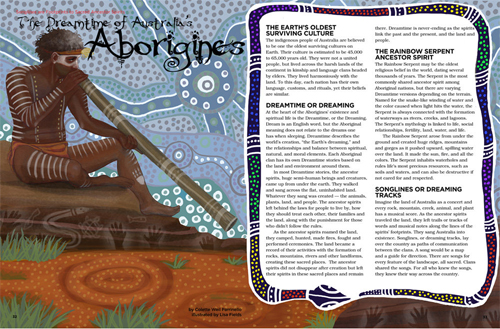
How did you get the contract with Pinata Books to illustrate GRADMA’S CHOCOLATE?
I had already illustrated The Triple Banana Split boy with Pinata Books. I think the art director I worked with thought that Grandma’s chocolate would be a good fit for me as well.
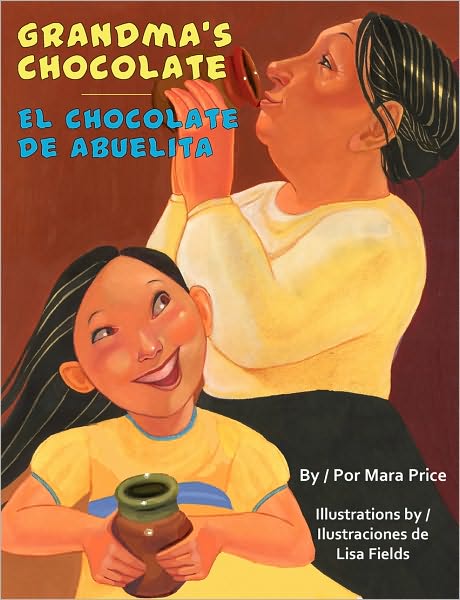
I see you, also illustrated TRIPLE BANANA SPLIY BOY with Pinata Books, too. Was that a two book deal?
It was! It was the first book that I illustrated.

What is your biggest success story? The thing you are most proud of?
I am always proud if a client comes back and asks me to do more work for them. After leaving school you don’t really get critiques anymore which is something that you were so used to all the time. When a client comes back to you and asks you to do more work for them that’s how you really know they were happy with what you did for them in the past. There are so many artists out there to choose from so it means a lot!
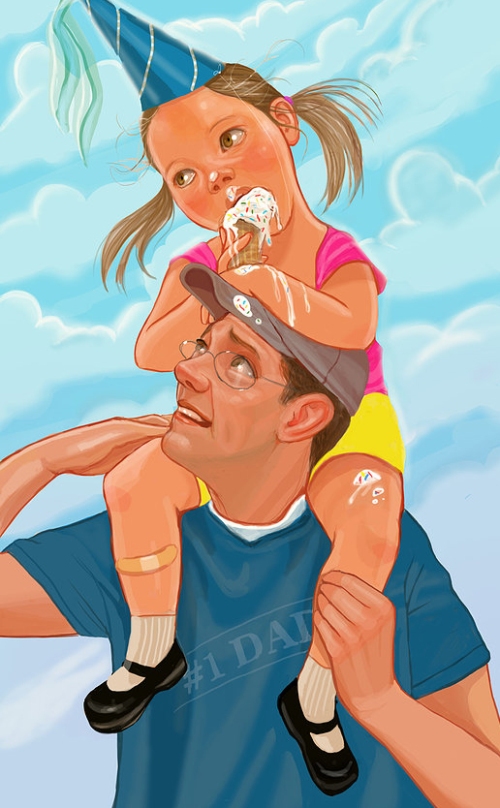
Are you open to working with self-published authors or is that something Christina would not let you do?
Typically I work with publishing houses but I might be open to it if it was a story that I really liked as well.
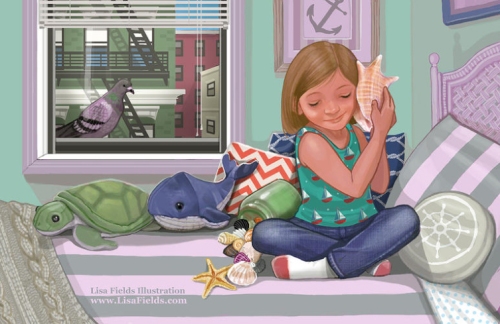
Have you thought about writing and illustrating your own books?

Is Lewis Tewanima: Born to Run your latest picture book? How did Christine get that contract for you?
Lewis Tewanima: Born to Run was the second book that I did for Pelican Publishing. I already had a contact at Pelican before I was represented by Chris. Again, I got the first book from a postcard mailing. The art director told me she had been keeping my postcards for years so you shouldn’t give up hope if you do not hear back from people right away.

Have you done any work for educational publishers?
Yes, I have done a lot of work in the past year for educational publishers through jobs that Chris has gotten me. I am currently working on my 4th reader for Heinemann Books at Houghton Mifflin. These types of jobs I think would be very hard to find without an agent so it has been really great working with Chris.
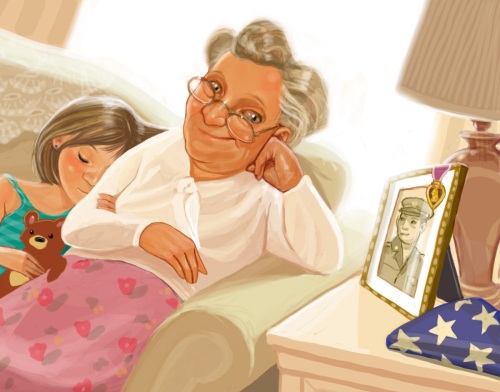
Do you use Photoshop in your work?
I do use Photoshop on my wacom cintiq.
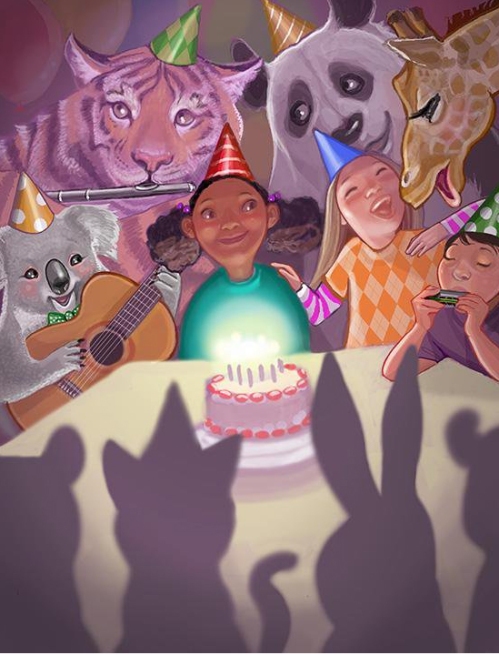
Do you own a graphic tablet?
I have a big wacom cintiq at my desk and also a portable one so I can take my illustrations on the go with me (or sometimes it is nice to just sit on the couch and work in a differnet room). I am able to sync my files between the two devices with Adobe’s cloud service.
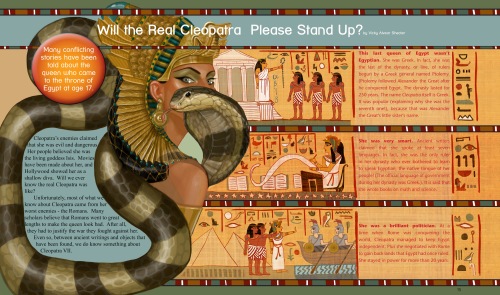
How much time do you spend illustrating?
I draw every day. If I don’t have an assignment to work on I work on some of my own stuff.
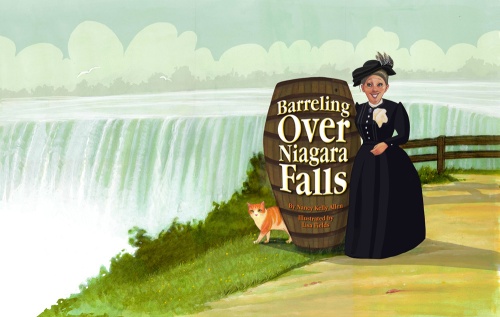
Do you have a studio set up in your house?
I have a studio area does that count?…NYC apartment living. One day I will have a house with a studio! J
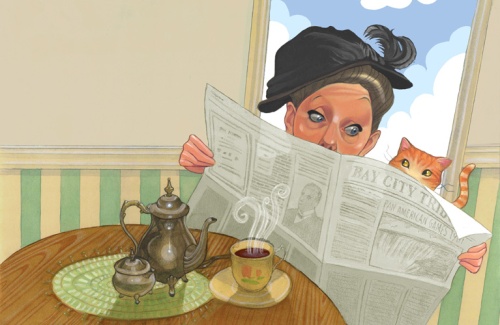
Is there anything in your studio, other than paint and brushes, that you couldn’t live without?
I have a rather large collection of children’s books and art books. I often look at them for inspiration. The children’s books have a wide range of styles. It is fun to see how different artist approach illustrating a book. My all time favorite is probably Kadir Nelson and I am loving Peter Brown and LeUyen Pham books these days as well.
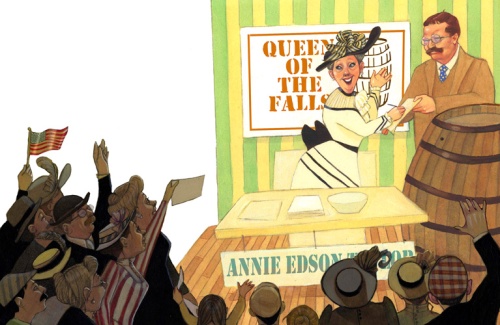
Do you take pictures or any other type of research before you start a project?
Yes, reference pictures are important for me. I usually find photos online or I take photo reference myself. The internet is an amazing tool. I don’t know what I would do without it. It would be nice to take reference pictures myself all the time but often projects call for different ages and ethnicities and the chances of knowing a model that fits the bill is not very likely in most cases.
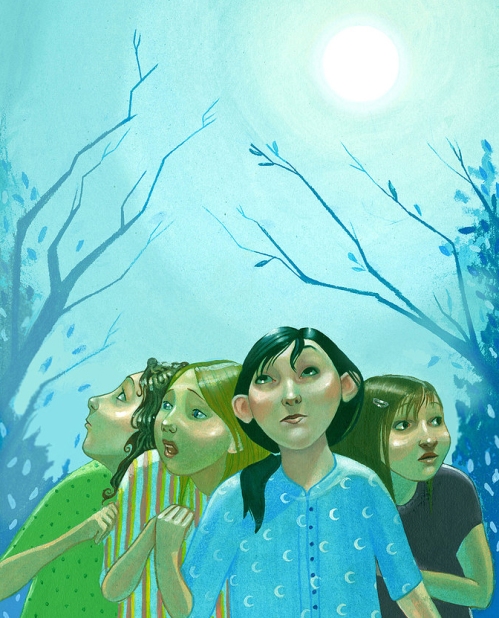
Do you think the Internet has opened doors for you?
The internet has definitely opened doors. Being able to have your portfolio online, up to date and accessible at all times is important.

Do you have any career dreams that you want to fulfill?
I would like to write and illustrate a book.
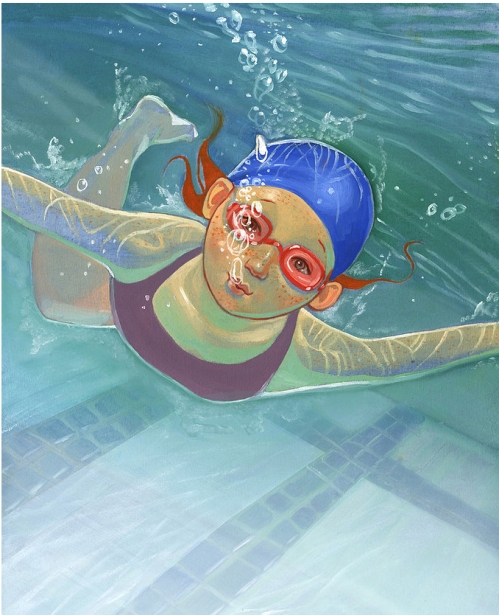
What are you working on now?
Right now I am working on some pirates for an article in Appleseeds magazine. The art director would like the pirates to be a bit menecing…which is not something that I typically do. It is a challenge and I am having a lot of fun with it! I am trying my best to make sure they are not cute, menecing pirates. I am also working on sketches for a reader for Heinemann and sketches for a book for Pinata.
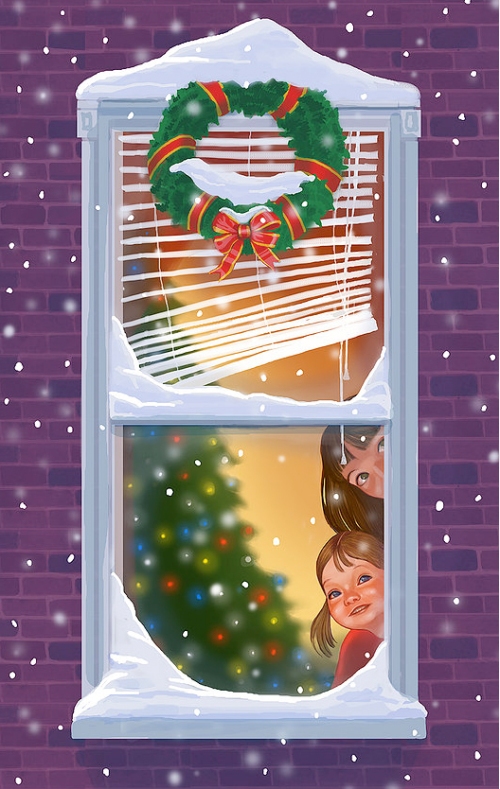
Are there any painting tips (materials, paper, etc.) you can share that work well for you? Technique tips?
I know that I have mentioned it a couple of times already but I love my Wacom cintiq. If you work digitally you should definitely look into it. It is expensive…but it is so worth it!
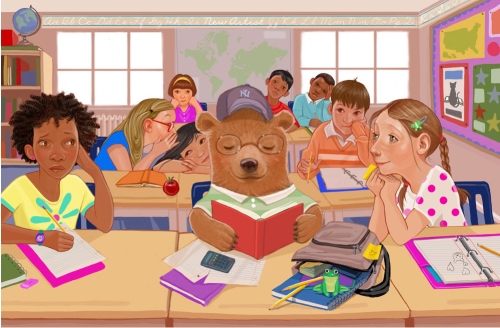
Any words of wisdom you can share with the illustrators who are trying to develop their career?
One of my favorite things to do is go to the bookstore and check out what is on the shelves. You will be inspired and will also see what art directors are looking for. If there are books that look like something your work would be a good fit for write down the name of the publisher/imprint and add them to your mailing list. I have had multiple people tell me that they saved my postcards until a project comes along that I would be a good fit for so stick with it and don’t get discouraged if you don’t hear back from people right away.

Filed under:
authors and illustrators,
How to,
illustrating,
Illustrator's Saturday,
inspiration,
Interview,
picture books,
Process Tagged:
Lisa Fields,
The Ringling School of Art and Design 


By: Kathy Temean,
on 9/25/2014
Blog:
Writing and Illustrating
(
Login to Add to MyJacketFlap)
JacketFlap tags:
Agent,
inspiration,
Advice,
revisions,
illustrating,
authors and illustrators,
L Perkins Agency,
Free Fall Friday - Results,
Rachel Brooks,
Denise Holmes,
T2 Illustrators,
Add a tag
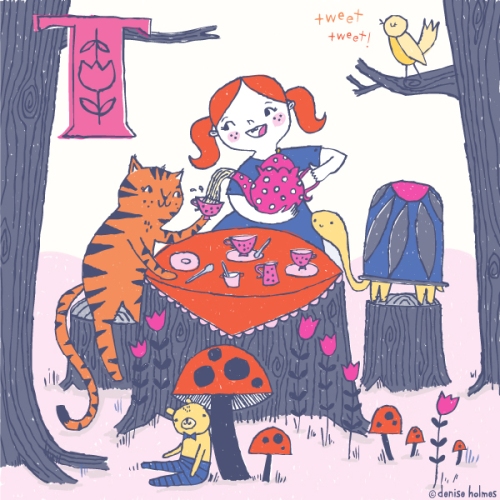
Let’s all brew a cup of tea and join the characters having tea in this illustration by Denise Holmes. Seems like a great way to enjoy reading the critiques done by Agent Rachel Brooks for September’s first page winners.
Denise Holmes created the above illustration for a collective called The Happy Happy Art Collective. She is represented by Nicole Tugeau over at T2 Illustrators. Her first picture book was released in June 2014 – If I Wrote A Book About You by Stephany Aulenback! Here is Denise’s website: www.niseemade.com
____________________________________________________________________________________
 Agent Rachel Brooks from the L Perkins Agency critiqued the following first page winners. Hope you take the time to read. You can learn a lot from listening to what the experts have to say about a first page, even if it is written by someone else.
Agent Rachel Brooks from the L Perkins Agency critiqued the following first page winners. Hope you take the time to read. You can learn a lot from listening to what the experts have to say about a first page, even if it is written by someone else.
CODENAME FOX by Donna Maloy
PROLOGUE. London. September, 1800.
I was all of seven years old, but Noreen’s iron shovel looked to me as big as a Scots battle axe. It clanged on the stone floor, not an arm’s length from my head.
“Oh, please don’t hit her!” my brother cried, yanking on her skirts.
But the scullery maid was determined. Her shovel banged down again, this time against the hearth behind me. A piece of stone whizzed past my whiskers.
“Get out o’ me way,” she told Graham. “Nasty, dirty thing that is. Tracking flour all over me clean floor.”
With a yell like a savage pirate, four-year-old Graham chomped down on her arm. The shovel flew out of her hands, clattering to a stop—right in front of Papa’s black, spit-polished boots. He’d come to see what all the noise was about. Now I was in a different sort of trouble.
With a sob, Graham pulled at Papa’s leg. “Make Noreen stop trying to kill Celia!”
Papa’s head jerked up and he looked toward the corner where I crouched.
“Celia?”
I couldn’t see any point in lying. Shaking with fear, I looked up and nodded.
He stared at me. Of course I didn’t look much like an Ashleigh right then. I looked like a small, flour-speckled mouse.
“Come here,” he said, much too calmly. I could almost feel a spanking on the way.
“Miss Ce-Celia?” Noreen frowned. “But that’s only a dirty little mousie, idn’t it? What’s wrong with killin’ it?” She backed up against the chopping table, eyeing my father and me as if she didn’t know which of us worried her more.
“Get out,” Papa said quietly, speaking to the girl but never taking his eyes from me. Oh, I was in for it now. That was the voice Papa used with stable boys who played dice.
HERE IS RACHEL:
CODENAME FOX by Donna Maloy
This title is intriguing! Sounds like a story filled with fun adventure, although it doesn’t give me a 1800s London vibe, more sci-fi or spy.
I think this opening line could be stronger. It tells us the character’s age, rather than showing us how old the character is through how he talks, the story, etc. Also, the diction of this character doesn’t feel like a seven year old, but a much older character looking back and retelling the tale? If that’s the case, then the diction fits, but if he is in fact seven, the language needs reworked.
When the “stone whizzed past my whiskers” I thought it was a cat (or even fox as the title suggests) but it is actually a mouse. Maybe you can weave in some more clues that this is a mouse talking rather than telling us “I looked like a small, flour-speckled mouse” later down the page.
There’s quite a bit of repetition in this one page about the mouse/person being in trouble, being “in for it”, having a spanking on the way, etc. I don’t think we need to be told so much, since the shovel and yelling definitely tell us this isn’t going well.
Without knowing when chapter one starts in time and events, it’s hard to recommend whether you need this prologue or not. But the prologue camp is usually pretty divided on whether you should have one or cut it. It’s something for you to consider—do readers need this info for the rest of the story to make sense or is it setup that could be woven in throughout? If the answers is yes, readers do need it, then it’s good you have lots of action.
____________________________________________________________________________________
A SPARROW IN THEHAND MG by Darlene Beck Jacobson
Helen hurried down the dirt road, clutching her lunch sack in one hand. She reached for her sister Fran’s arm with her freehand, trying to get her to move faster.
Fran pulled away from Helen’s reach and continued to plod along. They were going to be late; why couldn’t Fran see that?
The sun poked out its head between two grey clouds just as they reached the schoolyard and the bell rang. Miss Thomson stood in the doorway of the one room building glaring at the sisters.
“I don’t tolerate tardiness.”
Helen stopped at the door, gasping. Her heart dropped like heavy stone as she struggled to steady her breathing. “I’m…sorry…Miss Thomson.” She took a deep breath, feeling calmer. “Ma needed our help this morning. It won’t happen again.”
Miss Thomson stared at Helen, lips pinched closed by an invisible clothespin. “See that it doesn’t, Miss Wasekowski.” She looked at Fran. “That goes for you too.”
“Yes, Miss Thomson,” Fran said, her plump cheeks flushed from hurrying.
Helen’s breathing finally settled as she smoothed her shoulder length hair from her face. Her eyes darted around the room, searching for her friend Mary. Why wasn’t she here?
Miss Thomson marched to the front of the room. Her stiff, proper skirt stood at attention. Helen bet her laced up shoes pinched her toes as tightly as the bun in her hair pulled at the corners of her cold, dark, eyes. She was nothing like Miss Norton, the teacher who left last year to get married. Miss Norton was like a willow tree, bending and flexible when the situation called for it. Helen doubted Miss Thomson liked teaching or children for that matter.
It was Miss Norton who had given Helen a thirst for learning that never seemed to be satisfied. She’d also ignited an ember that Helen kept buried deep in her soul. That ember was dormant. Waiting. It held Helen’s hope, dream, wish, to become a teacher one day.
No one – except her best friend Mary – knew of Helen’s deepest desire. Mary also held a secret desire of her own. To become a nurse. Both girls knew their dreams were like the wings of a bird – fragile and easily broken.
HERE’S RACHEL:
A SPARROW IN THE HAND by Darlene Beck Jacobson
The description of Miss Thomson is great with her pinched bun and skirt standing at attention. I can picture her for sure! But I’d like to see what Miss Thomson looks like sooner, while she glares out the doorway, rather than waiting until the kids are seated in class to describe her. It might make their tardiness feel more threatening.
Some of the language choices don’t feel MG-aged to me. For middle grade, I’m thinking Helen and Fran are somewhere between 10 to 14 ish? For example, I’m not sure “ignited an ember” or “a thirst for learning” are phrases that a kid of that age would use in that way. The author voice rather than the character’s voice is coming through here.
I’m also a bit confused about why the dreams of becoming a nurse and teacher are so fragile? These don’t seem like farfetched ambitions on the surface. I think I’m missing something here as far as setting that would reveal why these dreams are so fragile. It’s great to know their dreams early on, so the seeds are there, and just need a little nudge to get us to connect with why they’re at risk of being shattered.
_____________________________________________________________________________________
Michelle Kogan Early Chapter Book Through a Sunflower
Rhea wanted to grow a sunflower house more than anything in the world. But even more then that, she wanted to grow it all on her own. She was going to enter it in the Petalpath 10th anniversary magazine contest and try to win $100.00. Ever since her dad lost his job everyone in the family was helping out. Rhea wanted to show she was big enough to help too!
“Come on sunflower, stand up!” Rhea said. “I’ve replanted you three times, ‘cause the squirrels ate the seeds.”
“Can I help?” called her mom.
“No, I want to do it myself!” said Rhea, “I’m growing my own sunflowers this year! I’ve been helping you for the last three years. This year you even said, I know enough to grow them all by myself!”
“You know sunflowers, you haven’t given me an easy time. This is the third time I’ve replanted your seeds, cause the squirrels kept on eating them. Now stop wiggling around so I can get you propped up!”
As Rhea wrangled with her sunflowers she noticed a caterpillar that was staring right at her. She slooowly moved closer bringing her eye-to-eye with the caterpillar, and stared right back. The next minute the caterpillar cocked it’s head and starred up, then back at Rhea, and then up again.
“Hey caterpillar, what’s going on up there?”
A goldfinch swooped down barely missing Rhea. It nosed right into her back pocket and plucked out her sketchbook. Her prize sketchbook where she had been keeping all her notes and
HERE’S RACHEL:
THROUGH A SUNFLOWER by Michelle Kogan
The idea of Rhea wanting to help out her family financially is great. It shows us how much she loves her parents, while being selfless in giving up the prize money.
Is a “sunflower house” a greenhouse for sunflowers? A house for one single special sunflower? I’m having trouble picturing this.
It switches between singular and plural for how many sunflowers Rhea’s growing, so whichever it is, don’t forget to be consistent. We need to be able to picture if she’s growing a flower or a whole bunch of them!
The transition from staring at the caterpillar to the goldfinch is a bit awkward. Why is the caterpillar important if the real action is the sketchbook getting stolen? The sketchbook list could be integrated in some way sooner too, so we know what is going on with the sunflower/contest from the start.
Integrating sunflower into the title is smart, but I think it could be tweaked, since it doesn’t sound as fun and grabbing for kids as it could be. It’s all about this awesome sunflower contest, so bouncing off of that could be cool.
____________________________________________________________________________________
Alice Golin Normal – Young Adult Novel
The calendar on the wall stares at me. Stark diagonal lines drawn through bright blue numbers. Reaching under my pillow, I curl my fingers around the thick black crayon I use to mark each day. Each daty that Dad’s been missing. Twelve so far in September. Choking back tears, I put a slash through yesterday.
Leafing back through the months I come to the end of May. A red circle like an evil eye marks Memorial Day, the day we were told of Dad’s disappearance somewhere in Afghanistan. How? Why? We get no answers. Do they even know?
My phone rings. A real call. not a text. Ignoring it, I stare at the red circle desperately hoping for some message. some sign. But the numerals 31 tell me nothing. Unless choosing Memorial Day was some hidden code.
I shudder at the thought and let the pages slip through my fingers until I’m back to September. The box for today is fresh, unmarked.
“Please God,” I whisper, “let us hear today.” But unlike those early days, I have little hope.
My phone keeps ringing. Stops. Rings again. The caller has no mercy. Giving in, I grope around on the floor until I find the intruder.
“Get out of bed, Nikkia,” Micah says gently. And then, more sharply, because he knows I don’t want to listen, “Now!”
I want to shout, ‘No, I won’t. Not until we hear from Dad.’ But Micah’s gone and besides there’s no point. If I don’t get up, Mom will come for me. And she’s got enough to deal with.
My phone rings again. I grip it tightly, tempted to throw it across the room. It’s Gillian. She and Micah must have planned this.
HERE’S RACHEL:
NORMAL by Alice Golin
It’s clear that your protagonist is in a lot of pain over missing her dad, and it’s great you let us in on this emotional connection from the first page.
It’s not clear why she isn’t answering the phone. This call seems important, but then she ignores it. Confused a bit here, since isn’t she desperately wanting to hear from her dad or any news about him? Wouldn’t she pounce on any call to see if it was news?
Micah appears, but where did he come from? It feels like the transition is a bit awkward from the phone to being told to get out of bed. Is he a friend, sibling? Was the door open, or did Micah have to open it, in which case wouldn’t she hear him coming in? I think the author is seeing this scene more clearly than I am.
This first page overall feels slower and more repetitive than it could be. The core information of her dad disappearing and not wanting to get up are there, but then the pacing and interest-level get dragged down some by talking about the calendar then searching for the ringing phone at-length. I’d rework this to keep the core info, but relay it in a more concise, emotion-heavy way. This will help us immediately feel for her that she wants to hear from her dad but hasn’t in so long.
Shorter titles can be good, but I think this one could be more grabbing. Maybe tweak it, possibly keeping NORMAL in it, but ramping up the grab-me-factor. Then we’ll be sucked in!
Thank you Rachel for sharing your time and expertise with us. It is truly appreciated.
Talk tomorrow,
Kathy
Filed under:
Advice,
Agent,
authors and illustrators,
illustrating,
inspiration,
revisions Tagged:
Denise Holmes,
Free Fall Friday - Results,
L Perkins Agency,
Rachel Brooks,
T2 Illustrators 


By: Kathy Temean,
on 9/24/2014
Blog:
Writing and Illustrating
(
Login to Add to MyJacketFlap)
JacketFlap tags:
Fall Craft Weekend,
Princeton Theological Seminary,
Events,
illustrating,
authors and illustrators,
opportunity,
NJSCBWI,
writing excercise,
Editor & Agent Info,
Conferences and Workshops,
Add a tag

Princeton Theological Seminary
Stuart Hall and Mackay Campus Center
Princeton, NJ
Event kicks off at noon on Saturday November 1, 2914 and parts run through Sunday, finishing at 5 p.m.
Editors/agents include: Amy Cloud (editor, S&S), Janine Le (agent, Sheldon Fogelman Agency), Leon Husock (agent, L. Perkins Agency), Brooks Sherman (agent, The Bent Agency), Connie Hsu (editor, Roaring Brook Press), Shauna Rossano (editor, G.P. Putnam’s Sons), Patrick Collins (creative director, Henry Holt). Author/illustrators include: Joyce Wan (author/illustrator), Darlene Jacobson (author), Kit Grindstaff (author), Laurie Calkhoven (author), Yvonne Ventresca (author), Ame Dyckman (author), … plus more to be announced!
Saturday, Nov. 1, 2014 ~ Craft Afternoon
(FREE SCBWI Members / $45 Non-SCBWI Members)
Noon to 5 p.m. (Stuart Hall)
Enjoy an afternoon of craft-related workshops with editors, agents and author/illustrator presenters, to help you further your writing/illustrating skills in the world of children’s books. Afternoon includes editor/agent panel, picture book, MG/YA workshops, and more! Bring a bag lunch.
*Registration is required, even for SCBWI members.
Saturday, Nov. 1, 2013 ~ Dinner with the faculty
($65 SCBWI members / $85 Non-SCBWI Members)
Relax for dinner with our Saturday guest editors and agents.
6:30 p.m. to 9 p.m. (The Lounge, Mackay Center)
Saturday, Nov. 1, 2014 ~ Peer Group Critique
8:30 p.m. to 10:30 p.m. (Stuart Hall)
(FREE SCBWI Members / $25 Non-SCBWI Members)
Meet with fellow PB, MG or YA writers to review each other’s manuscripts and get the feedback you need to revise, revise, revise and move forward on your path to publication.
*Registration is required for this free event.
Sunday, Nov. 2, 2014 ~ Writers Day
8:00 a.m to 5 p.m. (Stuart Hall and Mackay Center)
($240 SCBWI Members / $275 Non-SCBWI Members)
Confirmed editors and agents:
- AGENTS: Leon Husock, L. Perkins Agency; Janine Le, Sheldon Fogelman Agency; Brooks Sherman, The Bent Agency.
- EDITORS: Amy Cloud; Simon & Schuster, Connie Hsu, Roaring Brook Press; Shauna Rossano, G.P. Putnam’s Sons.
This awesome, jam-packed day, all about the craft of writing books for young readers, has been created especially for you. Enjoy the benefits of our opening editor/agent panel, participate in a first-page session, gain feedback in a one-on-one manuscript critique with an assigned editor*, attend breakout sessions, eat breakfast and lunch, and enjoy afternoon tea/coffee. The deadline to submit your manuscript for critique is September 30 at 5 pm. (Note: You can only sign up for either Writers Day or Illustrators Day, not both.) *If attending both days, your one-on-one manuscript critique may be scheduled for Saturday.
*Writers Day manuscript submissions are due no later than 5 p.m., Sept 30, 2014.
Sunday, Nov. 2, 2014 ~ Illustrators Day
8 a.m to 5 p.m. (Stuart Hall and Mackay Center)
($240 SCBWI Members / $275 Non-SCBWI Members)
Prepare to work hard! Illustrators will work with Patrick Collins (Creative Director, Henry Holt) and Joyce Wan (published illustrator/author). The intensive will begin with everyone together, then illustrators break off with their pre-assigned illustration project mentor* for their group critique. The intensive also includes artwork display, portfolio and promo card display, breakfast, lunch and afternboon tea/coffee. (Note: You can only sign up for either Writers Day or Illustrators Day, not both.)
Talk tomorrow,
Kathy
Filed under:
authors and illustrators,
Conferences and Workshops,
Editor & Agent Info,
Events,
illustrating,
opportunity,
writing excercise Tagged:
Fall Craft Weekend,
NJSCBWI,
Princeton Theological Seminary 


By: Kathy Temean,
on 9/20/2014
Blog:
Writing and Illustrating
(
Login to Add to MyJacketFlap)
JacketFlap tags:
America Library Association,
Awards honors an author or illustrator,
Three Annual Awards,
awards,
Picture Book,
Young Adult Novel,
Middle Grade Novels,
authors and illustrators,
opportunity,
children writing,
Places to sumit,
Schneider Family Book Award,
Add a tag

The Schneider Family Book Award The Schneider Family Book Awards honors an author or illustrator for a book that embodies an artistic expression of the disability experience for child and adolescent audiences.
Bibliography of Children’s Books about the Disability Experience (pdf)
Administered by:
American Library Association Award and Frequency:
Three annual awards each consisting of $5000 and a framed plaque, will be given annually in each of the following categories:
Birth through grade school (age 0-10)
Middle school (age 11-13)
Teens (age 13-18). (Age groupings are approximations).
The book must emphasize the artistic expression of the disability experience for children and or adolescent audiences. The book must portray some aspect of living with a disability or that of a friend or family member, whether the disability is physical, mental or emotional.
This award is given out on an annual basis.
Eligibility:
1.The person with the disability may be the protagonist or a secondary character.
2.Definition of disability: Dr. Schneider has intentionally allowed for a broad interpretation by her wording, the book “must portray some aspect of living with a disability, whether the disability is physical, mental, or emotional.” This allows each committee to decide on the qualifications of particular titles.
3.Books with death as the main theme are generally disqualified.
4.The books must be published in English.
5.The award may be given posthumously.
6.Term of eligibility extends to publications from the preceding two years, e.g. 2007 awards given to titles published in 2006 and 2005. This may be changed to one year when the award is well established.
7.Books previously discussed and voted on are not eligible again.
Application Instructions:
1.Complete the online application for each submitted title.
2.Send one copy of each submitted title to the Schneider Family Book Awards Jury members. (addresses included in the online application)
3.Send one copy of each submitted title to the ALA Awards Program. (address included in the online application)
4.Titles submitted for the Schneider Family Book Awards will not be returned.
5.Books must be received by December 1, 2014 to be considered for the 2015 award.
Talk tomorrow,
Kathy
Filed under:
authors and illustrators,
awards,
children writing,
Middle Grade Novels,
opportunity,
Picture Book,
Places to sumit,
Young Adult Novel Tagged:
America Library Association,
Awards honors an author or illustrator,
Schneider Family Book Award,
Three Annual Awards 


By: Kathy Temean,
on 9/19/2014
Blog:
Writing and Illustrating
(
Login to Add to MyJacketFlap)
JacketFlap tags:
Interview,
picture books,
inspiration,
illustrating,
authors and illustrators,
Publishing Industry,
demystify,
Illustrator's Saturday,
1st Prize (Category Children's Book) at the 'Marosvásárhely Book Fair Award,
30th edition of the exhibition 'Le immagini della fantasia',
Applied Art in Budapest,
Sarolta Szulyovszky,
Add a tag
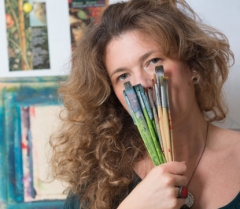 Sarolta Szulyovszky was born and grew up in Budapest (Hungary), she studied Applied Art, after which she moved to Italy. Since 2004 she start activity in the field of graphics and illustration working in a graphic design studio in Udine (Italy). Now she lives and works as a freelance illustrator and graphic designer in a little city in northern Italy: San Daniele del Friuli.
Sarolta Szulyovszky was born and grew up in Budapest (Hungary), she studied Applied Art, after which she moved to Italy. Since 2004 she start activity in the field of graphics and illustration working in a graphic design studio in Udine (Italy). Now she lives and works as a freelance illustrator and graphic designer in a little city in northern Italy: San Daniele del Friuli.
She works for children’ s books, magazines, cover books, Brochure Design and Packaging Design.
Sarolta works both traditionally in acrylics, pencil and digitally.
In 2012 her work has been selected for the ‘Annual Illustratori Italiani 2012′ (Society of Italian Illustrators) and for the 30th edition of the exhibition ‘Le immagini della fantasia’ (Sàrmede, Italy) – 60 illustrators from all over the world.
2011 – selected for the 23rd Biennial of Illustrations Bratislava.
In 2010 she won the 1st Prize (Category Children’s Book) at the ‘Marosvásárhely Book Fair Award (Romania).
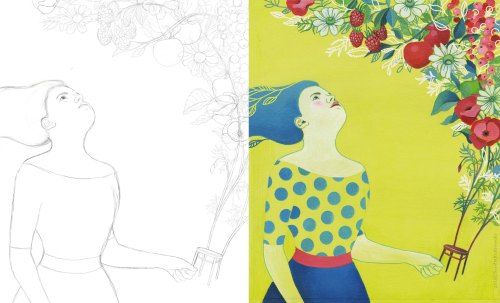
Draft drawn in Photoshop, and the final illustration for a magazine. The commission was to illustrate the month of July. (Image: Progress_1)
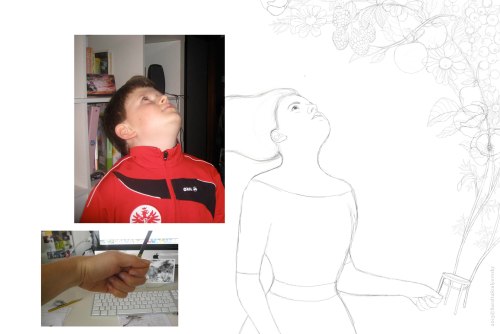
I needed a model to draw the woman so I photographed my son for the face and my hand for the hand!
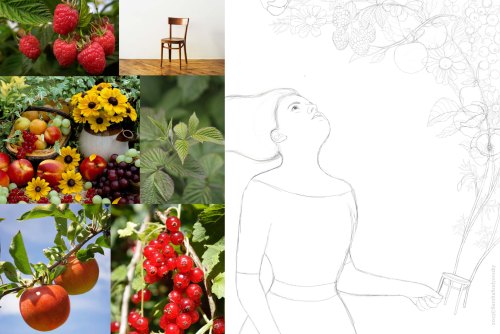
I found the fruit and vegetables on the internet.
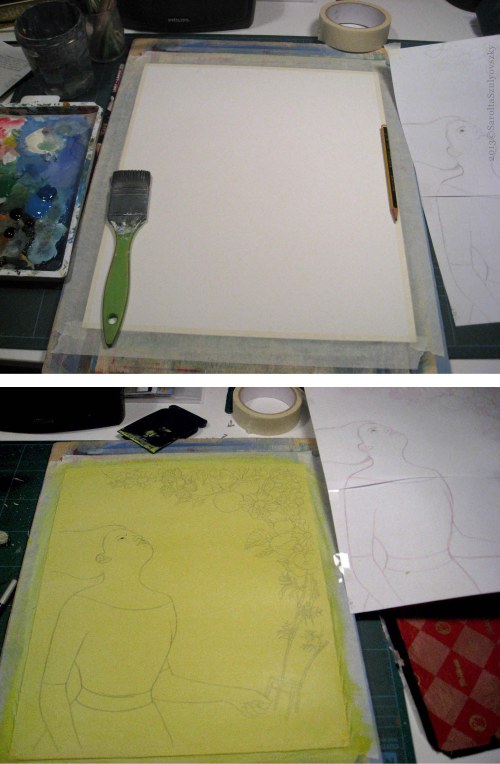
After sketching out the draft, I prepare an acrylic base for the background colour and, with carbon paper, I transfer the draft I have printed onto the base I have prepared. (Image: Progress_4)
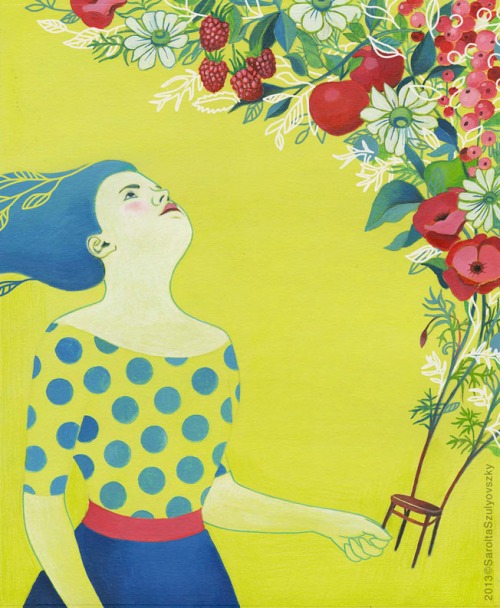
Here is the final illustration entirely painted with acrylics.
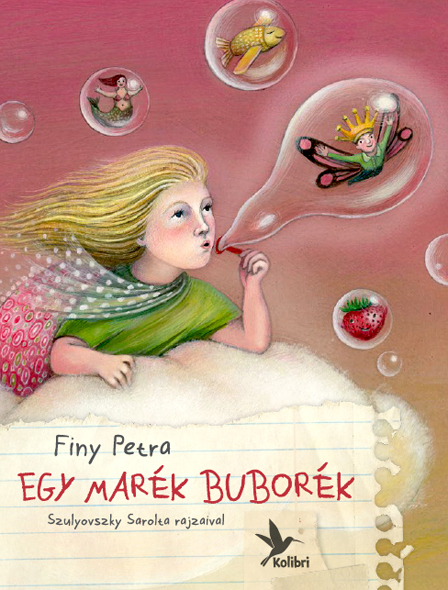
Book Covers
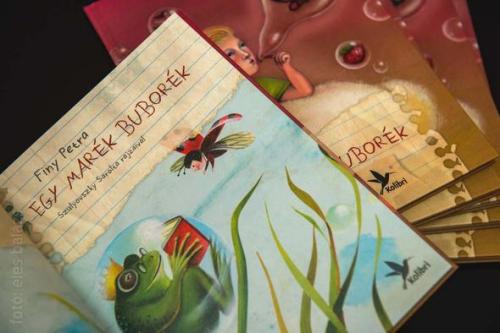

Book Covers
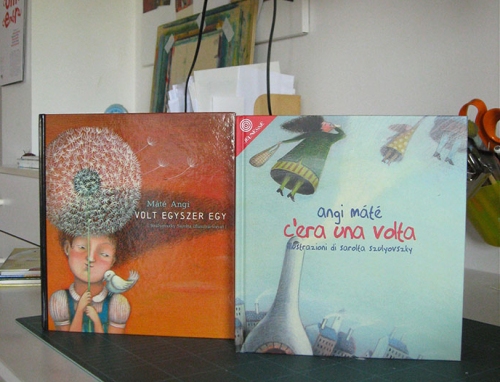
How long have you been illustrating?
I began to illustrate children’s books 11 years ago. My first publication (2003) was a drawing for an anthology of world fables published in Italy, but I have only thought of myself as an illustrator since I began to devote myself entirely to this work in 2009.
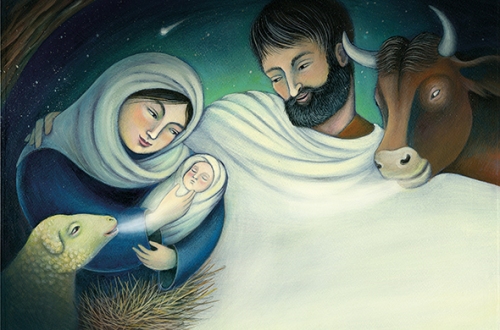
Did you go to college to study graphic design?
I began to study drawing at the age of 14, attending evening classes while I was studying at a science academy school in Budapest (Hungary). My dream was always to become a designer, so once I graduated from high school, I attended a textile design college and another college to study interior decoration, then went to the university “Nyugat-magyarországi Egyetem” on a Packaging Design course, but I never imagined that one day I would be illustrating books! I became involved in the world of children’s books illustration in Italy where I attended courses on advertising graphics and editorial illustration.
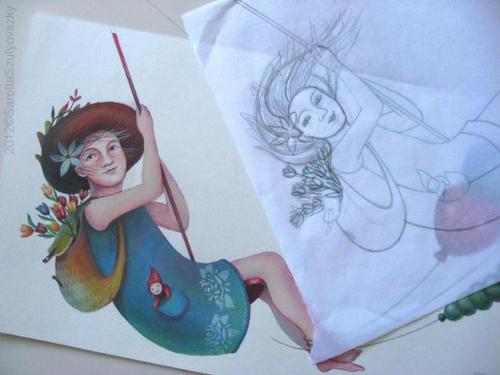
What were you favorite classes?
At university, I really liked design and drawing from life, especially portraits.
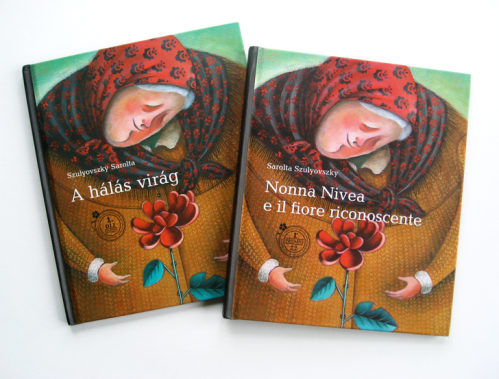
How did you decide to move from Hungary to Italy?
I moved to Italy not for work but for love. I met my husband in Budapest and, after we got married in 1997, I came with him to Italy.
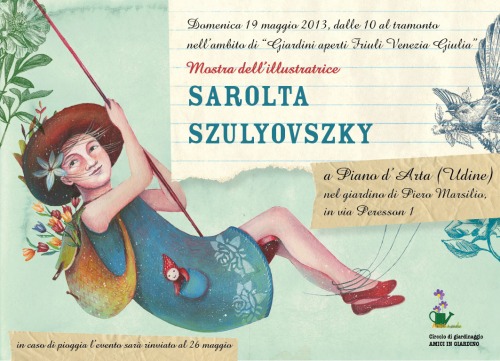
Do you feel the illustrating opportunities are better in Italy?
I don’t think Italy offers more opportunities for work in the field of illustration compared to Hungary or other European countries. Italy is currently undergoing a severe social, cultural and economic crisis and illustrators (and anyone who works in the cultural sphere in general) is often considered an amateur, and not a professional, and so they are paid little or nothing. However, I do think that Italy is an excellent place to study illustration: it is a country that boasts 50% of the world’s cultural and artistic heritage, a very stimulating environment for an artist, and there are excellent schools specializing in illustration.
It is very true that “no-one is a prophet in his own land” and so the first publications I had in Italy were due to the fact I was a foreigner: they were looking for foreign artists for multicultural editorial projects. After that, I was published in my home country and in other states.
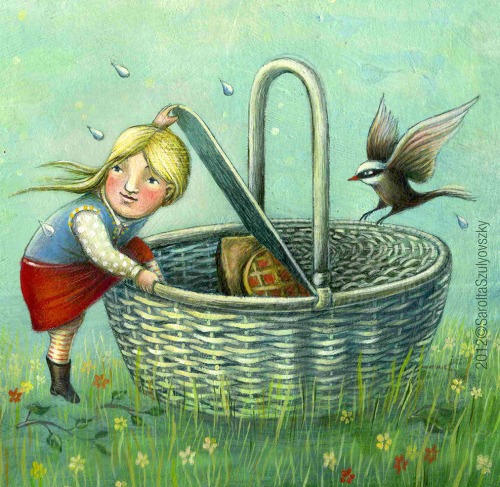
What was the first art related work that you were paid?
The first paid work was for the illustration of a children’s book translated into Italian from Hungarian, “Ha én felnőtt volnék” (If I were big) by Eva Janikovszky, published by L’Omino Rosso Editore, a small publisher in the region where I live. The book is a major classic in Hungary, a very entertaining story that I illustrated using digital techniques (Adobe Illustrator), which did not turn out to be my style.
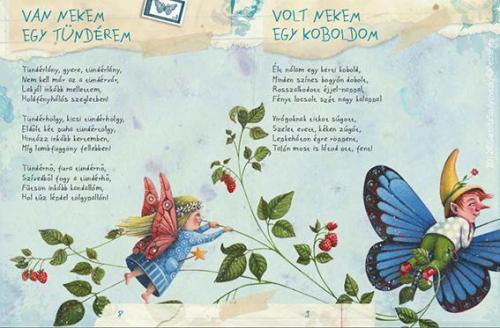
What do you think influenced you style?
I think my style has been influenced by many things: the popular Hungarian art passed on to me by my grandmother, who taught me embroidery, the late Renaissance painters in the Fine Arts Museum in Budapest, where I acted as tourist guide when I was a student and, of course, many contemporary illustrators that I discovered in books, exhibitions and on the web (Gianni De Conno, Gabriel Pacheco, Alice Wellinger, Pierre Mornet……. the list would be very long!).
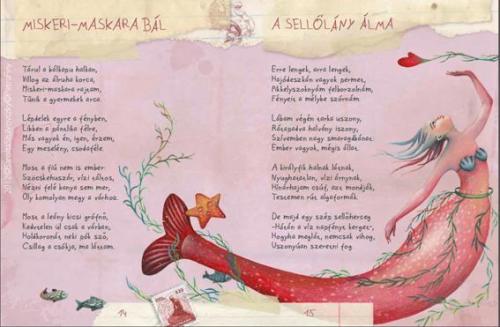
What type of work did you do right after you graduated?
After university, I gave birth to my two children and for 6 years I concentrated on being a mother….. although it was during that period that I discovered illustrated children’s books!
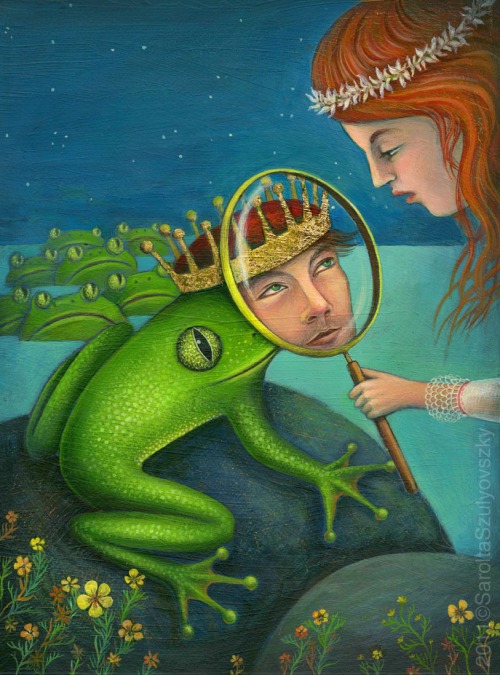
How did you connect with the Wilkinson Studios? When did you join them?
I came across Wilkinson Studios in 2011 thanks to an illustrator friend of mine who was already working for them. I sent them my portfolio and they immediately gave me a job. The client was very pleased with the illustration and so we continued to collaborate and they included me among the artists they represent. It was a great honour for me.
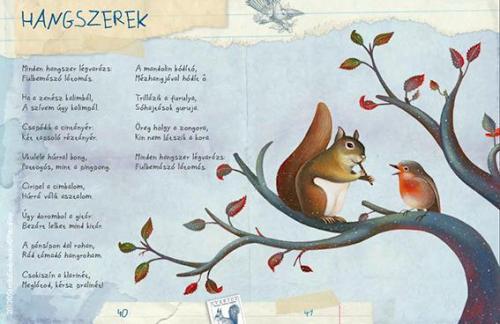
Do you do any exhibits to show off your work?
Yes, I am often invited to take part in joint exhibitions and I have had various personal exhibitions in Italy and abroad. In 2011 and 2013, my work was exhibited at the Biennale of Illustration of Bratislava, Slovakia and, 2007- 2012 every year at the “Le immagini della fantasia” of Sàrmede, the most important exhibition of children’s illustrations in Italy.
The last exhibition has just ended and it was “Il posto delle favole” (The place of fables), a joint exhibition by international artists in Rocca Sinibalda, a picturesque little town in central Italy. The next exhibition will be a personal exhibition of my work in Hungary in October 2014.
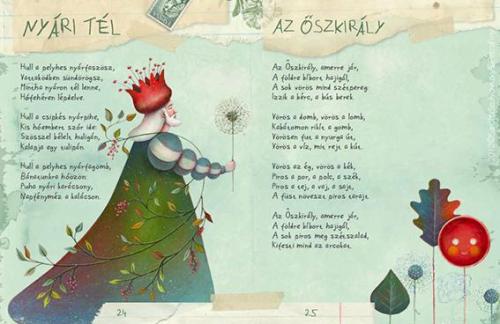
When and what was the first children’s book that you illustrated?
The first book that I illustrated was, luckily, the one I mentioned as my first paid work.
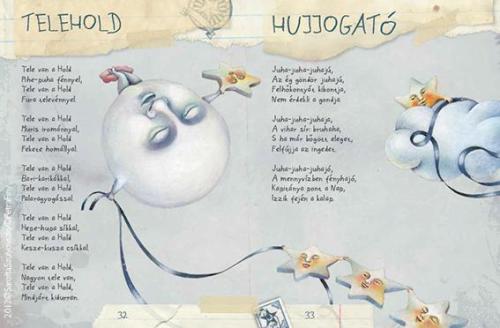
How did that contract come about?
The contact with the publisher came about through a friend we had in common, who was a book translator.
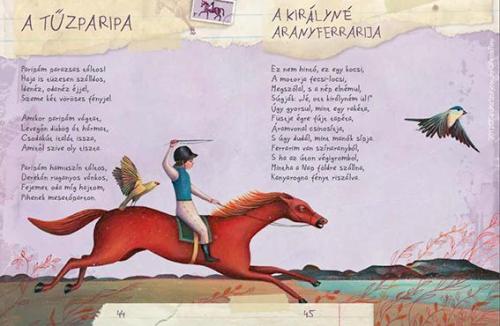
Do you consider that book to be your first big success?
My first book was an important experience for me, I learned a lot, but I don’t consider it a great success.
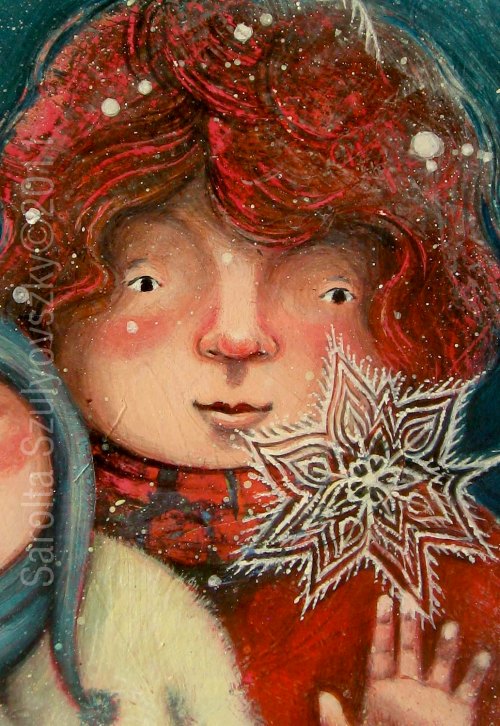
Have you published about children’s picture books for a US publisher?
So far, in the United States, they have published my illustrations in academic books and magazines, but I haven’t yet illustrated a whole book in the United States and I can’t wait to do so!
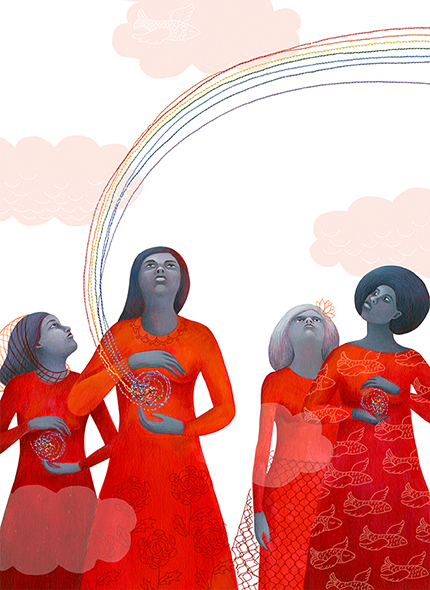
Have you tried to write and illustrate a children’s book, yet?
My first successful book was actually one that I wrote and illustrated: “A hálás virág “(The grateful flower) is an autobiographical book that deals with the subject of diversity and the Great Mystery of death, life and rebirth. The story came from an episode that actually happened in my grandparent’s garden in Budapest. In 2008, the album won first prize for the best unpublished illustrated album for children aged between 6 and 9 years at the 11th International Competition “Syria Poletti: On the wings of butterflies”. It was subsequently published in 3 languages: Italian, Hungarian and Polish.
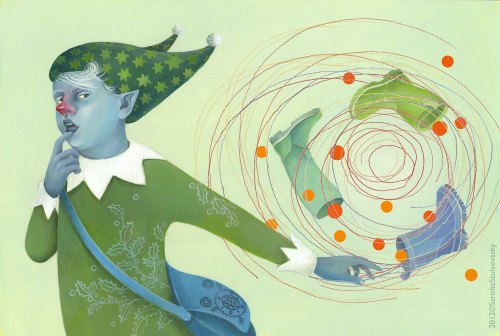
Does the area where you live have a large artist community?
I live in the countryside near a little town in northeast Italy that lies between the Alps and the Adriatic Sea, a land of excellent white wines and ham. There isn’t a large community of artists here, but you live and eat well!
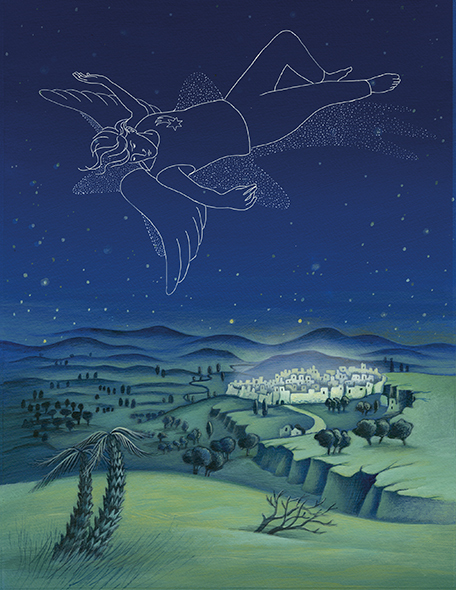
What type of illustration work do you do?
I work both on children’s books and books for adults, and on Packaging. I work both digitally and with traditional techniques. I like to adapt my style to the text and always try out new things so that I continue to grow and renew myself.

Have you won any awards for our art?
I have won various prizes but the most important was the one I received at the Frankfurt Book Fair in 2013: the cover I illustrated of “Folyékony tekintet” / Liquid gaze (published by Libri, Budapest) was selected from the 12 most beautiful covers at the Fair by the Wall Street Journal.
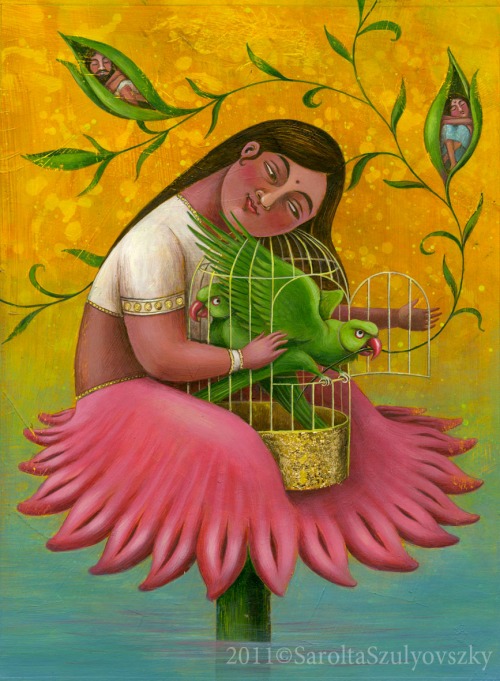
How many picture books have you illustrated?
So far, I have entirely illustrated 11 books, without counting the anthologies that include the drawings of several artists.
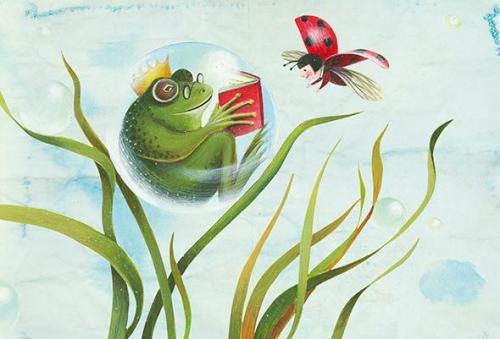
What do you consider your biggest success?
The greatest success has been the last book I illustrated, “Folyékony tekintet” (Liquid gaze), a collection of poetry for which I drew the digital illustrations using only the colours black and red.
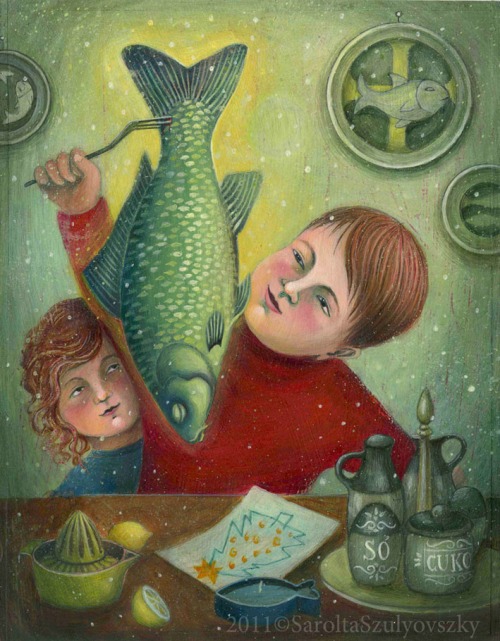
Do you feel living in Italy has broaden your career as an illustrator?
For an illustrator, I don’t think it matters much these days where you live, an internet presence is more important because that’s where work meetings take place. 23. Yes, I have worked for Italian and Hungarian magazines and in the United States, for the Christian Reformed Church of North America’s Dwell Dive Magazine. 24. I use acrylic colours and sometimes I add some details in Photoshop.
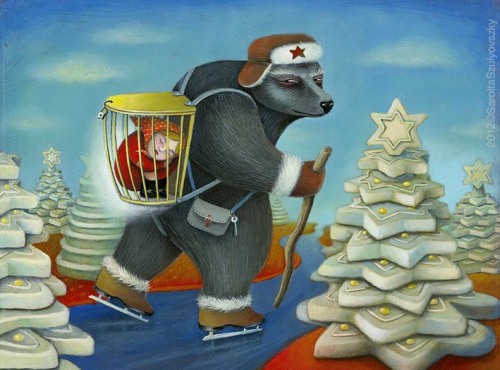

Have you done illustrations for any children’s magazines?
Yes, I have worked for Italian and Hungarian magazines and in the United States, for the Christian Reformed Church of North America’s Dwell Dive Magazine.
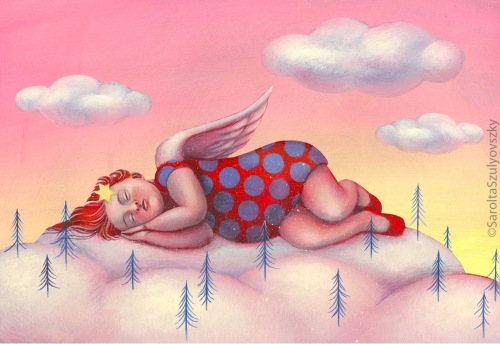
What materials do you use to paint your color illustrations?
I use acrylic colours and sometimes I add some details in Photoshop.
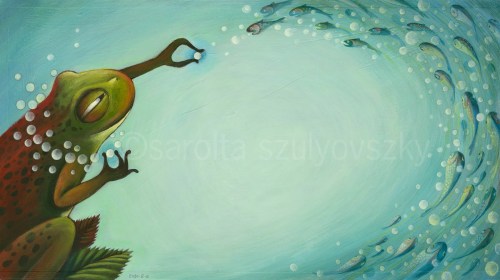
What type of things do you do to find illustration work?
To find illustration work, it is important to have a website or a blog, send your portfolio to the illustration agencies and publishers, and go to specialist fairs, like the Children’s Book Fair of Bologna.
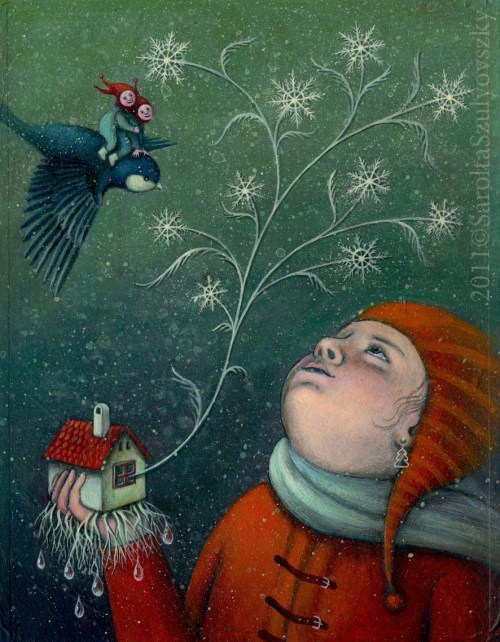
What is the one thing in your studio that you could not live without?
The thing I miss the most is the view from my window: the hill with the historic centre and the mountains. When I’m at home staring at a sheet of paper or a monitor all day, it is important sometimes to turn and look into the distance!
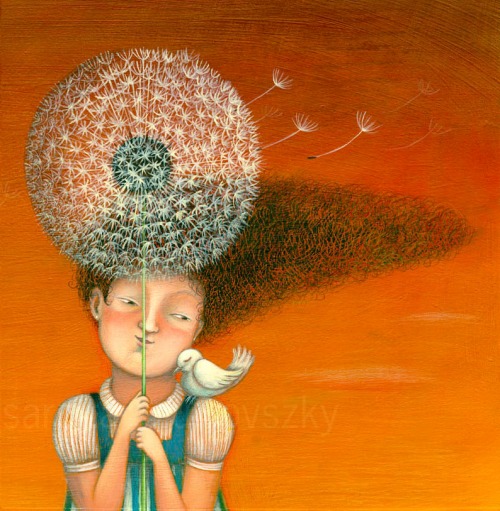
Do you try to spend a specific amount of time working on your craft?
It is very difficult to work set hours when you’re a freelance. I often work at night to meet deadlines…
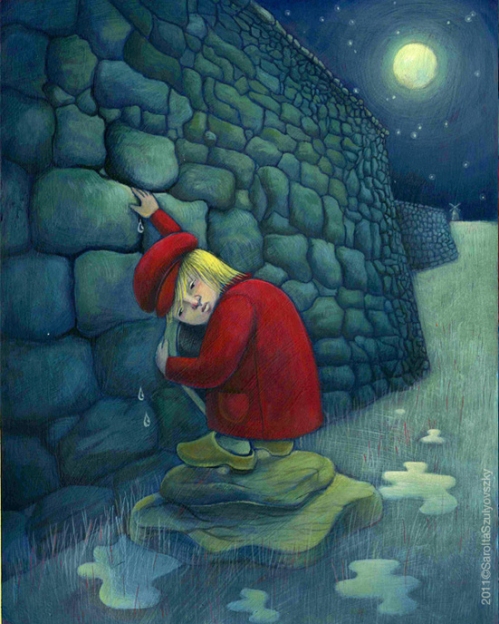
Do you take pictures or do any types of research before you start a project?
Research is the first phase of working on an illustrated project and that often takes whole days. I have a folder on my computer where I collect photos and texts that inspire me and that might be useful one day. If I don’t find the photos I need on the internet, people in certain poses, for example, then I’ll use relatives or myself, taking the photos I need.
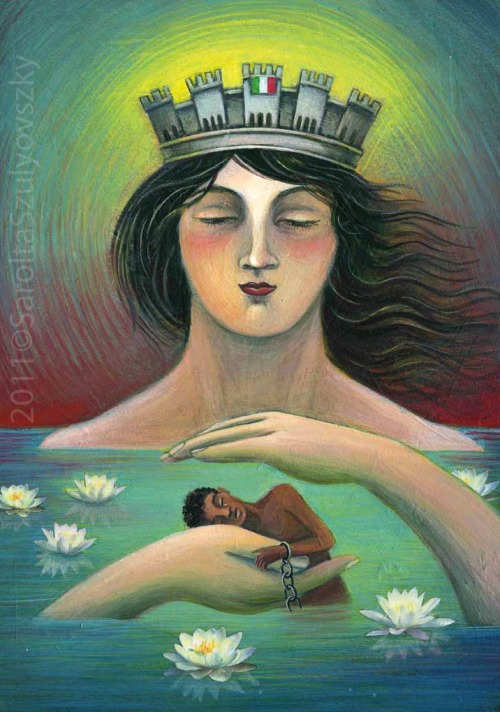
Do you think the Internet has opened doors for you?
Yes, I think the internet has opened many doors, but it has also increased the competition.
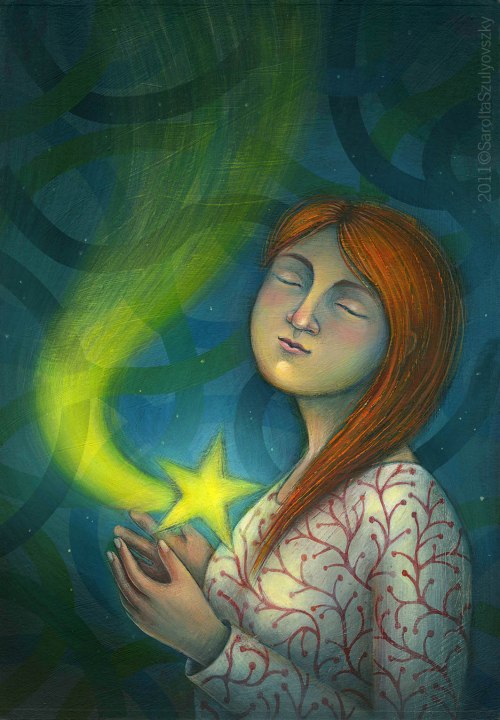
Do you use Photoshop or Corel Painter with your illustrations?
Yes, I use Photoshop and Adobe Illustrator.
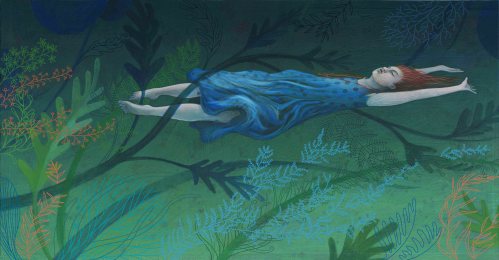
Do you own or have you used a Graphic Drawing Tablet in your illustrating?
Yes, I use a Graphic Drawing Tablet to sketch out drafts and add details to my illustrations.

Do you have any career dreams that you want to fulfill?
My dream is to illustrate the Bible, especially St Paul’s Hymn to Love.
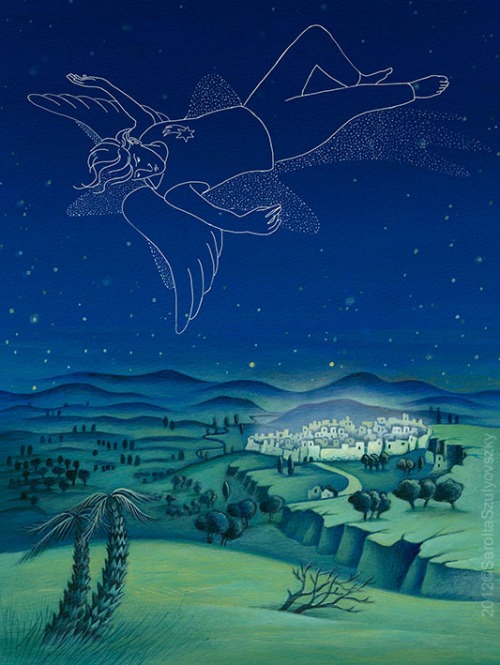
What are you working on now?
At the moment, I’m working on two books: an illustrated album: The Garden of Tears, written by the French author, Laurie Cohen, and a Hungarian novel by Zoltán Hajdú Farkas.

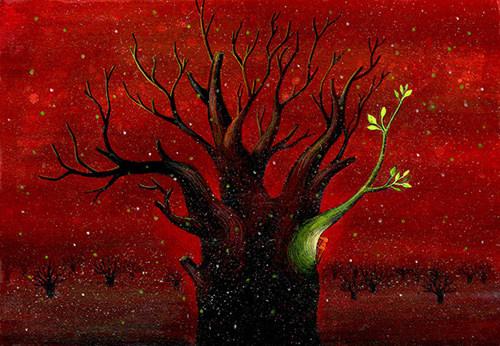
Any words of wisdom on how to become a successful writer or illustrator?
Above all, it is important to inquire within and understand ourselves. What would I really like to do? Devote time to personal works that haven’t been commissioned, be humble (we always need to learn), have a little entrepreneurial ability (we have to promote our work ourselves) and great steadfastness.
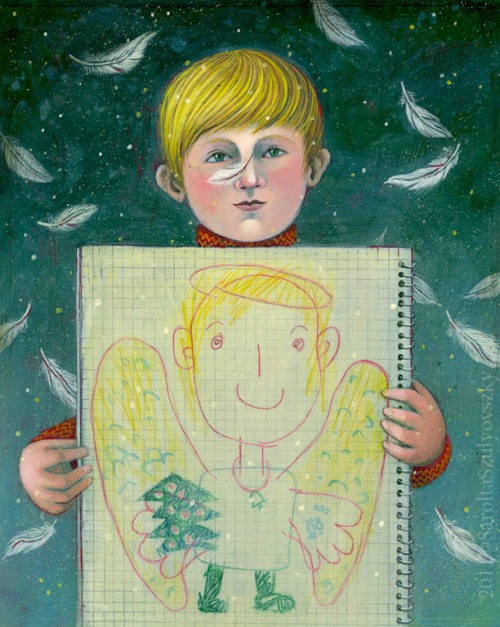
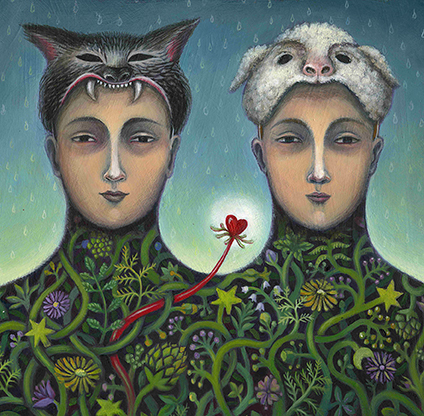
Thank you Sarolta for taking the time to share your process and journey with us. We look forward to hearing about all your future successes.
To see more of Sarolta’s illustrations visit her at:
Website: http://www.saroltaszulyovszky.com/
Blog: http://saroltaszulyovszky.blogspot.it/
Please take a minute to leave a comment for Sarolta, I know she would love to heard from you and I always appreciate it. Thanks!
Talk tomorrow,
Kathy
Filed under:
authors and illustrators,
demystify,
illustrating,
Illustrator's Saturday,
inspiration,
Interview,
picture books,
Publishing Industry Tagged:
1st Prize (Category Children's Book) at the 'Marosvásárhely Book Fair Award,
30th edition of the exhibition 'Le immagini della fantasia',
Applied Art in Budapest,
Sarolta Szulyovszky 


By: Kathy Temean,
on 9/17/2014
Blog:
Writing and Illustrating
(
Login to Add to MyJacketFlap)
JacketFlap tags:
Tips,
list,
reference,
picture books,
Advice,
authors and illustrators,
Dilys Evans,
How to,
Guide to Evaluate a Picture Book,
How to Spot a Great Picture Book,
Add a tag
 Dilys Evans has been providing advice to young artists since 1978, when she founded Dilys Evans Fine Illustration.
Dilys Evans has been providing advice to young artists since 1978, when she founded Dilys Evans Fine Illustration.
Below is a summary of that advice—10 characteristics that she believes all outstanding picture books have in common.
Use it as a guide as you evaluate the picture books in your collection.
1. In the Beginning Was the Word
The pictures must be truly inspired by the story.
2. Preparation Is Paramount
The artist knows his or her characters, subject, and the setting inside and out.
3. A Great Cover Is a Great Start
If the cover art is compelling, it will make the viewer pick up the book and turn the pages.
4. The Artist Sets the Scene before the Story Begins
The inside flap offers a great opportunity to set the stage for the story or introduce a character.
5. The Endpapers Involve the Reader
Endpapers are another opportunity to add to the story or overall design of the book.
6. The Medium Is the Message
The perfect choice of medium to illustrate the text should convey every mood and nuance.
7. Every Picture Tells the Story
Every image is central to the story and moves it forward to the next page.
8. The Book Is a Form of Dramatic Art
Every scene must be carefully chosen to dully illustrate the drama and excitement of the story as it unfolds.
9. Art and Type Should Be a Perfect Marriage
The typeface should seem to be almost an extension of the art itself.
10. White Space Rules!
White space is a compositional element and not just a background to present the art.
Printed by the School Library Journal, September 2005
Talk tomorrow,
Kathy
Filed under:
Advice,
authors and illustrators,
How to,
list,
picture books,
reference,
Tips Tagged:
Dilys Evans,
Guide to Evaluate a Picture Book,
How to Spot a Great Picture Book 


By: Kathy Temean,
on 9/15/2014
Blog:
Writing and Illustrating
(
Login to Add to MyJacketFlap)
JacketFlap tags:
How to,
Rebecca Petruck,
online writing class,
Kami Kinard,
Agent Rachel Orr,
Crafting the Kidlit Novel ,
writing,
Middle Grade Novels,
authors and illustrators,
Add a tag
Crafting the Kidlit Novel - Four Week Online Class
starts October 6, 2014
 One Bite at a Time: How Writing a Novel is Like Eating a T-Rex and Other Things That Bite Back
One Bite at a Time: How Writing a Novel is Like Eating a T-Rex and Other Things That Bite Back
With Children’s Authors
Kami Kinard and Rebecca Petruck
The idea of writing an entire novel can be intimidating, but it doesn’t have to be when you learn how to move in stages. Children’s authors Kami Kinard and Rebecca Petruck break down the elements of solid novel writing, beginning with the hook and on through pitch, character development, plot structure, and practical tools for writing through to the end. Though the focus will be on middle grade and young adult writing, the tools are useful for anyone who wants to complete a publishable work.
 NaNoWriMos! This class will organize your approach so you launch into November with a plan that will result in a novel-like construction and not simply 50,000 words.
NaNoWriMos! This class will organize your approach so you launch into November with a plan that will result in a novel-like construction and not simply 50,000 words.
Bonus Critique: Register before September 20, 2014 and receive a free five-page critique and 20-minute Skype session with Kami Kinard, redeemable within six months of the course’s completion.
In addition, you will be entered to receive a free written critique of the first chapter of your novel (up to 5 pages) from Agent Rachael Orr of Prospect Agency.
You have the option of registering for the four-week class for $250 or the class PLUS a 25 page critique with a 60 minute telephone or Skype conversation for $350.
Click this link to register and read more: http://www.kidlitwritingschool.com/crafting-the-kidlit-novel.html
Talk tomorrow,
Kathy
Filed under:
authors and illustrators,
How to,
Middle Grade Novels,
writing Tagged:
Agent Rachel Orr,
Crafting the Kidlit Novel ,
Kami Kinard,
online writing class,
Rebecca Petruck 


By: Kathy Temean,
on 9/14/2014
Blog:
Writing and Illustrating
(
Login to Add to MyJacketFlap)
JacketFlap tags:
ethnic and/or cultural background,
On-The Verge Emerging Voices AWARD,
Two Awards,
Contest,
awards,
SCBWI,
Competition,
authors and illustrators,
Publishing Industry,
opportunity,
Places to sumit,
Add a tag

The SCBWI established the On-The-Verge Emerging Voices Award in 2012 with funding from Martin and Sue Schmitt of the 455 Foundation. The grant was created to foster the emergence of diverse voices in children’s books.
Deadline:
Applications accepted between September 15th and November 15th, 2014
Award:
Two writers or writer/illustrators will each receive:
- An all-expense paid trip to the SCBWI Summer Conference in Los Angeles August 1-4, 2015 (transportation and hotel)
- Tuition to the SCBWI Summer Conference
- A manuscript consultation at the Summer Conference with an industry professional
- An additional meeting with an industry professional
- Tuition to the Summer Conference Writers or Illustrators Intensive
- A press release
Eligibility:
Any writer or writer/illustrator from an ethnic and/or cultural background that is traditionally under-represented in children’s literature in America. (American Indian, Asian, Black or African American, Hispanic, Pacific Islander)
The manuscript must be an original work written in English for young readers and may not be under contract. The applicant must be over 18, be unpublished, and should not yet have representation.
Guidelines:
All applications will be accepted via email only between September 15th and November 15th at [email protected] and must include the following:
In the body of the e-mail:
1. An autobiographical statement and career summary in less than 250 words.
2. Why your work will bring forward an underrepresented voice in less than 250 words.
3. A synopsis of your manuscript in less than 250 words.
Attached to the e-mail:
4. A PDF of your entire manuscript. If the manuscript is not complete, it is not eligible.
The winners will be announced December 19, 2014 and the award presented at the 2015 SCBWI Summer Conference in Los Angeles, August 1-4.
When your work is published the author/illustrator should include in the acknowledgement “This book was made possible in part by a grant from SCBWI”
VIEW PAST WINNERS
Questions? [email protected]
Good Luck! Remember you can not win if you don’t submit.
Talk tomorrow,
Kathy
Filed under:
authors and illustrators,
awards,
Competition,
Contest,
opportunity,
Places to sumit,
Publishing Industry Tagged:
ethnic and/or cultural background,
On-The Verge Emerging Voices AWARD,
SCBWI,
Two Awards 


By: Kathy Temean,
on 9/12/2014
Blog:
Writing and Illustrating
(
Login to Add to MyJacketFlap)
JacketFlap tags:
Interview,
picture books,
inspiration,
Graphic Design,
illustrating,
authors and illustrators,
Illustrator's Saturday,
Golden Domes And Silver Lanterns,
Alzahra University in Tehran,
Mehrdokht Amini,
Add a tag
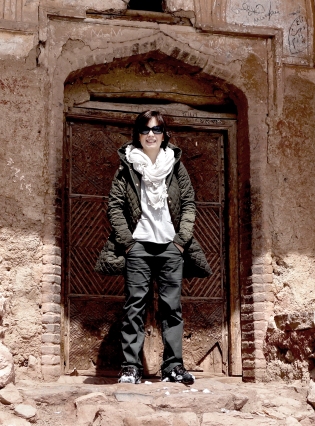 Mehrdokht Amini has worked on many books for children. One of her latest picture book “Golden Domes And Silver Lanterns” in collaboration with” Hena Khan” has been highly praised and has been selected in the 2013 ALSC notable children’s booklist, which is a list of best of best in children’s book.
Mehrdokht Amini has worked on many books for children. One of her latest picture book “Golden Domes And Silver Lanterns” in collaboration with” Hena Khan” has been highly praised and has been selected in the 2013 ALSC notable children’s booklist, which is a list of best of best in children’s book.
She lives in Surrey, England.
Below are her clients:
The British Museum Press,
Chronicle books
Random House
Stentor Publication
Harcourt Publishing
Overbrook Entertainment
Houghton Mifflin Harcourt
Here is Mehrdokht explaining her process:
This is the step-by-step process of one of the illustrations of the book that I have written myself. At the moment I am working on some samples of this book to take to the publishers. The book is called “The day I met Poppito.”
In this image, the main character of the book has come down for breakfast and sees that his parents are very annoyed by this news that a family of hippos have moved in next door to them. The mother is particularly not happy with the situation.
I start the project by first sketching the overall composition that I have in mind and a bit of character designing.
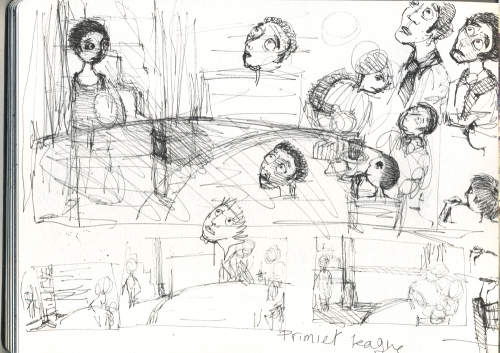
Gradually I delve into more details of the image .The character facial expressions are especially very important to convey the massage of the picture.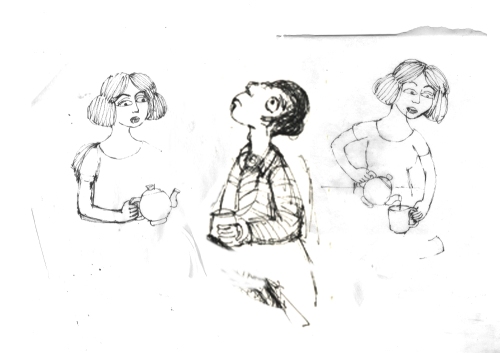
I scan all the sketches and save the files in tiff format to make sure all the details are kept as accurately as possible for next stages. Then I start to take photos for my image based on the composition. I might not use all the photos I take but at this stage I try to gather whatever material I think might come in handy in later stages of the work.

I might need the texture of a plastered wall.

Or details of a room because it is an indoor image.
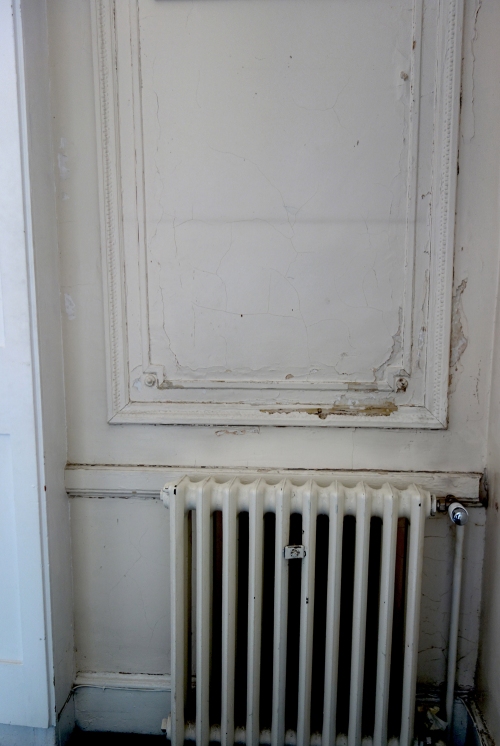
After the sketches are finished and I am done with taking photos. I start working on the background of the image.
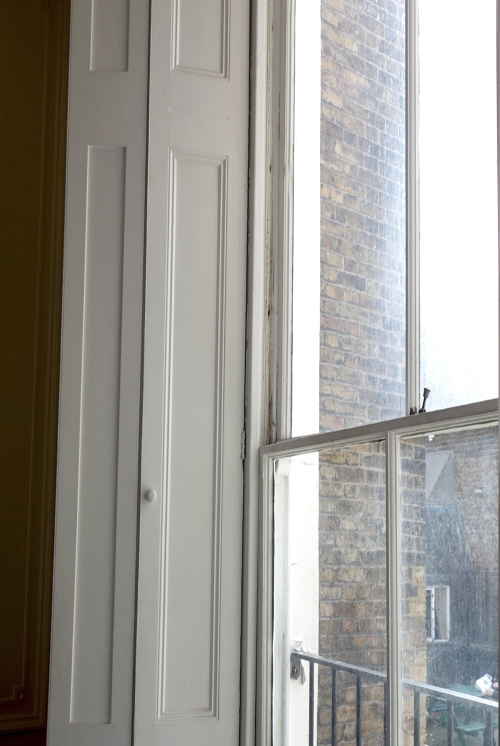
I brush the surface of a watercolor paper with GOLDEN Molding Pastes a few times on intervals to get the desired texture and then I color the surface with Acrylics in layers. I put one layer of color, wait for it to get dry then repaint it again with another color. That’s because sometimes I scratch the surface to get to the layers underneath and have a more interesting surface.
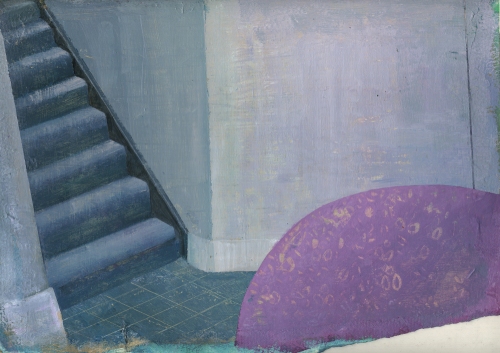
I take then everything to Photoshop. Here the floor needs to be change so I make another surface for it.
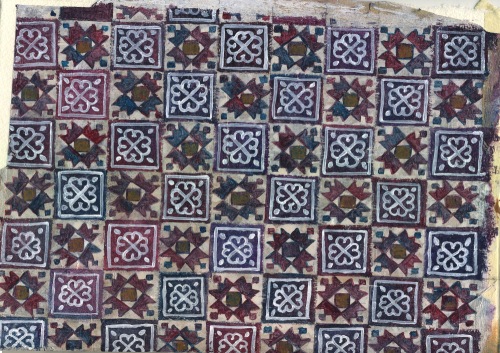
I then fit it into its place in Photoshop in a separate layer. In the “Hue/Saturation” I bring down the saturation of the floor layer to zero and finally put it in the “soft light” mode so the layer beneath could be seen through.
There I arrange the sketches on the background in a different layer and change their mode on “intensity” to be able see through them. Then I start painting on them with the brush tool.

Using my photos I work a bit more on the texture of the wall and the staircase.
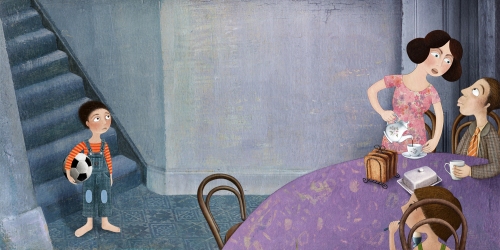
I feet the table perspective doesn’t really work this way so I change it too.
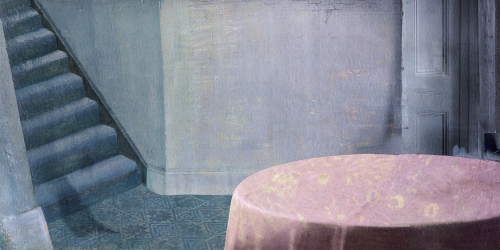
Eventually this is how the picture looks like when finished.

Finished image
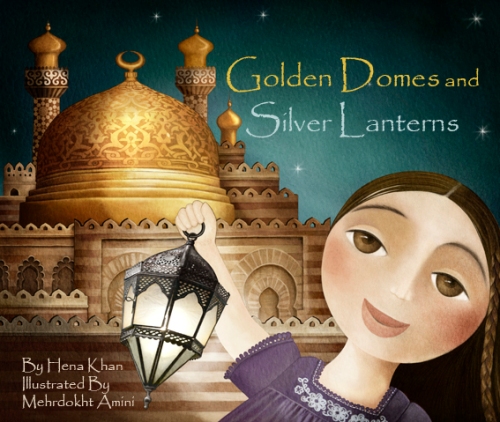
Book Covers
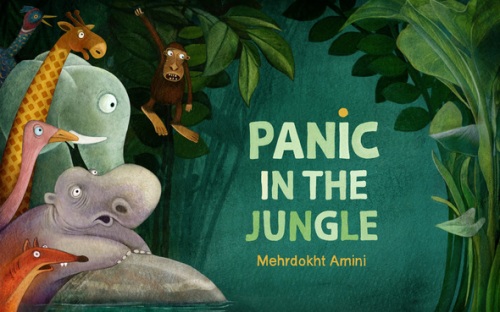
Book covers

How long have you been illustrating?
I went to Secondary School of Creative Arts in Iran and I remember once a teacher asked us to choose a story and make illustrations based on that. I chose “The Red Shoes” by Hans Christian Anderson and it was the first time I tried to illustrate a book. I enjoyed the process so much that I decided then that I wanted to continue my career in that direction. What I enjoyed most and continue to take pleasure in was that for a short time it gives me the opportunity to live in an imaginary world and create my own characters and scenes and share them with others.
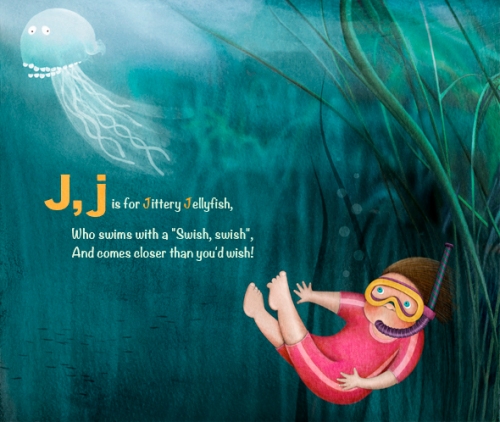
I see you attended Alzahra University in Tehran. How did you decide to study Graphic Design there?
After getting my Secondary school certificate in Art it was a natural thing for me to continue my higher education in the creative field. As there was no BA course available in illustration I decided to study in Graphic design. At the time it wasn’t a very well known subject to study in Iran and studying art was considered by many parents as something for the students who couldn’t do very well in scientific subjects. So I guess it was a brave act for my parents to go along with my desire to become an artist.
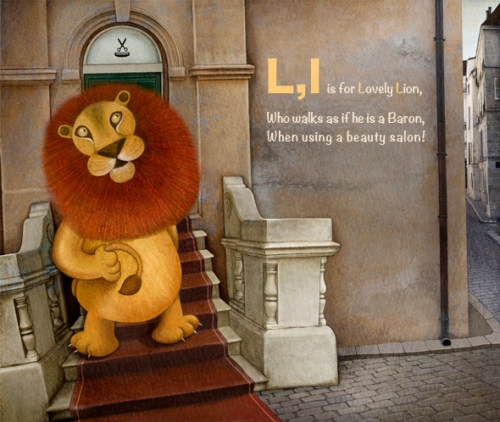
What were you favorite classes?
I enjoyed life-drawing classes partly because we used to laugh a lot during that course. The thing is, in Iran a lot of restrictions are imposed on art students. As ridiculous as it might sound, in life drawing classes no nudity was allowed. So we had to sketch the models all dressed up. We had to guess what was under the folds of clothes and so occasionally our sketches looked ridiculous. I also enjoyed photography courses. It was the pre -digital era and we had to develop and print our photos in the dark room. I loved the dark room anticipation of seeing the result of the work appearing gradually on the paper and the various techniques we could do with the developing materials on the photo papers.
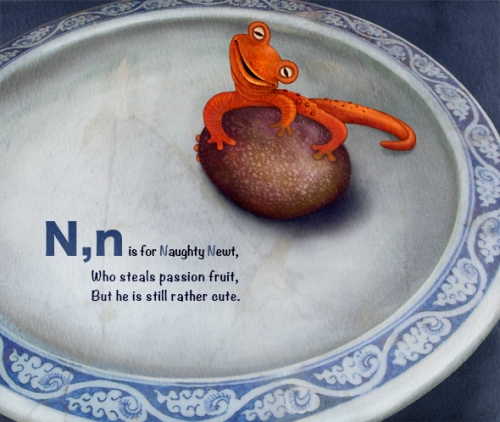
Now that you live in the UK, do you think the Universities are different than the ones in Tehran?
They are totally different. Here the art students have the freedom of expressing their feeling with no boundaries whatsoever. It is an essential ingredient for an artist which some might take it for granted. Over there, there are many taboos and lines that could not be crossed.
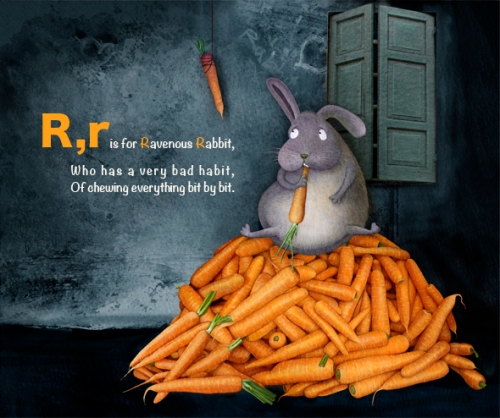
Did you immediately decide you wanted to get your MA in Art Research or did you get a job right out of college?
I was still in college when I got my first commission to illustrate a book. It took me some years to go back to university to get my MA and the reason I chose Art research was because I felt a lack of enough theoretical knowledge in myself.
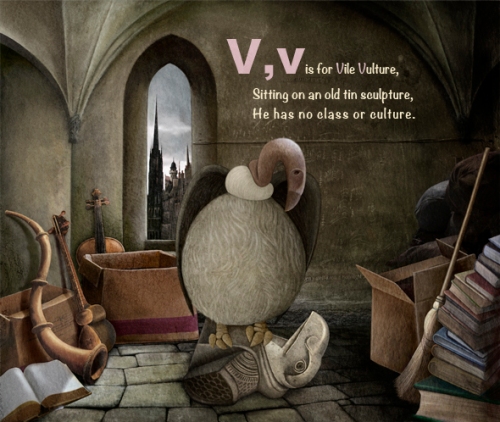
What types of things do you study when you go for a degree in Art Research?
I am not sure weather such a course is available here in MA degree or not. But over there it ranges from history and philosophy of art to critical thinking in art.
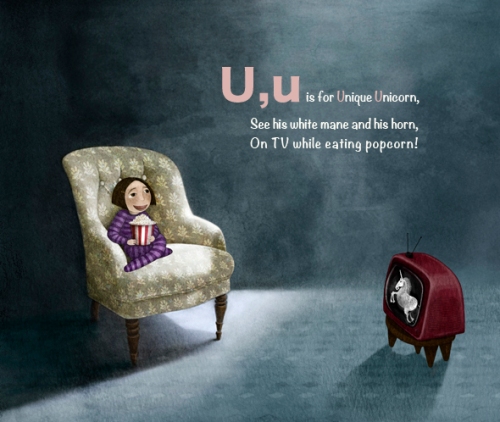
What was your most interest class while going for your MA?
For me it was a course during which we did lots of discussions on contemporary theories of art. We worked mostly on “A reader’s guide to contemporary literary theory” by Raman Seldon and Peter Widdowson. There I learned for the first time about the developments of modern art theories; A fascinating subject that change my point of view not only on art but also on life itself.

Did the School help you get work?
No, Unfortunately in Iran schools don’t feel any obligation to find work for the students.
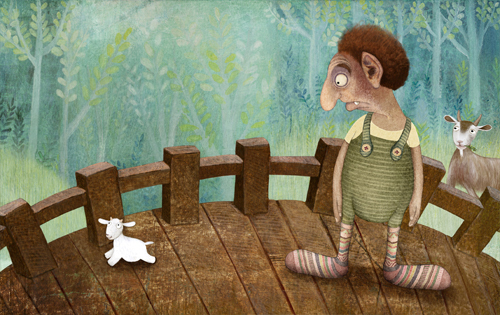
Do you feel the classes you took in college have influenced you style?
No, I don’t think so. They help me a lot in term of having a better critical mind as an artist and choosing my path. But thankfully the professors didn’t try to influence our style. I think it is a catastrophe when the art teachers try to impose their ideas on students. They should probably just show the ways and let them decide.
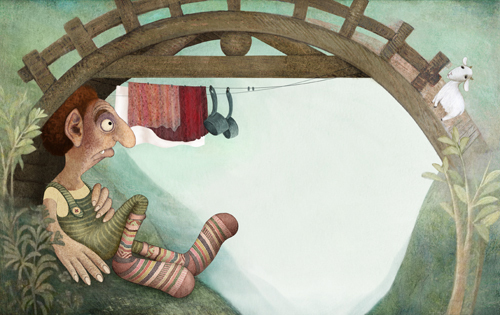
What type of work did you do right after you graduated?
Apart from illustrating books I did occasional designing jobs here and there but I have always been freelance.
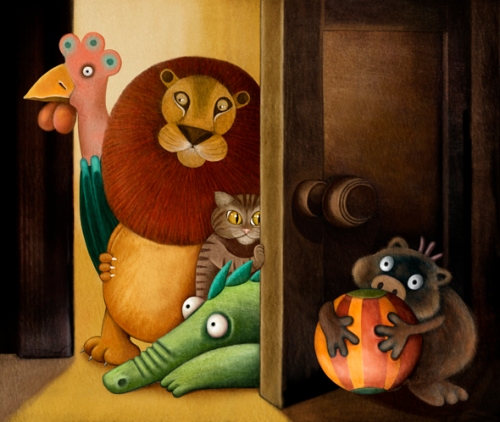
What was the first art related work that you were paid?
The book that I did for “Khane Adabiat” publication during my BA was my first paid job.
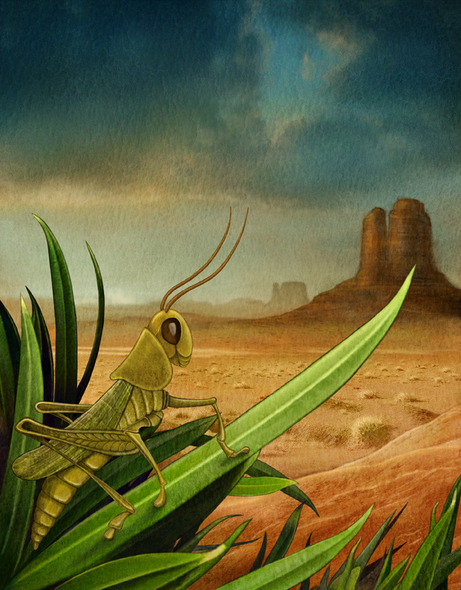
Do you have an agent or artist rep.? If so, who are you with? When did you join them and how did the two of you connect? If not, would you like to find representation?
Yes, I decided to find an agent for myself last year because I am not that good at representing myself.
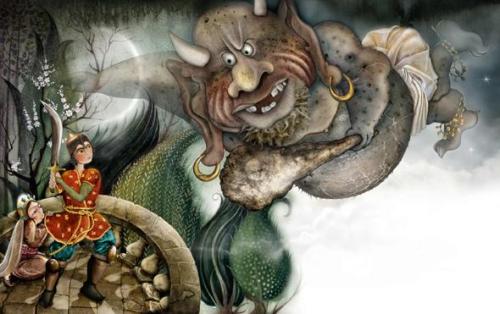
At the moment I am working with “The Illustrators Agency“(www.theillustratorsagency.com) based in Australia. So far we have been connected only through emails. They have managed to find me two book commissions so far from “Cengage Learning” which is a global educational publisher and I am very happy to be able to work with them.
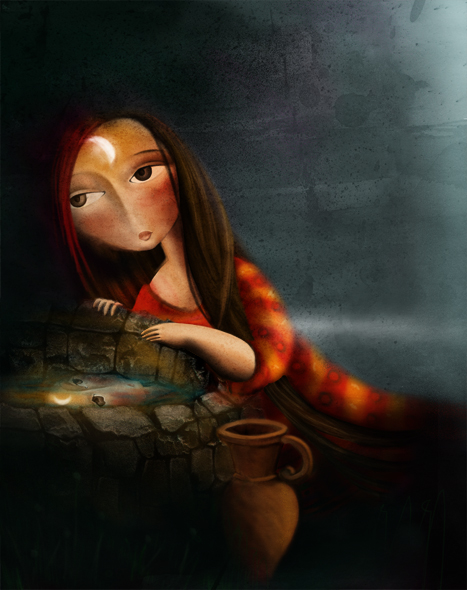
When and what was the first children’s book that you illustrated?
There is a very famous Iranian poet called “Ahmad Shamlou” who sadly passed away a few years ago. He has a few long poems, which in form are quite rhythmic and seem to be written for children but their contents occasionally have some political connotations.
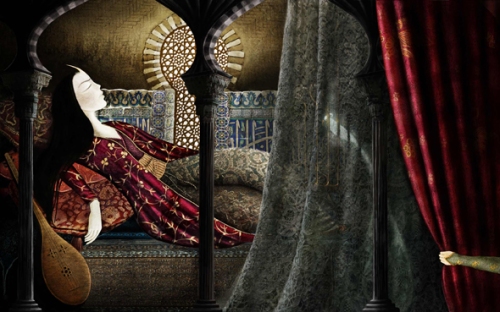
One day when I was still studying for my BA I decided to work on one of these poems and as it was not very long for a whole book, I came up with this idea to illustrate it in a new format. Something like a big three folded brochure. It worked and subsequently I worked on other poems of the same writer and some other famous contemporary poets in the same format.

How did that contract come about?
I didn’t have any particular publishing house in mind at that time. The only thing I knew was that most of the publishing houses were clustered around a few avenues around Tehran University. So when I finished the draft of the work, I took in my portfolio case and started searching around in that area for a children’s book publisher. By chance I came to Khane Adabiat and the editor of the time liked the idea very much. Every thing started from there.
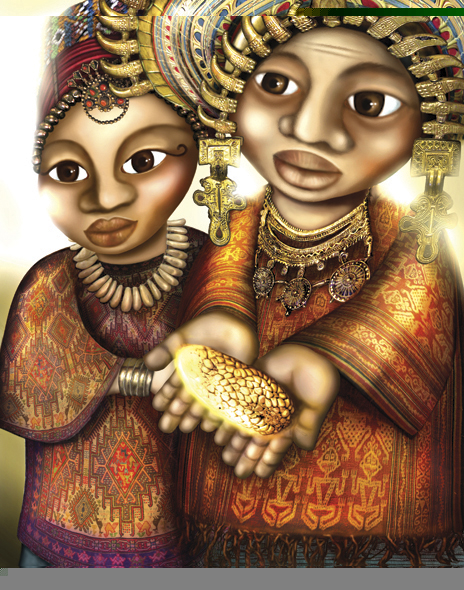
Do you consider that book to be your first big success?
I do. It was vey successful and after more than fifteen years copies of it is still selling in Iran. But it is greatly due to the fact that the poet is very famous in Iran and these series of his work were only published in collections and not individually -illustrated format. The new format of the book also made it stand out in the shelves of the bookshops. But if I could illustrate them again I would totally change the illustrations!
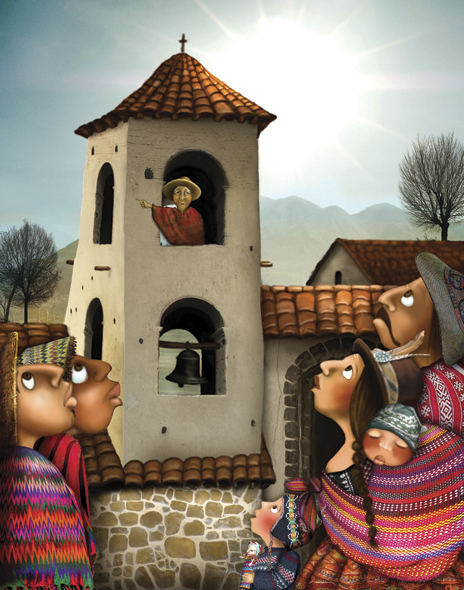
It looks like you did a large amount of books with Khane Adabiat Publications. Are they the big publishing house in Tehran?
At that time they weren’t huge but after some years they made a good name for themselves in children’s publishing industry in Iran.

Have you tried to write and illustrate a children’s book, yet?
This is my ultimate goal to be able to illustrate my own stories.
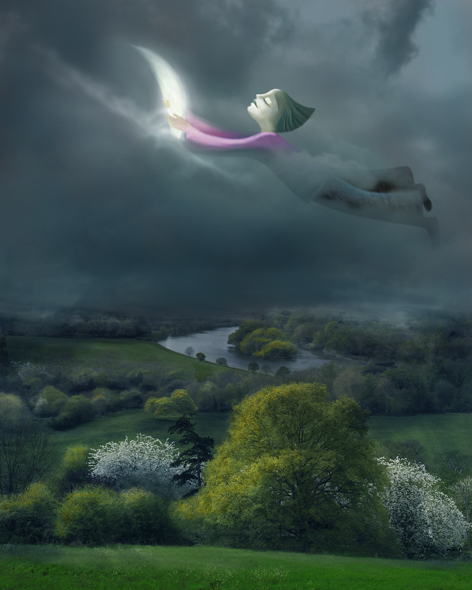
What made you move to the UK?
I guess it was destiny that brought me here!
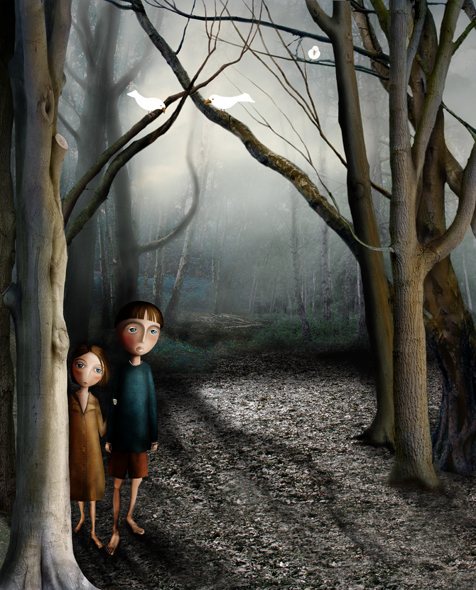
After ten years of publishing with Khane Adabiat Publications, you get to do a picture book with a publisher in Poland and Harcourt in the US. How did those two books contract come about?
I came to live in UK ten years ago and at first I didn’t know how to continue my career here as an freelance illustrator so I decided to learn Photoshop and Corel draw and try to find a job as a Graphic designer. It took me 6 months to learn these two software and during the process of learning them I discover how powerful they could be as a tool for making illustrations. Eventually I did a few digital pieces and decided to have a website to showcase them. These were the ones, which gained me these two commissions.
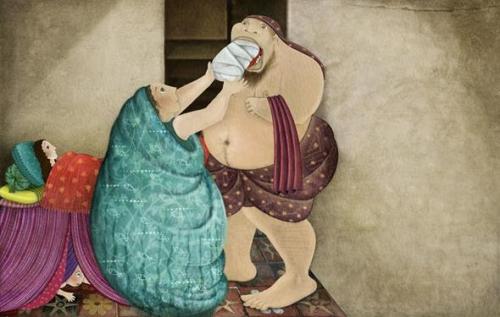
What was it like to illustrate a picture book for the British Museum in the UK? Did they have an editor or art director?
It was a great honor for me to work with the British museum. Apparently Helen East, the author of the book “How the Olympic came to be”, had spotted my website and recommended me as the illustrator for her upcoming book with The British museum. We had a few meetings with the editor of the time and discussed the sketches together. It was a really enjoying experience.

How did that come about?
It was a year before the London Olympics and the book was the story of Olympics through Greeks myths and legends. I was supposed to get inspiration from the objects of British museum related to the story for my pictures. It was really fun because it gave me the opportunity to study the classical period of Greek art and learn more about Greek mythology. I particularly fell in love with their ancient potteries and all the delicate silhouettes painted on them, each telling different stories about Greek heroes and villains.
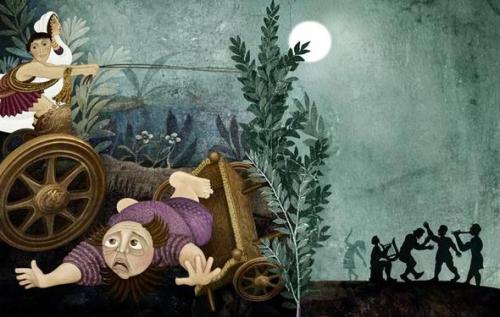
How did you hook up with Chronicle Books to illustrate GOLDEN DOMES AND SILVER LANTERNS?
They had found me through childrensillustrators.com and contacted me to see whether I was interested to work on the “Golden domes and silver lanterns”.

How did you connect with them?
Our contact was only through emails, which at the beginning created a bit of problem. We didn’t have the chance to discuss the pictures face to face and as a result my first round of sketches was almost completely rejected. I had imagined the settings to be depicted in an ancient time, whereas the editors and writer had a clear objective to have the story portrayed in a contemporary atmosphere.
I had to redo the sketches but I think eventually we were all happy with the final result.
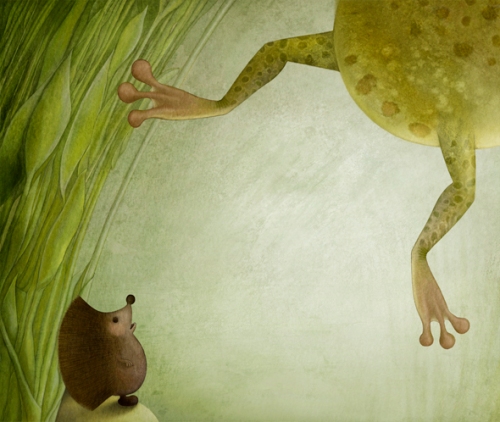
Do you feel living in the UK has broaden your career as an illustrator?
Living here has lifted many obstacles in my career. I have more access to different sources of inspiration and could keep myself up to date. In Iran many Internet sites are blocked and young artist have limited way of displaying their work or connecting with the rest of the world.

What illustrating contract do feel really pushed you down the road to a successful career?
It is not one contract that helped me in my career but the whole portfolio of my work. Each piece has it’s own importance and has pushed me a bit forward. I am not completely satisfied with my early pieces and wish I had a chance redo them again but each had its own importance in my career.
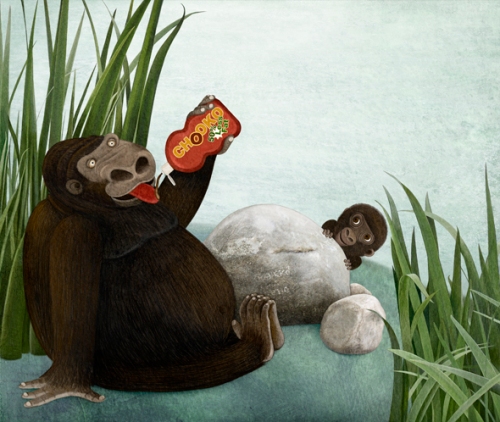
Have you done illustrations for any children’s magazines?
When I was still in the university one of the teachers who was running a magazine for children asked me to do some illustrations for her but after that I didn’t have the chance to work for a children’s magazine any more.
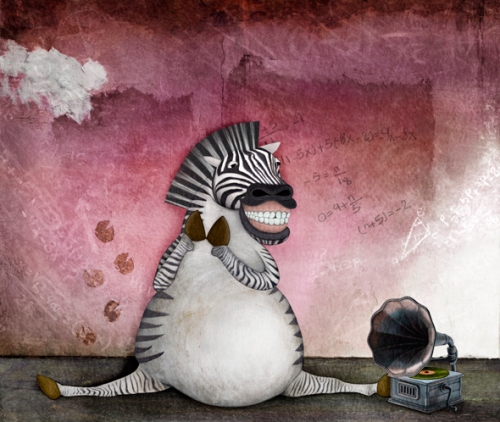
What materials do you use to paint your color illustrations?
I usually make a background with the help of GOLDEN Molding Pastes and acrylics or whatever medium I think is appropriate. Sometimes I paint straight on this background or use other surfaces for different part of the illustration, then I scan all the materials and take everything to Photoshop and continue to work on the image from there.
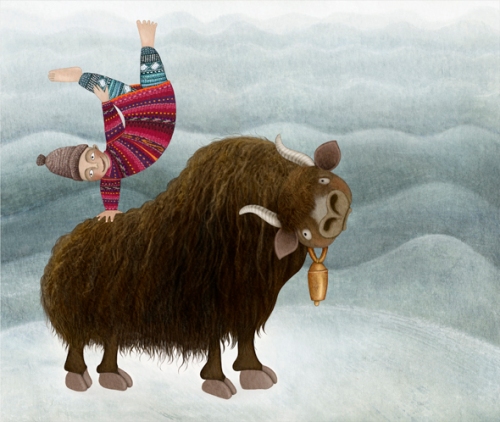
What types of things do you do to find illustration work?
For some years now I have been subscribed to childrensillustrators.com and had some commissions coming from that site. Occasionally I send samples of my works to the publishers who accept unsolicited materials. Social medias is a powerful tool for getting noticed too but it is very time consuming and needs lots of dedication. Right now I am hoping that my agent will find me work so I could have more time for the creative side of work.
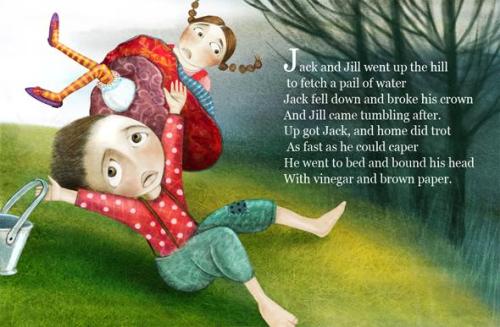
What is the one thing in your studio that you could not live without?
It is my digital pen.

Do you try to spend a specific amount of time working on your craft?
Not really. When I start to work on a piece I lose the track of time.
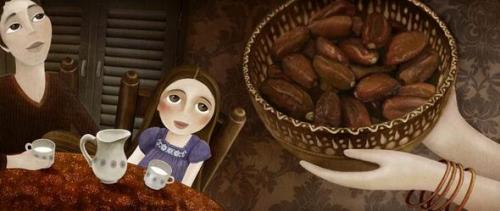
Do you take pictures or do any types of research before you start a project?
Yes, I do take pictures all the time and with the help of Photoshop might use them in my illustrations too.
The research phase is the first and one of the most important parts of the work for me. It helps me to have a more accurate picture of story in my mind. For example I had a commission few years ago to do a few pieces based on a short story that was related to Hispanic culture. I had to do a long research through photos, their art, history etc… to familiarize myself with the setting in that story.
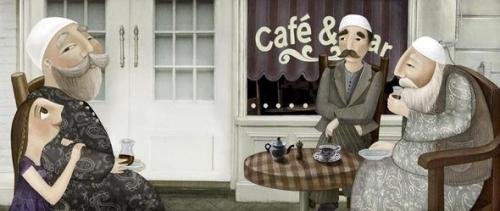
Do you think the Internet has opened doors for you?
Most definitely. All my commissions are coming from the Internet. But the truth is that as much as Internet had made the life easier for illustrators, in my opinion, it has created the problems of its own.
The industry is really tough and the competition for getting a commission is really high.

Occasionally I am approached by clients who ask for a great amount of work in exchange for a ridiculously low fee. I usually say no because thankfully I’ve got other means to support myself, but I am sure there are illustrators in countries hit by economy crisis who might be happy to work with that amount of money. There are also graduate students who are willing to work for low fees just to have a published piece of work in their portfolio. So I guess it has created a bit of financial instability for illustrators too.
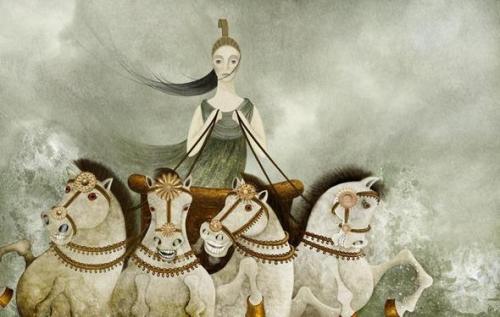
Do you use Photoshop or Corel Painter with your illustrations?
Yes, I work with Photoshop all the time but I try to use it carefully. The problem with digital work is that if you limit yourself to just drawing with a digital pen and nothing more, the end product would be something bland with no spontaneity in it. In manual works you often make mistakes, an unintentional drop of ink on the surface or a wrong stroke of the brush etc… that make the work even more interesting. So I try to have a mixture of manual and digital techniques in my works.
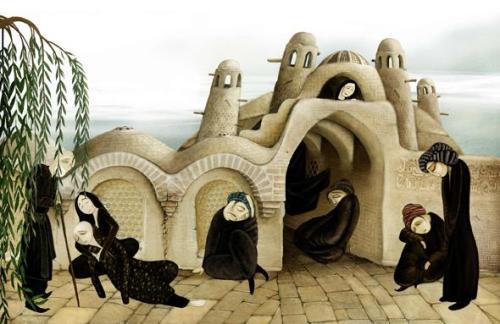
Do you own or have you used a Graphic Drawing Tablet in your illustrating?
Yes, it is many years now that I have one and I think it is one of the best tools that I have bought for myself so far.
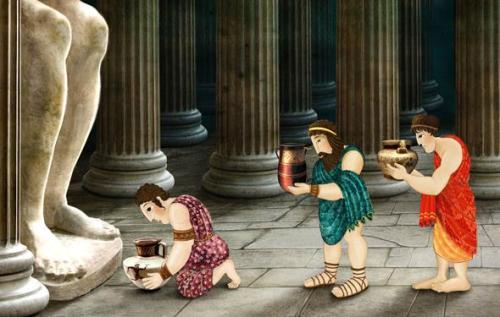
Do you have any career dreams that you want to fulfill?
I wish that one day I get the chance to illustrate a collection of the “One thousand and one night”.
Many artists have tried it so far, among the best in my opinion is the one by Edmund Dulac but I think it still has a great potential for exploration and hope that one day the opportunity rises for me to do it too.
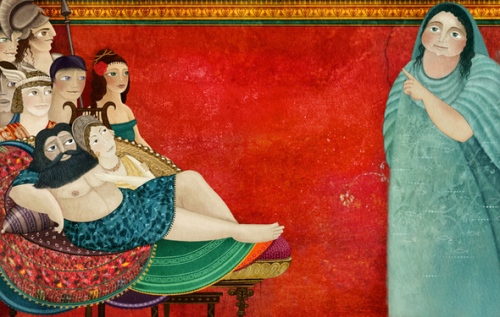
What are you working on now?
At the moment I’m working on a story that I have written myself called “The day I met Popito” I have finished the first draft of the story and I am working on some samples to take to publishers now. The story is about a family who one day finds out that a family of hippos has moved next door to them. They are not happy about having hippos as their neighbors at all but in time they learn to know and appreciate each other more.
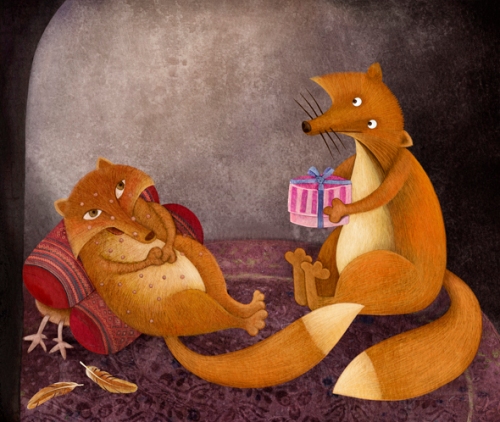
I think the message in the story is probably appropriate for our time. More and more people come across a situation where they have to co-exist with people who might be different from them. Different in color of skin, nationality, religion etc… we have to find a way to harmoniously live together and accept our differences.
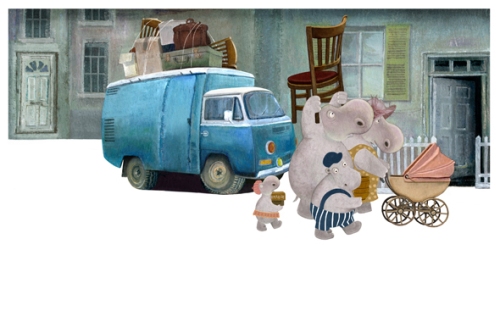
Do you have any material type tips you can share with us? Example: Paint or paper that you love – the best place to buy – a new product that you’ve tried – A how to tip, etc.
Recently I have bought this gadget from Wacom called “Inkling digital sketch pen”. While you sketch on paper with a ballpoint pen provided, it captures your sketches digitally and then you can transfer the files to your computer with a USB connection. It lacks a bit of smoothness and occasionally misses the lines if you don’t press your pen hard enough on paper but I found it a very interesting device to have for sketching digitally.
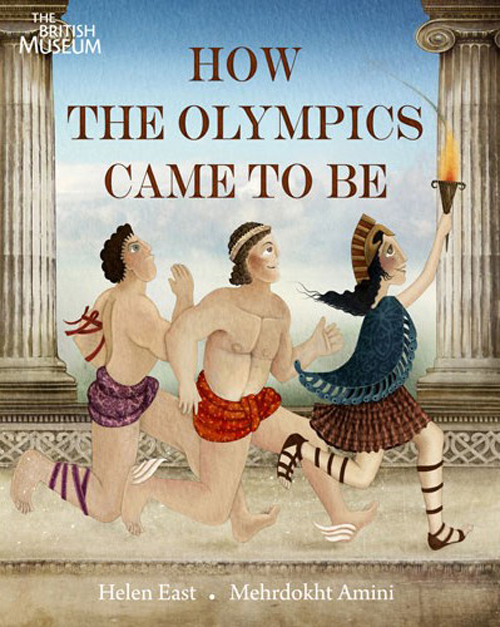
Any words of wisdom on how to become a successful writer or illustrator?
Once, one my college professors gave me a good piece of advice, which I still remember. She said” if you try, all your life, to perfectly imitate someone else’s work or style you might end up becoming very good in it but your work has really no artistic value and doesn’t take you anywhere Eventually you would be just a good imitator. But if you try to draw one straight line, it belongs to you and it has some originality of its own.”
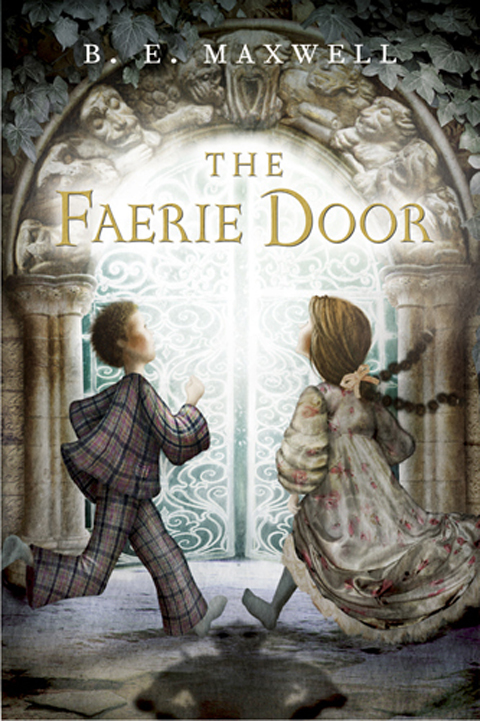
Thank you Mehrdokht for taking the time to share your process and journey with us. We look forward to hearing about all your future successes.
To see more of Mehrdokht’s illustrations visit her at:
Website: http://www.myart2c.com
Please take a minute to leave a comment for Mehrdokht, I know she would love to heard from you and I always appreciate it. Thanks!
Talk tomorrow,
Filed under:
authors and illustrators,
illustrating,
Illustrator's Saturday,
inspiration,
Interview,
picture books Tagged:
Alzahra University in Tehran,
Golden Domes And Silver Lanterns,
Graphic Design,
Mehrdokht Amini 


By: Kathy Temean,
on 9/11/2014
Blog:
Writing and Illustrating
(
Login to Add to MyJacketFlap)
JacketFlap tags:
Agent,
inspiration,
authors and illustrators,
Kudos,
First Page Critique,
Free Fall Friday,
Anne Belov,
Laura Watson,
L Perkins Agency,
Rachel Brooks,
Donna Taylor,
Add a tag
Below is a double page spread from A LOVE LETTER FROM GOD that Laura Watson illustrated.
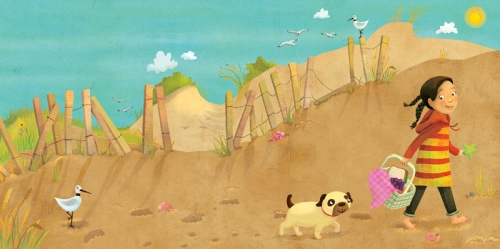
I received a wonderful update note from Laura Watson who was featured on Illustrator Saturday last year. http://kathytemean.wordpress.com/2013/08/10/illustrator-saturday-laura-watson/
Here’s what Laura wrote:
“I wanted to thank you again for the wonderful profile you did on me last fall. It led to at least one awesome job, that I know of, and tons of great exposure. Thank you so much!”
“I have a couple of recent projects that are now printed:
Farm Friends for I See Me! Inc. Personalized Children’s Books (http://www.iseeme.com/my-farm-friends-personalized-book.html#Tab-A-2 ) and A Love Letter from God by P.K. Hallinan (for Ideals Children’s Books.”
“I’ve also been working on projects for Capstone, Orca Books (in Canada) and a couple of self-publishing clients too. This has been my busiest year ever, so far. Just pausing to catch my breath and update my portfolio, etc. this week.”
Laura, congratulations on all your recent successes. I’m so happy I contributed to a good year.

Donna Taylor launch two blogs with week. Thought you might like to check them out. She has some give-a-ways on both blogs that you may like. They end Sunday night at midnight.
http://writersideup.com and http://2creativitycookbook.com
 Agent Rachel Brooks from the L Perkins Agency has agreed to be September’s First Page Critiquer.
Agent Rachel Brooks from the L Perkins Agency has agreed to be September’s First Page Critiquer.
Before joining the L. Perkins Agency, Rachel worked as an agent apprentice to Louise Fury. In addition to her industry training, Rachel has a business degree and graduated summa cum laude with a BA in English from Texas A&M University-CC.
WHAT RACHEL LIKES: She is excited about representing all genres of young adult and new adult fiction, as well as adult romance. While she is looking for all sub-genres of romance, she is especially interested in romantic suspense and urban fantasy. She is also on the lookout for fun picture books.
She’s a fan of dual POVs, loves both print and ebooks, and has a soft spot for marketing savvy writers.
Below is the September picture prompt for anyone who is inspired to use it for their first page.
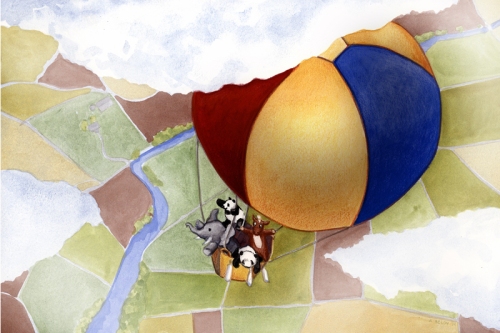 The above illustration was sent in by Anne Belov. She was featured on Illustrator Saturday http://kathytemean.wordpress.com/2012/06/23/illustrator-saturday-anne-belvo/ She works in oils, egg tempera, and works with printmaking.
The above illustration was sent in by Anne Belov. She was featured on Illustrator Saturday http://kathytemean.wordpress.com/2012/06/23/illustrator-saturday-anne-belvo/ She works in oils, egg tempera, and works with printmaking.
Here are the submission guidelines for submitting a First Page in April: In the subject line, please write “September First Page Critique” or “September First Page Picture Prompt Critique” and paste the text in the email. Please make sure you include your name, the title of the piece, and whether it is as picture book, middle grade, or young adult, etc. at the top.
Plus attach your first page to the email. Please format using one inch margins and 12 point New Times Roman font – double spaced, no more than 23 lines. Send to: kathy(dot)temean(at)gmail(dot)com. Remember to also cut and paste it into the body of the e-mail, plus attach it in a Word document.
DEADLINE: September 19th.
RESULTS: September 26th.
You can only send in one first page each month. It can be the same first page each month or a different one, but if you sent it to me last month and it didn’t get chosen, you need to send it again for this month. Of course, it doesn’t have to be the same submission. It can be a first page from a work in process or you can use the picture prompt above.
Talk tomorrow,
Kathy
Filed under:
Agent,
authors and illustrators,
inspiration,
Kudos Tagged:
Anne Belov,
Donna Taylor,
First Page Critique,
Free Fall Friday,
L Perkins Agency,
Laura Watson,
Rachel Brooks 


By: Kathy Temean,
on 9/5/2014
Blog:
Writing and Illustrating
(
Login to Add to MyJacketFlap)
JacketFlap tags:
Interview,
inspiration,
Process,
illustrating,
authors and illustrators,
video game industry,
Illustrator's Saturday,
David Hill,
Digital Painting tops,
Glasgow Scool of Art,
Add a tag
 Dave Hill graduated from Glasgow School of Art in 1983 and began his career as a painter with exhibitions in Glasgow, Edinburgh, Liverpool and London.
Dave Hill graduated from Glasgow School of Art in 1983 and began his career as a painter with exhibitions in Glasgow, Edinburgh, Liverpool and London.
He worked in the video game industry for ten years as a concept artist producing character and environment designs in both 2D and 3D.
As a freelance illustrator Dave’s passion is children’s books although he has also illustrated comic books, storyboards, greeting cards and product packaging.
Dave produces most of his work digitally although he still accepts traditional commissions and paints in oils and watercolour.
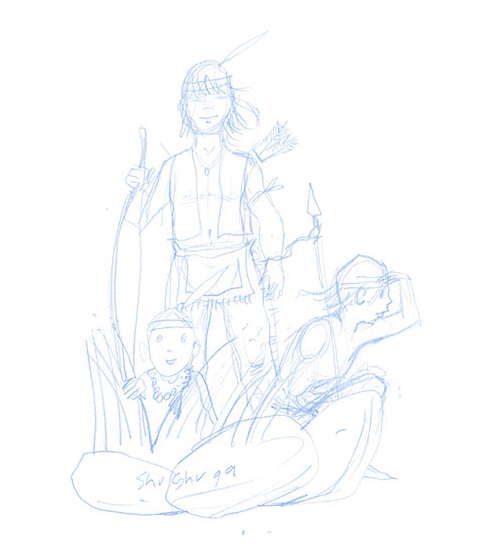
The rough sketch.
I begin by preparing a rough sketch in Painter using a custom pencil. I prefer drawing in blue line because its less obtrusive than black or grey.
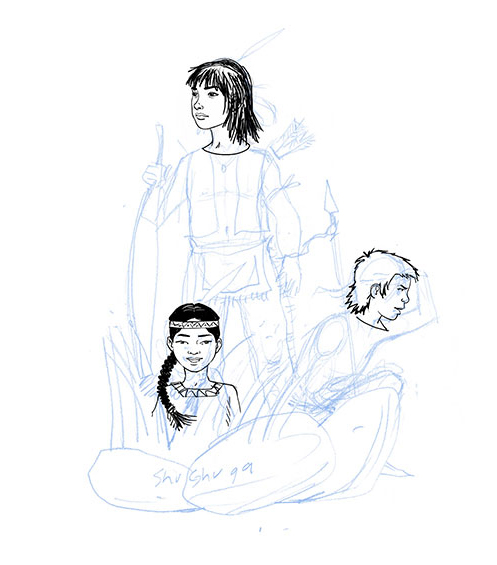
Inking
I create a new layer and begin inking over the blue line rough, tightening up as I go along and working on multiple layers as I draw new areas.
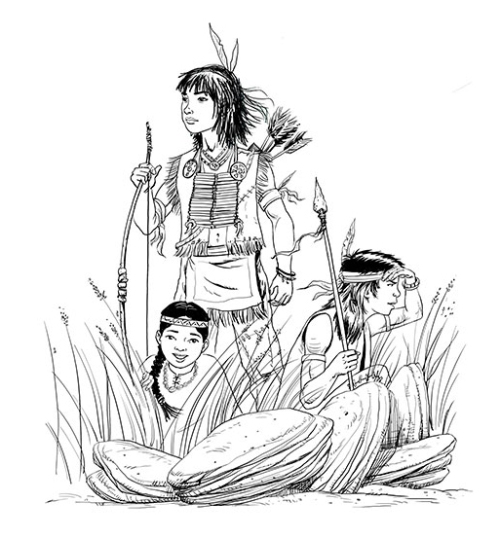
The finished inked drawing is flattened onto one single layer.
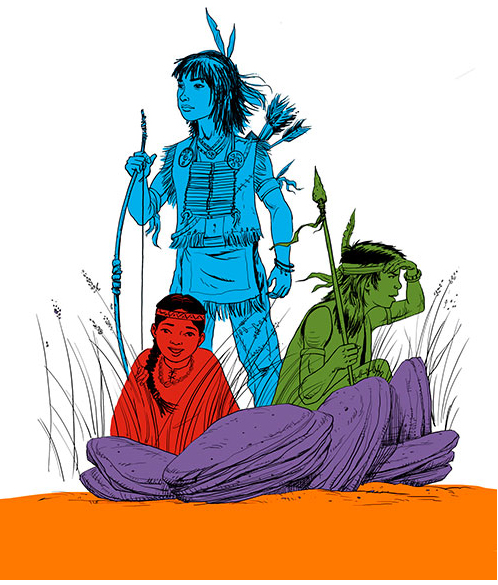
Creating a mask in Photoshop to help with colouring.
The inked layer is set to ‘Multiply’ so that all white areas of the drawing become transparent and this is renamed ‘Line’ and placed at the top of the stack in the layers palette. I create new layers beneath the line drawing and block in each area of interest with different colours which will easily let me select and isolate a specific area of the image.
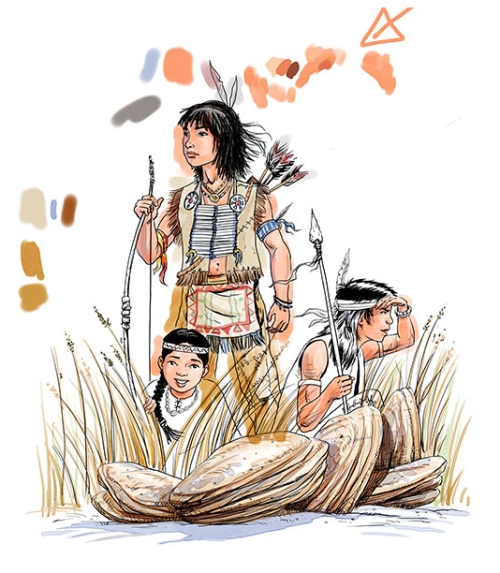
Colouring
In Painter, I hide the mask layer and create a new blank layer for the colour. I don’t need to be precise at this moment so my brush work can be loose and fluid which is the look I prefer. Painters ‘digital watercolour’ brush variants are terrific at creating that rich dabbled texture of traditional watercolour painting and because I’m laying in washes I need to use large custom brushes to achieve that effect.
The large brushes are difficult to control but it’s ok if the colour bleeds over the line work at this stage.
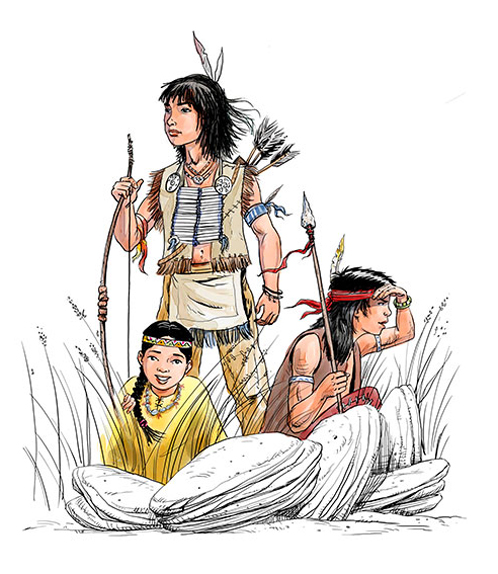
Edit in Photoshop using the masks.
Once I’ve blocked in the main areas I need to tidy up the edges and to do this I select areas using the mask I made in Step 4. By simply selecting with the magic wand tool I can very quickly balance up the coloured layers and remove any colour that has bled over the lines. I do this in Photoshop because it’s far superior at colour management and much more accurate than Painter at selecting intricate areas.

Adding detail
Back to Painter and on a new layer I start adding the finer details and use my masks to help if needed.
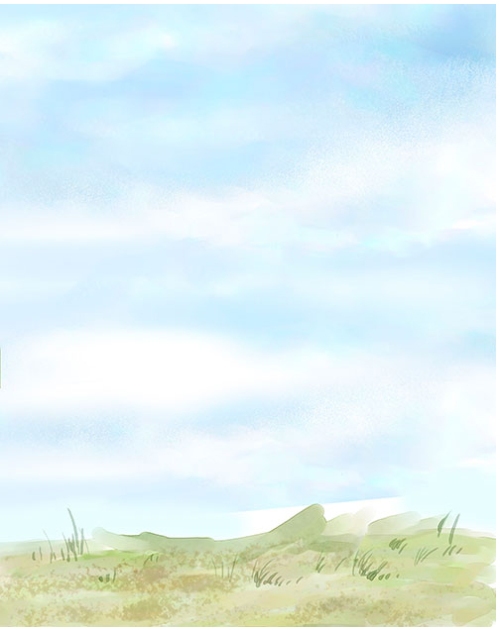
Creating the background.
I usually create my backgrounds as separate files because I like to play around with brush marks and textures. These are pretty experimental exercises and they’re great fun to do but they can result in really big file sizes which is another reason for doing them separately from the main image.
I begin by using washes to build up the sky keeping things simple as I want the figures to stand out heroically. I also want to create the illusion of depth so I keep the sky soft and I add some texture to the ground since it’s in the foreground.

I drop the flattened background into the main image file at the bottom of the layer stack. Some of the sky shows through the figure work because they were painted with semi-transparent washes and I need to rectify this.
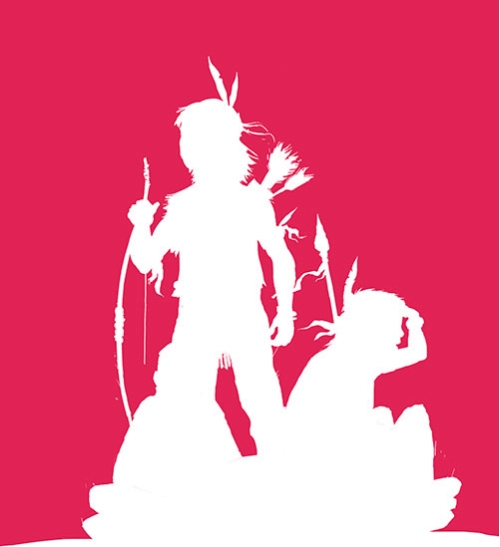
Using my coloured masks I simply select and fill the areas with pure white.
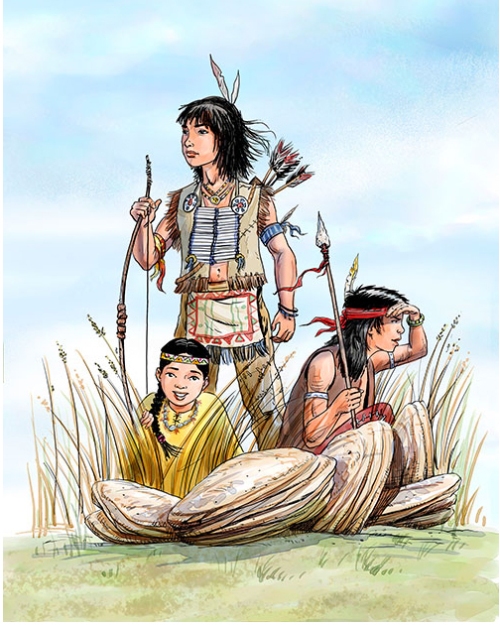
This white mask is then positioned between the figure layer and the background layer and the illustration is complete.
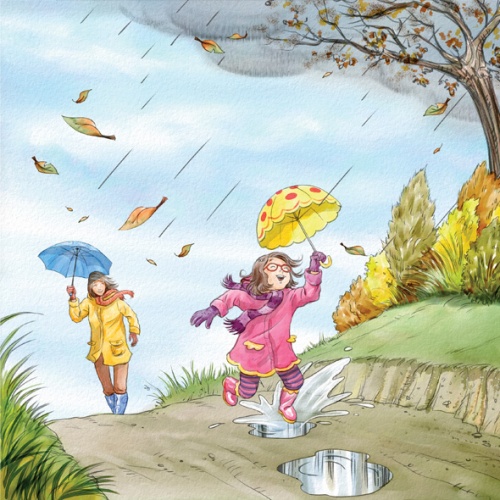
Can’t show you all of David Book Covers, because there are too many, but the above cover illustration was created for SPLASH written by Lucy Courtenay and David Hill.
Below are some additional covers to view:
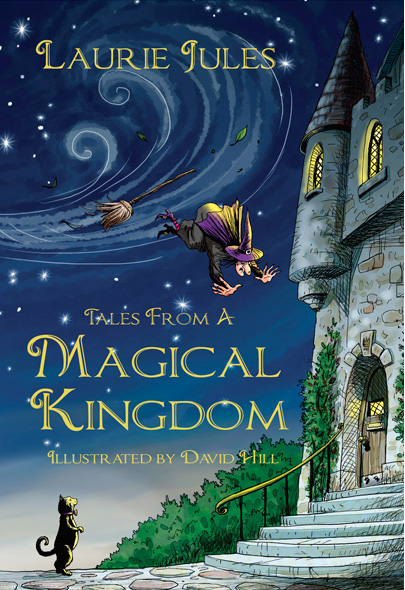
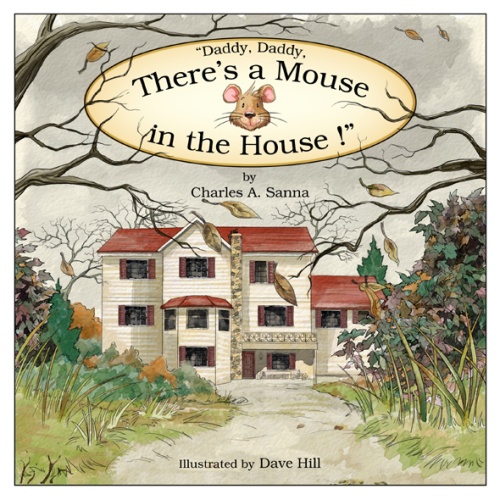
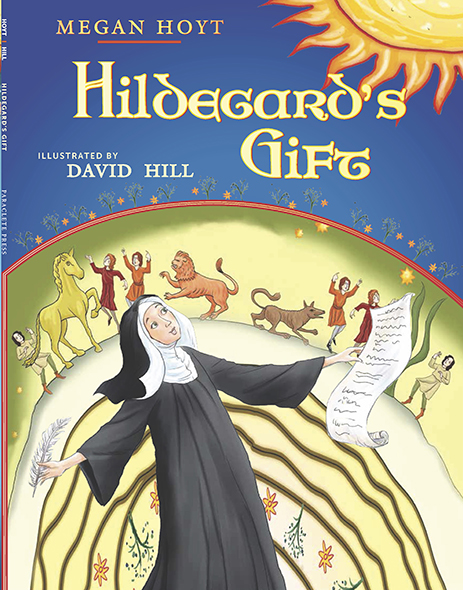
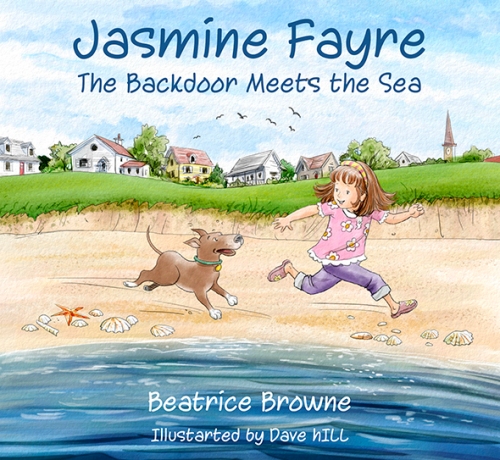

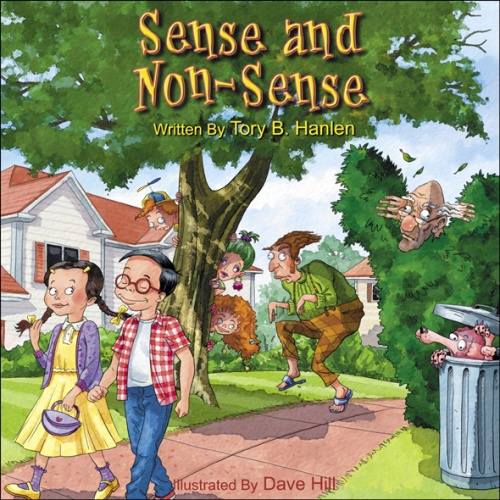

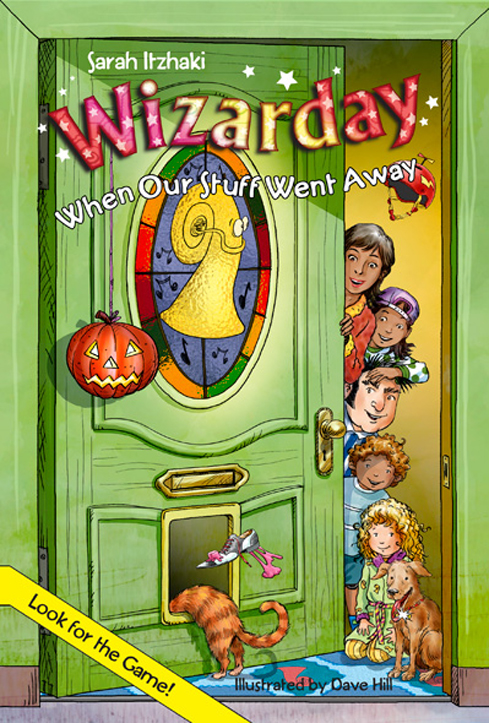
ABOVE AND BELOW: Front and back Book Cover
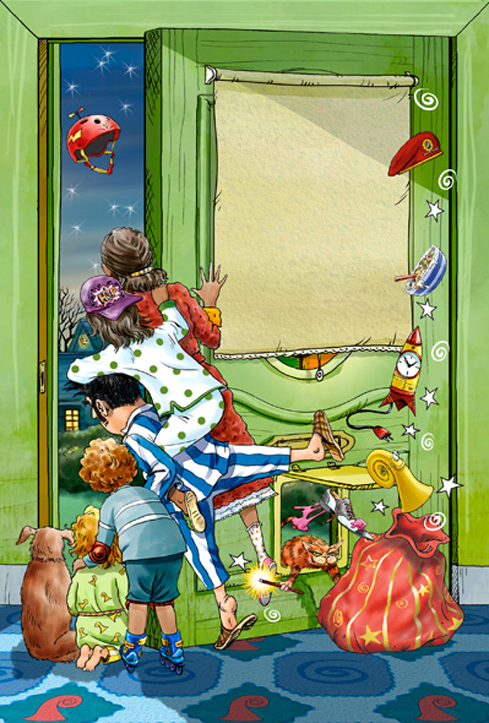
When did you know you wanted to be an artist?
As far back as I can remember. From a very young age I realized that I attracted attention whenever I drew pictures and this made me feel good.

How did you decide to attend Glasgow School of Art?
The Glasgow School of Art and especially the ‘Mackintosh’ building is famous the world over not only for its architecture but also for its reputation as one of the finest painting schools there is, so the opportunity of actually studying there and painting inside those hallowed walls was such a thrill. I knew I just had to go there to benefit from the expertise of the tutors and staff if I was to be serious about a career as an artist.
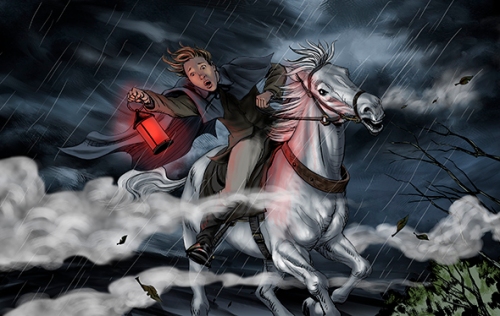
What was your favorite class?
Life drawing
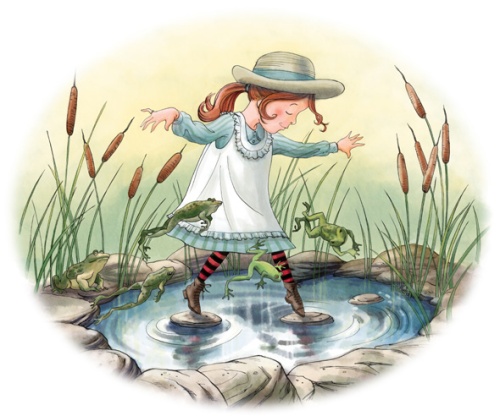
What was the first piece of art you did and someone paid you for your work?
The first paid commission was a very long time ago when I was aged 12 or 13 and was a watercolour landscape of the River Clyde in the village where I grew up. I think I got £20 (about $30) for it which at that time seemed like a small fortune.

How did you get involved with doing the art for video games?
By pure chance as it happened! I was in a print bureau in Glasgow having some of my comic book pages and character designs photocopied when the creative director of ‘VIS games’ walked in to get some stuff copied too.
He had nowhere to lay his artwork since mine covered the entire counter space, but instead of being annoyed he started leafing through the illustrations and asking if he could have copies made for a games pitch he was preparing. We struck a deal there and then and that was the start of a brilliant 10 years in the games industry.
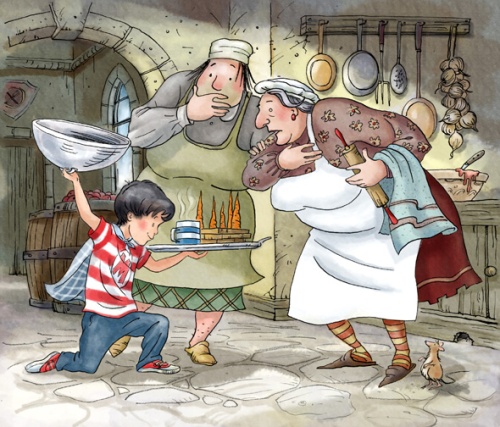
Can you tell us a little bit about lanarkshire, where you live now? Is it near London? Is it a strong artist community?
Lanarkshire is a large county comprising several satellite towns on the outskirts of Glasgow, which is roughly 400 miles from London. Coatbridge, the town where I live is formerly a ‘coal town’ but all of the mining and steel industries have gone now, leaving the town much cleaner and greener. There isn’t a strong art scene in the town but Glasgow with its rich history is only 10 minutes away and it has a wealth of artworks dating from the Renaissance to the present day.
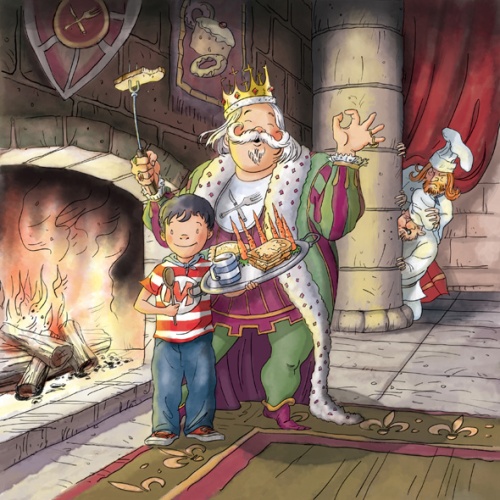
How did you get interested in doing illustrating for children?
I always loved including a narrative element in my work and telling stories with pictures led me initially to drawing comic books. I did this for several years before I realized that my real passion was children’s stories. I used to write adventure stories for my children when they were young and adding illustrations to those ideas was the first step in finding my vocation.
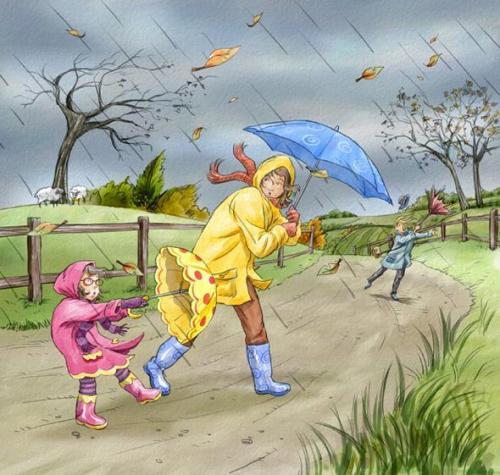
Have the materials you use changed over the years?
Yes indeed! I graduated with honours in Fine art so my materials were all traditional painters tools. Charcoal sticks, putty rubbers, sables, oil paint, turps and oily rags. They cost a lot of money too.
Nowadays and for the past 18 years I’ve been working digitally. This was a conscious decision as it suits the nature of the industry where editing artwork can be quite extensive and time consuming. This would be disastrous for ones profit margin in a traditional workflow but is made relatively easy in a digital workflow. I still draw occasionally in pencils and I miss the smell of linseed oil and getting my hands dirty. I don’t miss the expense though and I love the Undo button.
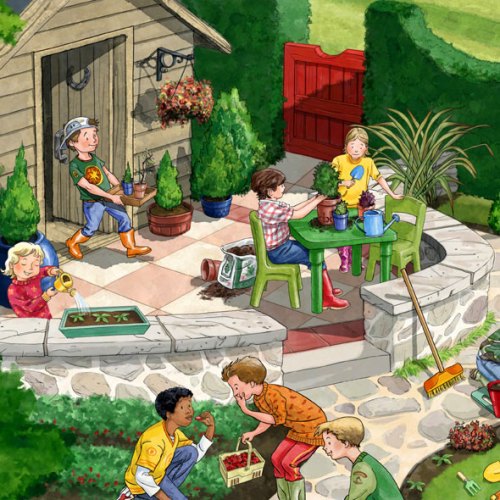
Do you have an artist rep?
I do have a rep. It’s a very open agreement though compared to some agencies, which suits my creative exploration. I keep my own clients and any new work that comes directly to me. I would be interested in forging new relationships with other reps but only if it’s not exclusive and allows me to work with my own clients too.

When did you illustrate your first children’s book? What was the title of that book?
My first book was ‘Speak Along French’ by Isabelle Bennett for Mantra Lingua Publishers in 2005.
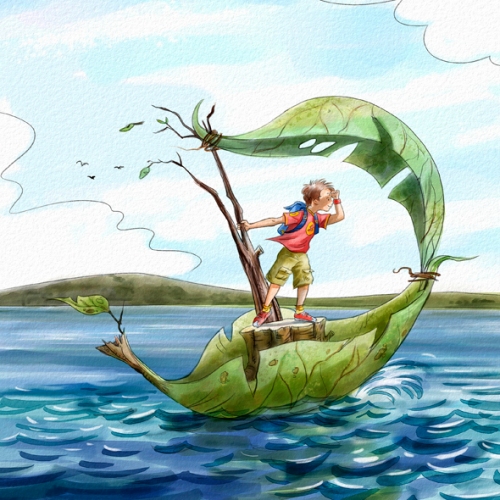
How did that job come your way?
The art editor saw my website which had gone ‘live’ just two weeks before. I couldn’t believe my luck.
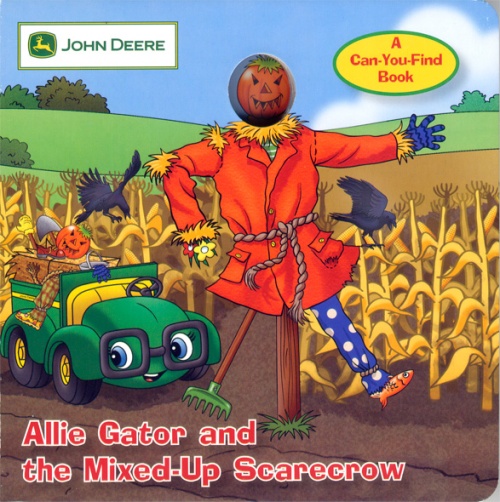
How many children’s books have you illustrated?
Seventy Five
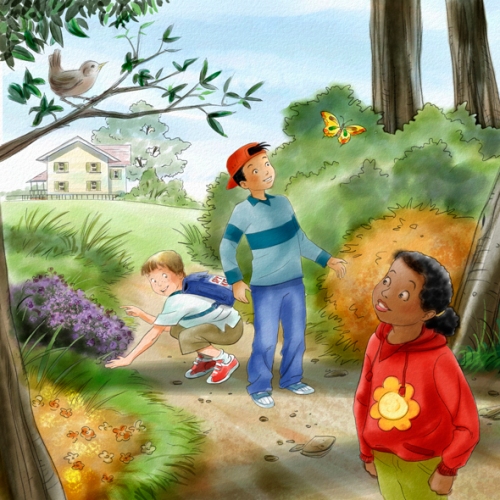
How did you get the contract with HarperCollins to illustrate SPLASH?
Through my artist rep. I love that book. It was a real joy to draw and I had so much fun with the changing weather.
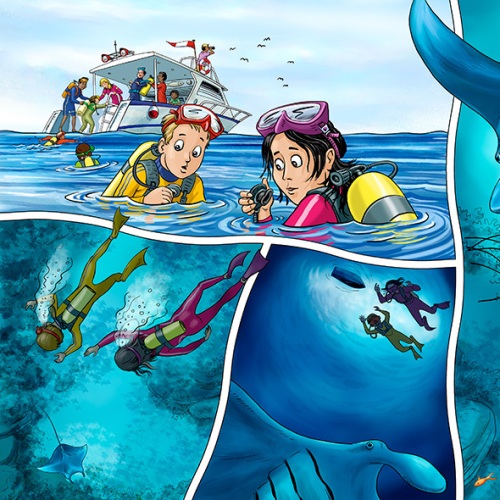
Was that the first contract to illustrate a picture book for a US publisher?
No. It was done for Harper Collins London.
‘What happened to Merry Christmas’ for Concordia was my first U.S. contract published in 2006.

Have you thought about writing and illustrating your own books?
All the time! I have loads of ideas and character designs but no time to pursue their development. I’m always too busy illustrating for everyone else which is a nice complaint I suppose.
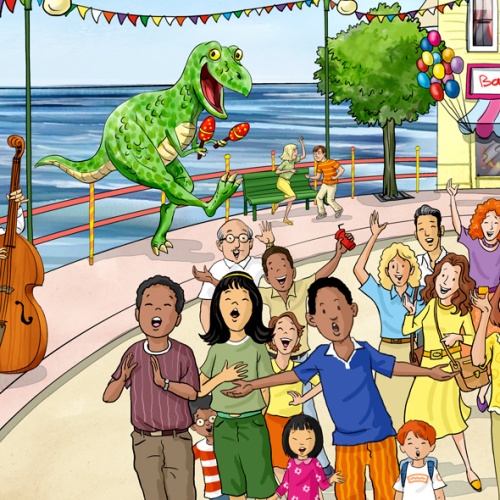
Are you open to illustrating self-published books for other children writers?
Yes. I work a lot with self-publishing authors and have done many books like this. I’m working on two right now both of which are for American authors.
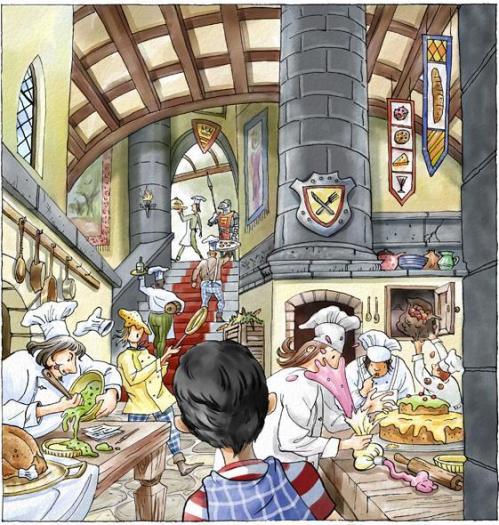
Have you done any work for educational publishers or children’s magazines?
Yes. I do a great deal of educational illustration. I’ve only done the odd job for magazines though.
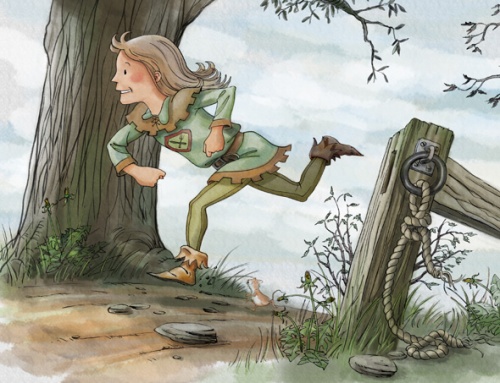
What type of things do you do to find more illustration work?
I don’t really have to look for work anymore. I’m very fortunate in that I have built up a respectable client base and they return to me or if it’s a new client they’ll come directly to me through my website. If I did have a quiet spell I guess I’d prepare a digital portfolio and send it out to as many publishers as possible.
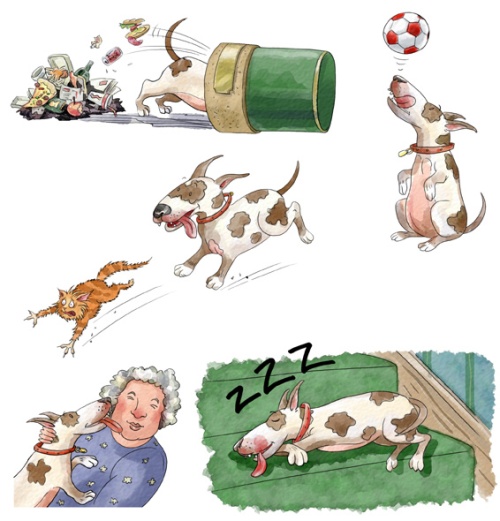
Do you ever use paint as a medium or is it all digital?
It’s all digital.
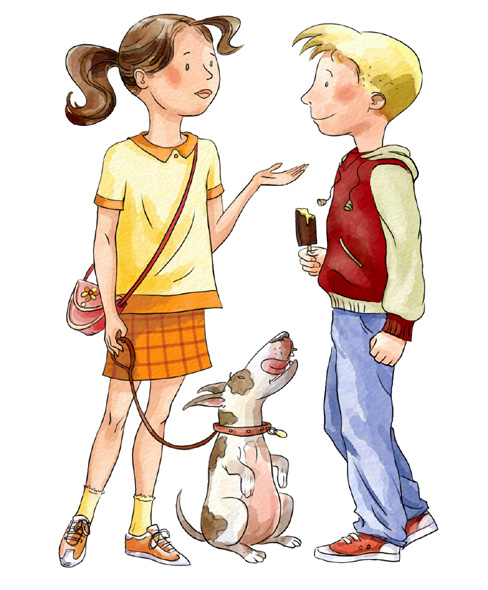
When did you start working digitally?
In 1996 when I started working as a concept artist in the video games industry.
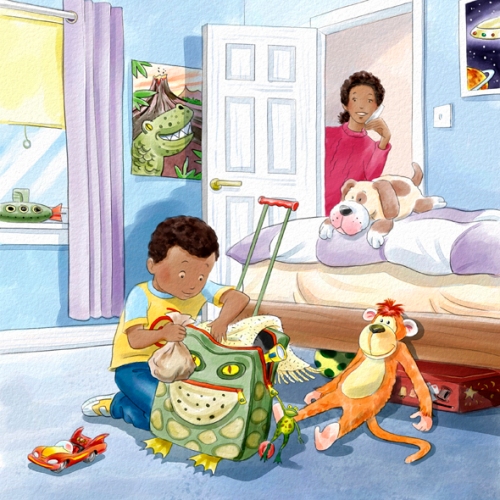
Do you use Photoshop with your illustrations?
Yes. Photoshop is priceless in my workflow because of its stability and efficiency at handling and processing extremely large files. I use it at every stage of my process and flit between it and Painter constantly, using each programmes strengths to maximum effect. Final stages of an illustration like compositing and colour balancing are always done in Photoshop.
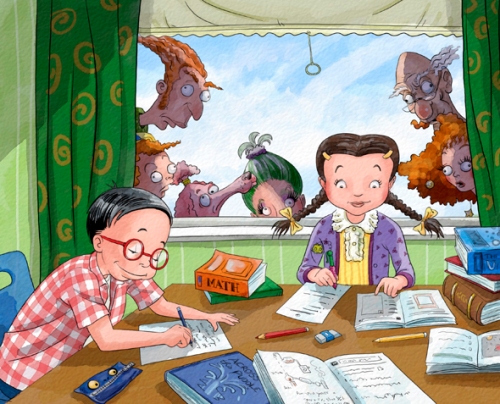
Do you use other software programs when you illustrate? If so, which ones?
Most of my colouring is done in Corel Painter which beats photoshop hands down when creating an organic looking illustration. Painters brush engine is fabulous. It feels so natural and you can create digital artwork that looks just like it was made using traditional media.
I use Adobe In Design for creating dummy books to help me get a better idea of the flow and pacing of the story. I build the page layouts, drop in the script and then import my rough sketches to give a clear view of how the final book will look and feel.
I also use Adobe illustrator when scale able artwork is required or if the client is looking specifically for a more graphic approach.
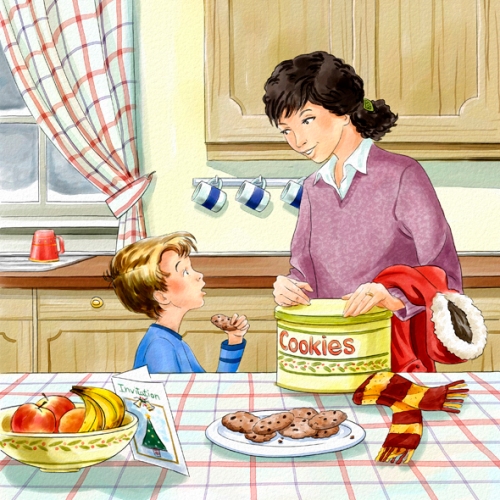
Do you use a graphic tablet to draw your illustrations?
Yes. I use a Wacom intuos 3
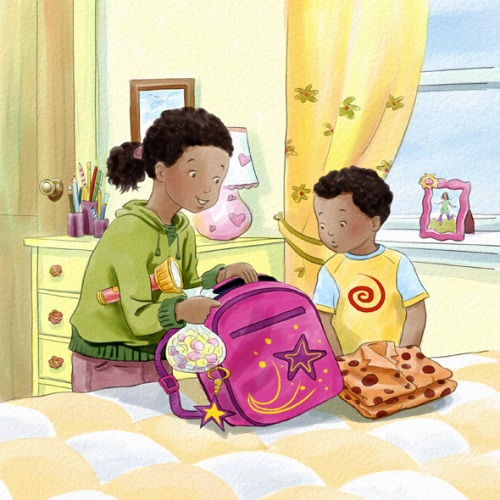
Do you spend a specific amount of time working on your own illustrations?
Unfortunately I can’t seem to find the time to do my own illustrations.
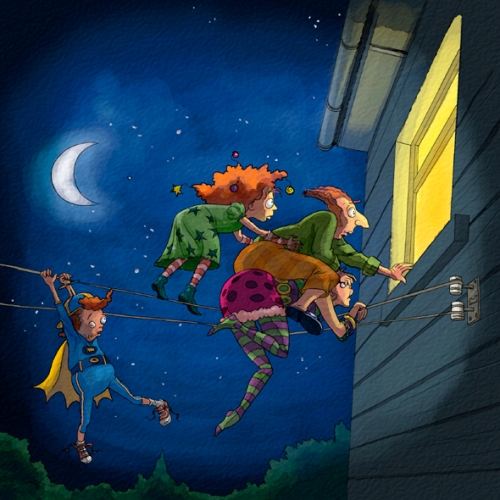
What is your biggest success story? The thing you are most proud of doing?
Making a living as an artist is probably the biggest success story for me but the work I’m most proud of doing is probably an illustration titled ‘Dancing Mouse’. It was done as a self-promotional piece way back at the start of my career and shows my daughter Amy watching in amazement at a little mouse doing a handstand.
The amount of work this one image alone has generated is quite staggering, so for that reason it’s my most successful piece.
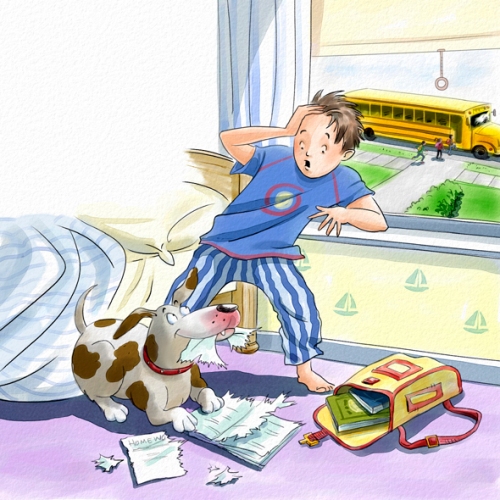
Do you still exhibit your art?
Not in the conventional sense, but I subscribe to a couple of online galleries who host my work.

Do you take pictures or do any other type of research before you start a project?
I take photographs of everything and anything and also buy licensed pics from image banks whenever specific references are needed. I do quite a bit of historical illustration where attention to factual detail is of paramount importance so having good reference is essential.
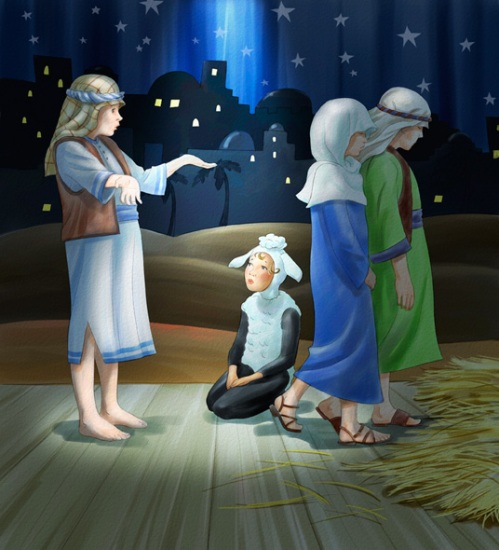
Do you think the Internet has opened doors for you?
Absolutely. The world is your market place and getting a website to show my work has been the biggest factor in my success. Most of my clients are British or American but I also have clients in Ireland, Israel, Egypt, Germany, and South Africa. Being able to transfer digital files electronically has made things so much faster, safer, cheaper and easier.
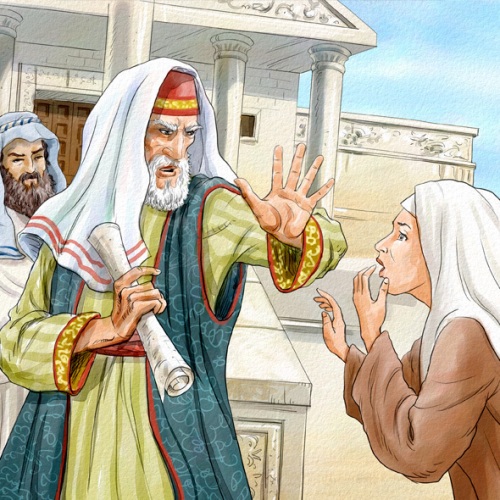
Do you think your style has changed over the years? Have your materials changed?
My style changes to suit the demographic of each particular job. As a professional illustrator I think it’s beneficial if you can adapt your style to encompass a variety of situations and not limit yourself to a single area of the market. One day I’ll be drawing realistically for 7th graders with perhaps close attention to historical detail, the next I’ll be drawing for 4 year olds completely from my imagination.
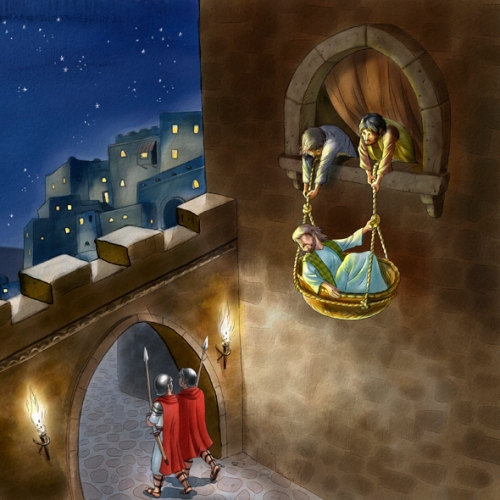
Do you have any career dreams that you want to fulfill?
Yes. To one day have my own story books published. Oh how I would love that!
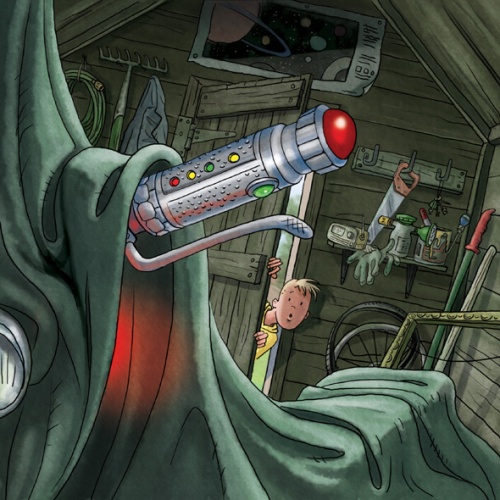
What are you working on now?
I’m doing 3 book covers for different authors, a picture dictionary for Egyptian/English Schools, some black and white spots for a poetry book, an isometric map of a fictional American town and two 24 page picture books for independent self-publishing authors.
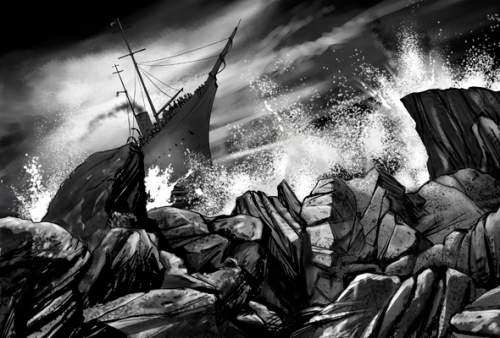
Do you have any art type tips (digital or traditional) you can share with us?
I work digitally so my tips relate to that process.
Mask! Mask! And Mask! I can’t stress how important it is to produce accurate masks before you start to colour digitally. If done properly your production time will be drastically reduced and your work load will be so much more streamlined and made much more manageable due to the control you’ll have over isolating, editing and finishing.
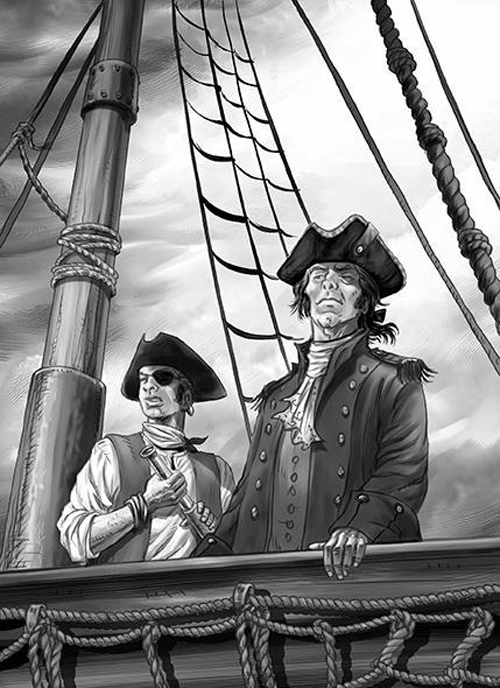
Decide on a file naming convention at the start of your project and stick to it. Save regularly with Sequential numbering to keep your files organized and easy to find. On average I have about 15 variations of each illustration saved throughout the production process.
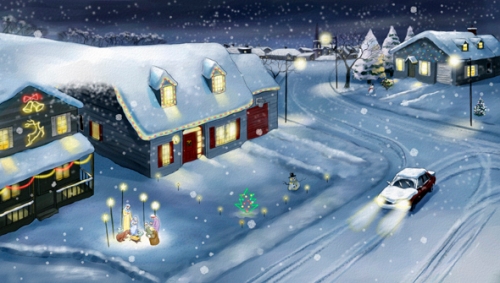
Any words of wisdom on how to become a successful writer or illustrator?
Dedication. I work on average 14 hours a day but it’s worth it to be doing something I love.
Build up a reliable reputation by always meeting your deadlines and your clients will come back time and time again.
Draw everything you see that interests you and take a sketch book and camera with you always.
Get your own website or rent space on one of the many host sites out there. You need as much exposure as possible and the web is a window to the world.

Thank you David for taking the time to share your process and journey with us. We look forward to hearing about all your future successes.
To see more of David’s illustrations visit him at:
Website: http://www.davidhillarts.co.uk/
Please take a minute to leave a comment for Annie, I know she would love to heard from you and I always appreciate it. Thanks!
Talk tomorrow,
Kathy
Filed under:
authors and illustrators,
illustrating,
Illustrator's Saturday,
inspiration,
Interview,
Process Tagged:
David Hill,
Digital Painting tops,
Glasgow Scool of Art,
video game industry 


By: Kathy Temean,
on 9/4/2014
Blog:
Writing and Illustrating
(
Login to Add to MyJacketFlap)
JacketFlap tags:
inspiration,
submissions,
authors and illustrators,
opportunity,
First Page Critique,
Writer's Prompt,
Free Fall Friday,
Anne Belov,
Call for Illustrations,
Picture Prompt,
Add a tag
CALL FOR ILLUSTRATIONS: Need illustrations for this blog. I would love to show off your illustrations during one of my daily posts. So please submit your illustrations: To kathy (dot) temean (at) gmail (dot) com. Illustrations must be at least 500 pixels wide and include a blurb about yourself that I can use.
Below is the September picture prompt for anyone who is inspired to use it for their first page.
 The above illustration was sent in by Anne Belov. She was featured on Illustrator Saturday http://kathytemean.wordpress.com/2012/06/23/illustrator-saturday-anne-belvo/ She works in oils, egg tempera, and works with printmaking.
The above illustration was sent in by Anne Belov. She was featured on Illustrator Saturday http://kathytemean.wordpress.com/2012/06/23/illustrator-saturday-anne-belvo/ She works in oils, egg tempera, and works with printmaking.
Here are the submission guidelines for submitting a First Page in April: In the subject line, please write “September First Page Critique” or “September First Page Picture Prompt Critique” and paste the text in the email. Please make sure you include your name, the title of the piece, and whether it is as picture book, middle grade, or young adult, etc. at the top.
Plus attach your first page to the email. Please format using one inch margins and 12 point New Times Roman font – double spaced, no more than 23 lines. Send to: kathy(dot)temean(at)gmail(dot)com. Remember to also cut and paste it into the body of the e-mail, plus attach it in a Word document.
DEADLINE: September 19th.
RESULTS: September 26th.
You can only send in one first page each month. It can be the same first page each month or a different one, but if you sent it to me last month and it didn’t get chosen, you need to send it again for this month. Of course, it doesn’t have to be the same submission. It can be a first page from a work in process or you can use the picture prompt above.
I will post this months Guest Critiquer next week.
Talk tomorrow,
Kathy
Filed under:
authors and illustrators,
inspiration,
opportunity,
submissions,
Writer's Prompt Tagged:
Anne Belov,
Call for Illustrations,
First Page Critique,
Free Fall Friday,
Picture Prompt 


By: Kathy Temean,
on 9/3/2014
Blog:
Writing and Illustrating
(
Login to Add to MyJacketFlap)
JacketFlap tags:
Agent,
authors and illustrators,
opportunity,
Editor & Agent Info,
Places to sumit,
Call for Illustrations,
L Perkins Agency,
Agent Looking to Build List,
Rachel Brooks,
Add a tag
Illustrators: If you have an illustration you would like to show off, please email it to me. All illustrations need to be at least 500 pixels wide. Thanks!

Rachel Brooks – Junior Agent
Rachel is actively building her client list.
Before joining the L. Perkins Agency, Rachel worked as an agent apprentice to Louise Fury. In addition to her industry training, Rachel has a business degree and graduated summa cum laude with a BA in English from Texas A&M University-CC.
WHAT RACHEL LIKES: She is excited about representing all genres of young adult and new adult fiction, as well as adult romance. While she is looking for all sub-genres of romance, she is especially interested in romantic suspense and urban fantasy. She is also on the lookout for fun picture books.
She’s a fan of dual POVs, loves both print and ebooks, and has a soft spot for marketing savvy writers.
TO SUBMIT: Send a query letter (with an author bio in it) and the first 5 pages of the manuscript pasted into an email (no attachments) to rachel [at] lperkinsagency.com. Please only query one agent at this agency.
Email: [email protected]
Twitter: @RachMBrooks
REMEMBER:
- Attachments will not be opened unless specifically requested.
- We only accept email queries. We do not accept queries by snail mail, phone or social media. All snail mail queries will be discarded unopened
- We will only consider one manuscript from one writer at a time to one agent at a time. If you have written more than one manuscript, choose the one you think is the most promising and pitch that to us. Do not pitch all of them.
Talk tomorrow,
Kathy
Filed under:
Agent,
authors and illustrators,
Editor & Agent Info,
opportunity,
Places to sumit Tagged:
Agent Looking to Build List,
Call for Illustrations,
L Perkins Agency,
Rachel Brooks 

View Next 25 Posts
 Sholta Walker was trained and graduated as a painter in 1988 and since 1995 he has worked professionally as a full-time artist and illustrator.
Sholta Walker was trained and graduated as a painter in 1988 and since 1995 he has worked professionally as a full-time artist and illustrator.




































 Do you own or have you used a Graphic Drawing Tablet in your illustrating?
Do you own or have you used a Graphic Drawing Tablet in your illustrating? Do you have any career dreams that you want to fulfill?
Do you have any career dreams that you want to fulfill?
 Do you have any material type tips you can share with us? Example: Paint or paper that you love – the best place to buy – a new product that you’ve tried – A how to tip, etc.
Do you have any material type tips you can share with us? Example: Paint or paper that you love – the best place to buy – a new product that you’ve tried – A how to tip, etc.






 Author of twenty-nine books,
Author of twenty-nine books, 


















 David Harrington’s affinity for art began at an early age, when he enthusiastically drew on floors, walls, furniture, and other inanimate objects. A native of southern California, Harrington pursued a career in illustration by enrolling in the Art Center College of Design in Pasadena, where he earned a BFA with honors. As a student, his favorite classes were figure drawing and painting.
David Harrington’s affinity for art began at an early age, when he enthusiastically drew on floors, walls, furniture, and other inanimate objects. A native of southern California, Harrington pursued a career in illustration by enrolling in the Art Center College of Design in Pasadena, where he earned a BFA with honors. As a student, his favorite classes were figure drawing and painting. 










































 Lita Judge is a writer and artist whose greatest passion is creating children’s books. She is the author/illustrator for over a dozen fiction and nonfiction picture books including Flight School (Simon & Schuster, 2014), Red Hat (S&S, 2013), Red Sled (S&S, 2011), Bird Talk (Roaring Brook, 2012), One Thousand Tracings, and Pennies for Elephants (Disney-Hyperion). Her background in geology, paleontology and biology inspires her nonfiction books. Lita spent several years working for the Royal Tyrrell Museum of Paleontology before turning to writing about dinosaurs and other natural history subjects. But her background with animals also inspires her whimsical fictional tales filled with characters who forge big dreams.
Lita Judge is a writer and artist whose greatest passion is creating children’s books. She is the author/illustrator for over a dozen fiction and nonfiction picture books including Flight School (Simon & Schuster, 2014), Red Hat (S&S, 2013), Red Sled (S&S, 2011), Bird Talk (Roaring Brook, 2012), One Thousand Tracings, and Pennies for Elephants (Disney-Hyperion). Her background in geology, paleontology and biology inspires her nonfiction books. Lita spent several years working for the Royal Tyrrell Museum of Paleontology before turning to writing about dinosaurs and other natural history subjects. But her background with animals also inspires her whimsical fictional tales filled with characters who forge big dreams. 






 Cover for BORN IN THE WILD
Cover for BORN IN THE WILD





















































 Lisa Fields is an illustrator based out of New York City and is represented by Chris Tugeau.
Lisa Fields is an illustrator based out of New York City and is represented by Chris Tugeau.







































 Sarolta Szulyovszky was born and grew up in Budapest (Hungary), she studied Applied Art, after which she moved to Italy. Since 2004 she start activity in the field of graphics and illustration working in a graphic design studio in Udine (Italy). Now she lives and works as a freelance illustrator and graphic designer in a little city in northern Italy: San Daniele del Friuli.
Sarolta Szulyovszky was born and grew up in Budapest (Hungary), she studied Applied Art, after which she moved to Italy. Since 2004 she start activity in the field of graphics and illustration working in a graphic design studio in Udine (Italy). Now she lives and works as a freelance illustrator and graphic designer in a little city in northern Italy: San Daniele del Friuli.












































 Dilys Evans has been providing advice to young artists since 1978, when she founded Dilys Evans Fine Illustration.
Dilys Evans has been providing advice to young artists since 1978, when she founded Dilys Evans Fine Illustration.  One Bite at a Time: How Writing a Novel is Like Eating a T-Rex and Other Things That Bite Back
One Bite at a Time: How Writing a Novel is Like Eating a T-Rex and Other Things That Bite Back  NaNoWriMos! This class will organize your approach so you launch into November with a plan that will result in a novel-like construction and not simply 50,000 words.
NaNoWriMos! This class will organize your approach so you launch into November with a plan that will result in a novel-like construction and not simply 50,000 words.
 Mehrdokht Amini has worked on many books for children. One of her latest picture book “Golden Domes And Silver Lanterns” in collaboration with” Hena Khan” has been highly praised and has been selected in the 2013 ALSC notable children’s booklist, which is a list of best of best in children’s book.
Mehrdokht Amini has worked on many books for children. One of her latest picture book “Golden Domes And Silver Lanterns” in collaboration with” Hena Khan” has been highly praised and has been selected in the 2013 ALSC notable children’s booklist, which is a list of best of best in children’s book.


























































 The above illustration was sent in by Anne Belov. She was featured on Illustrator Saturday
The above illustration was sent in by Anne Belov. She was featured on Illustrator Saturday  Dave Hill graduated from Glasgow School of Art in 1983 and began his career as a painter with exhibitions in Glasgow, Edinburgh, Liverpool and London.
Dave Hill graduated from Glasgow School of Art in 1983 and began his career as a painter with exhibitions in Glasgow, Edinburgh, Liverpool and London.






















































Margo is the best! I’m so happy to have stumbled across her writing and amazing self on the web :) What fun to learn a little more!!
I really enjoyed learning about Margo and all the wonderful PB”s she’s written. Thanks Kathy and Congratulations on your latest Margo!
Reblogged this on Darlene Beck-Jacobson and commented:
In honor of Picture Book Month, here’s a great interview with Author Margo Sorenson.
Meradeth, thank you for stopping by — and I am continually amazed by all you do, as well (in addition to sequencing DNA of –er — you know!)!
Darlene, thank you so much for your very kind words — and for reblogging the interview. Kathy does such a great job, doesn’t she?
Great interview and so nice to ‘meet’ Margo.
Grazie mille, Kay, for stopping by — and it’s nice to meet you, too! :)
What a wonderful interview, Margo and Kathy. And I can’t say enough about the Spaghetti Smiles illustrations! Gorgeous! :)